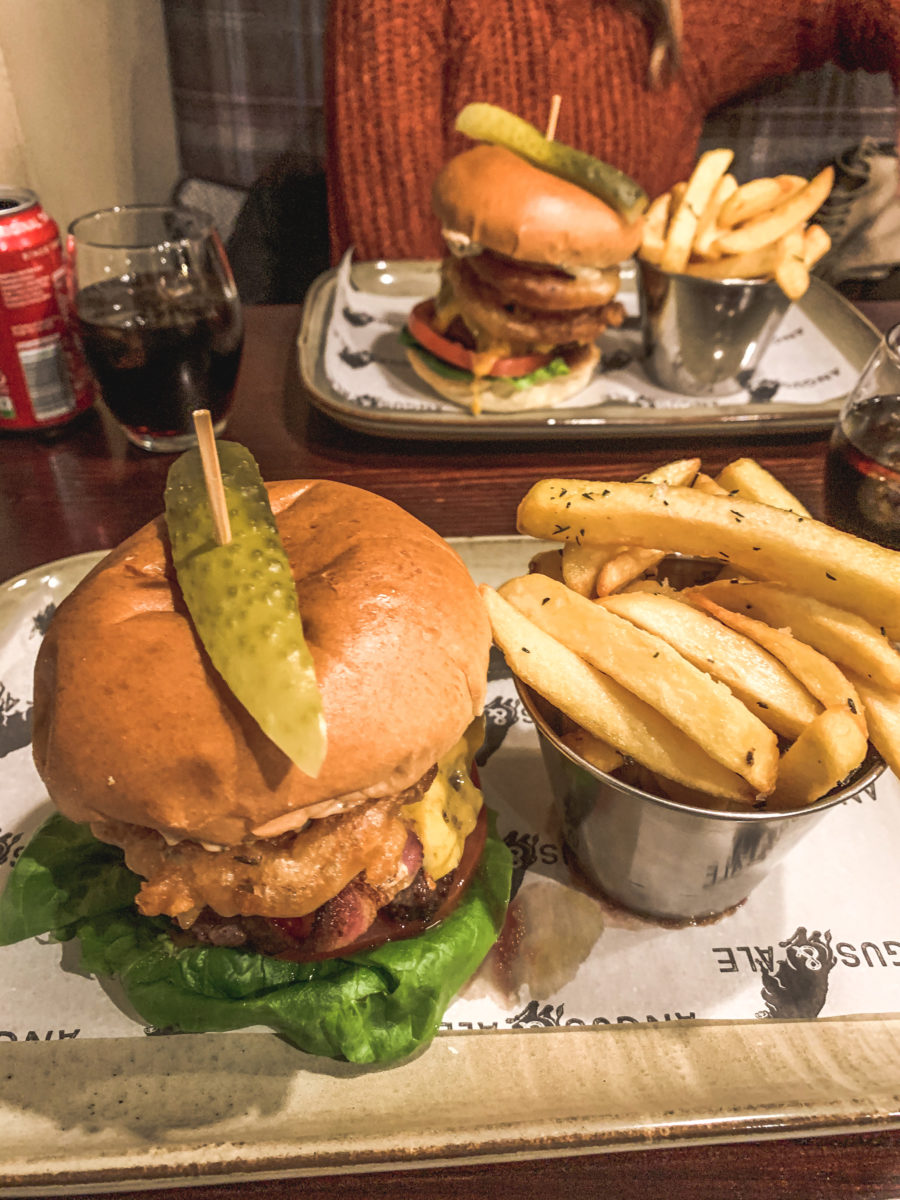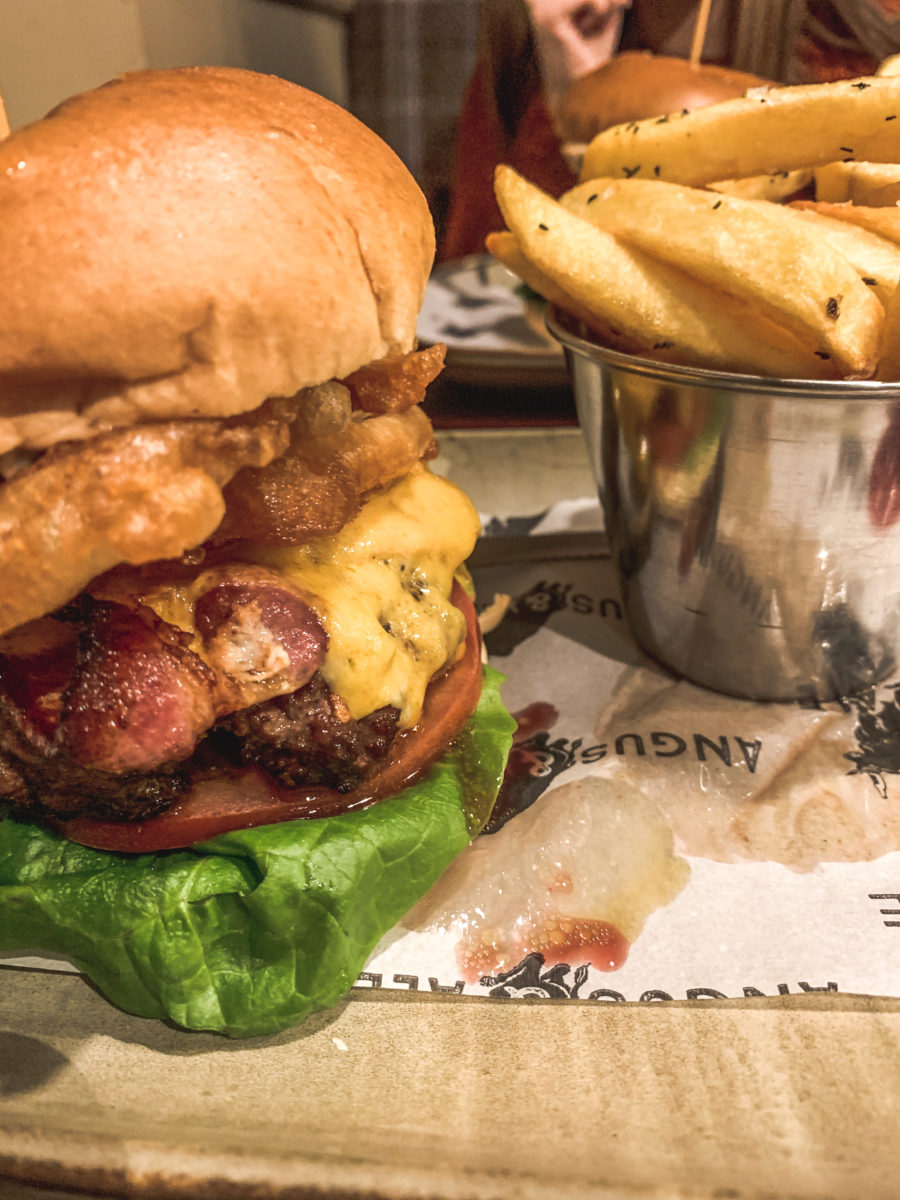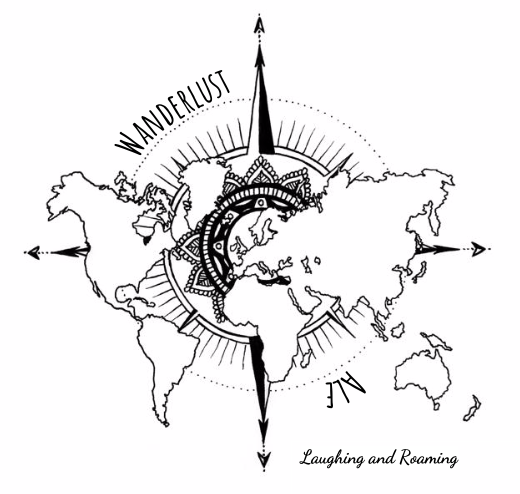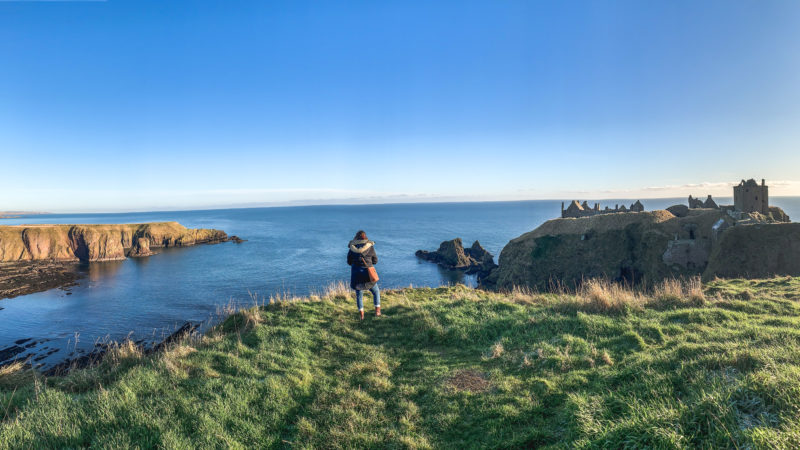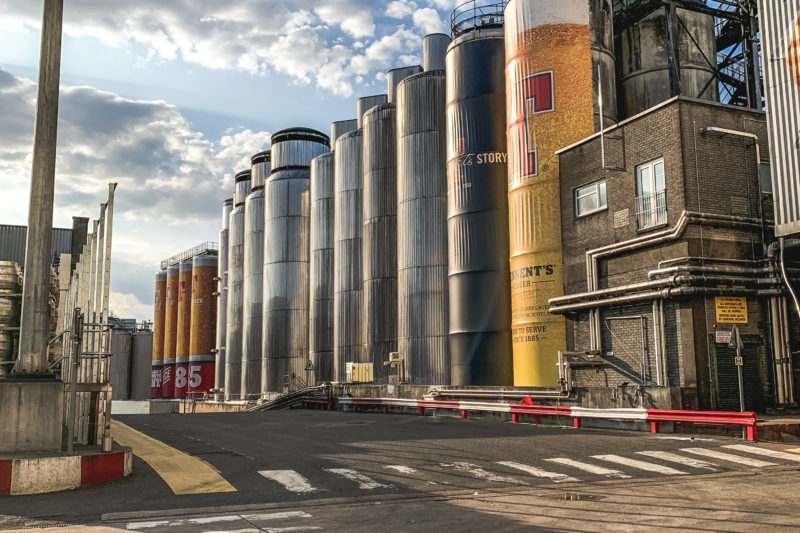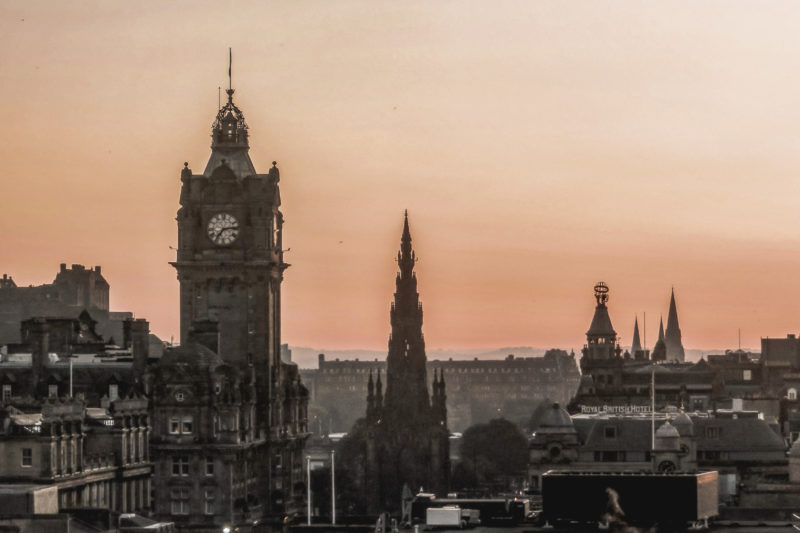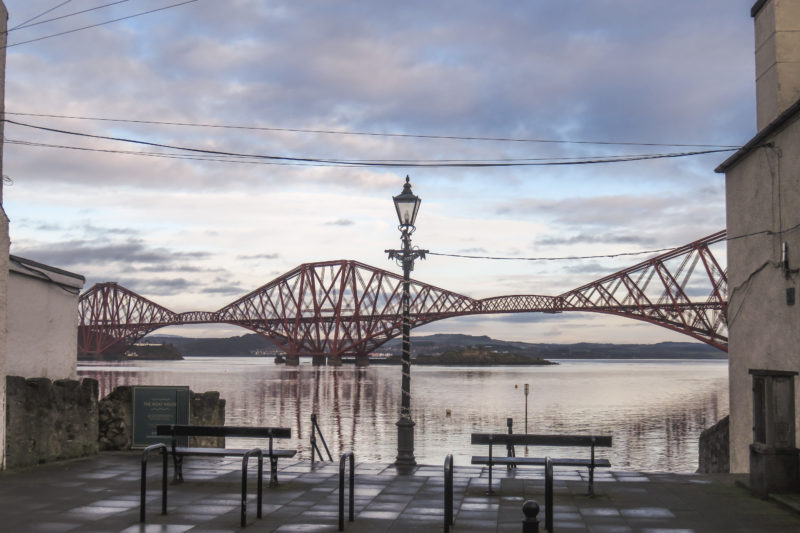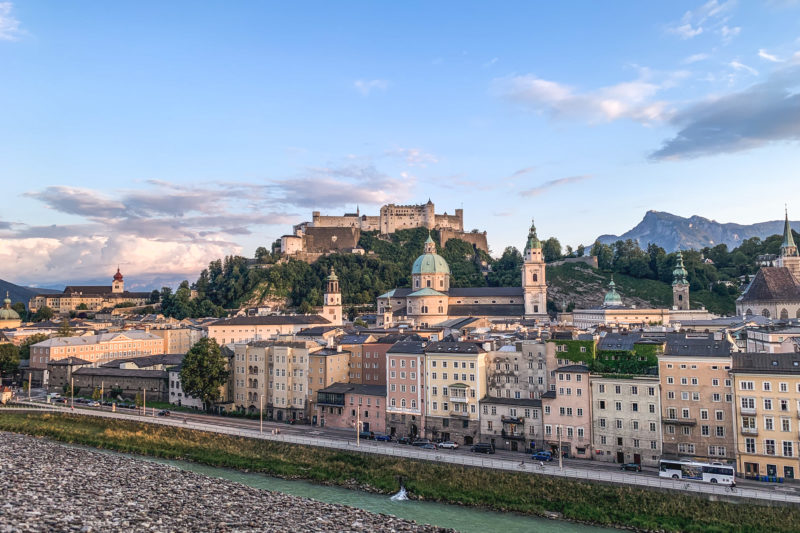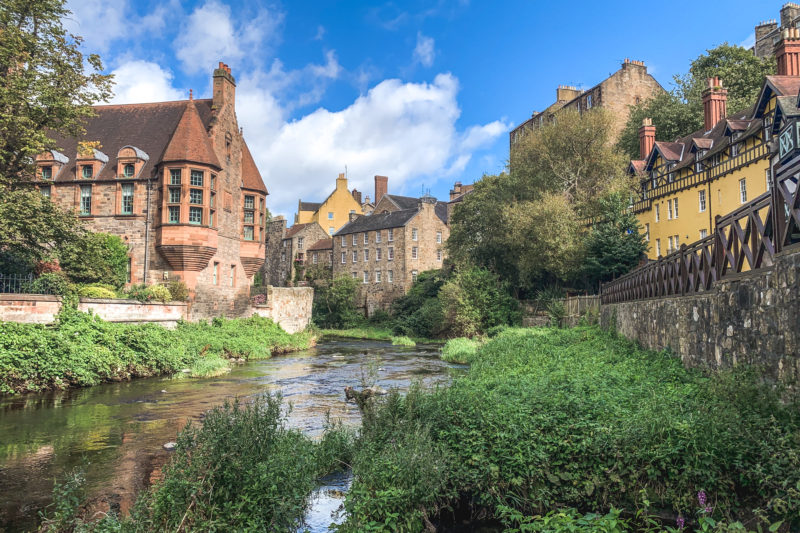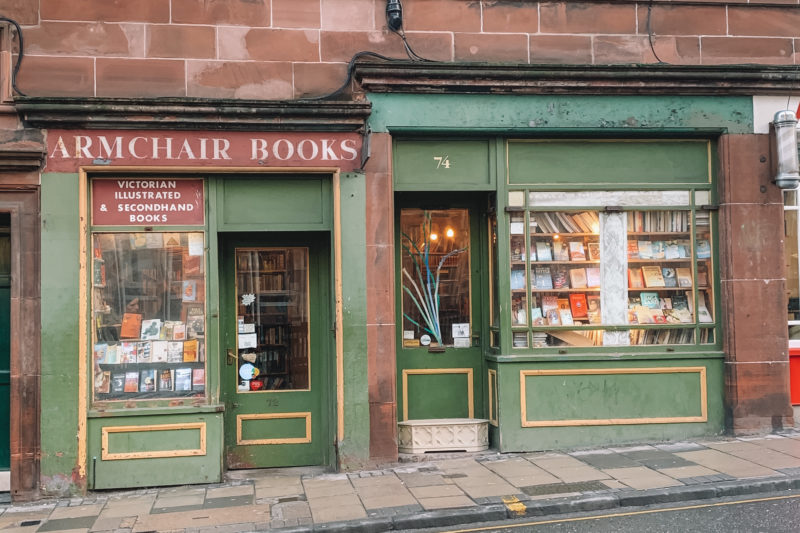The Scottish Highlands is the region not to be missed when visiting Scotland, yet another area whose landscapes and assets are to be valued is sometimes overlooked. During several trips from Edinburgh, I had the chance to discover picturesque and authentic places in the northeast of Scotland, such as Fife and Aberdeen districts. Places that deserve more exploration but which, without a car, are sometimes difficult to access.
So, instead, I set out to discover a few towns by means of a guided tour from Edinburgh and another day by train. A change of scenery from the beautiful capital.

Fife
The fishing villages of Fife
There are many companies offering guided tours for all tastes. In search of unusual landscapes, we chose to head east, where a series of cute little fishing villages are nestled on quiet, sun-drenched beaches (mostly in summer).
So, with my Swiss travel companion, before returning home, we decided to take a guided tour of Fife and St. Andrews. We took this trip from Edinburgh with Rabbie’s Tour. I highly recommend it. And then, even after 4 months living in Scotland, I was still surprised by the strong accent of our guide. It was as if I couldn’t understand a word.
What is always interesting when I undertake group activities like this is the sharing of being with people from all walks of life. We had been living in Scotland for a few months, but we were the two Swiss “tourists” surrounded by American and German tourists, discovering a particular part of Scottish culture, the fishing villages of Fife.
Our programme was as follows, according to the company’s official website Rabbie’s Tour :
«Contrast elegant architecture with sweeping coastal views. Compare the ruins of a wind-swept castle with the curves of an ancient golf course. And visit Scottish villages and towns that offer far more than their small size should allow.»
- First stop : South Queensferry
- Second stop : Anstruther
- Third stop : St Andrew
- Fourth stop : Falkland
- Fifth stop : Loch Leven
In the end, the programme will be somewhat modified in view of the period in which we were doing this tour. Indeed, we were in mid-December and therefore the hours of light are not numerous, and it starts to get dark around 4 pm. So we would not have the opportunity to see Loch Leven which was the place where Mary Stuart was imprisoned. The place I was most looking forward to, given my interest in the woman. But, well, that’s only a postponement.
So we started the tour by discovering South Queensferry. This place will be the subject of an article soon, on the getaways at less than an hour from Edinburgh, so I simply tell you that this village is known for its architectural monument, Scottish emblem: The Forth Bridge. This allows you to cross the Firth of Forth estuary to land in Fife, the object of our visit today.
This part of Scotland is officially called the Kingdom of Fife and is located in the Forth Estuary. Where the River Forth meets the North Sea, you will find five beautiful fishing villages in the Firth of Forth.
The Scottish coast of Fife is rugged and beautiful. In addition, small fishing villages are scattered as far north as St Andrews. We didn’t visit all of them, but we did stop at Anstruther, which is the best known. So, if you are planning to explore this part of Scotland, don’t hesitate to venture to Crail, Pittenweem, St. Monans and Elie.
So Anstruther is the largest of the five fishing villages, with a bustling harbour area featuring an award-winning fish and chip restaurant and a fishing museum. So far it looked promising, but no chips were available as the area is not very touristy during winter. My lunch will have to wait until St. Andrews. Our guide advised us to try the delicious ice cream from the village ice cream parlour, a rather paradoxical idea, but having been in Scotland for a while, nothing surprised me anymore. Not really warmed up, with the strong wind that seemed to want to turn the whole of Scotland upside down, we decided to skip the ice cream and go explore the village docks as we only had about 20 minutes in Anstruther (pronounced Enster by the locals).
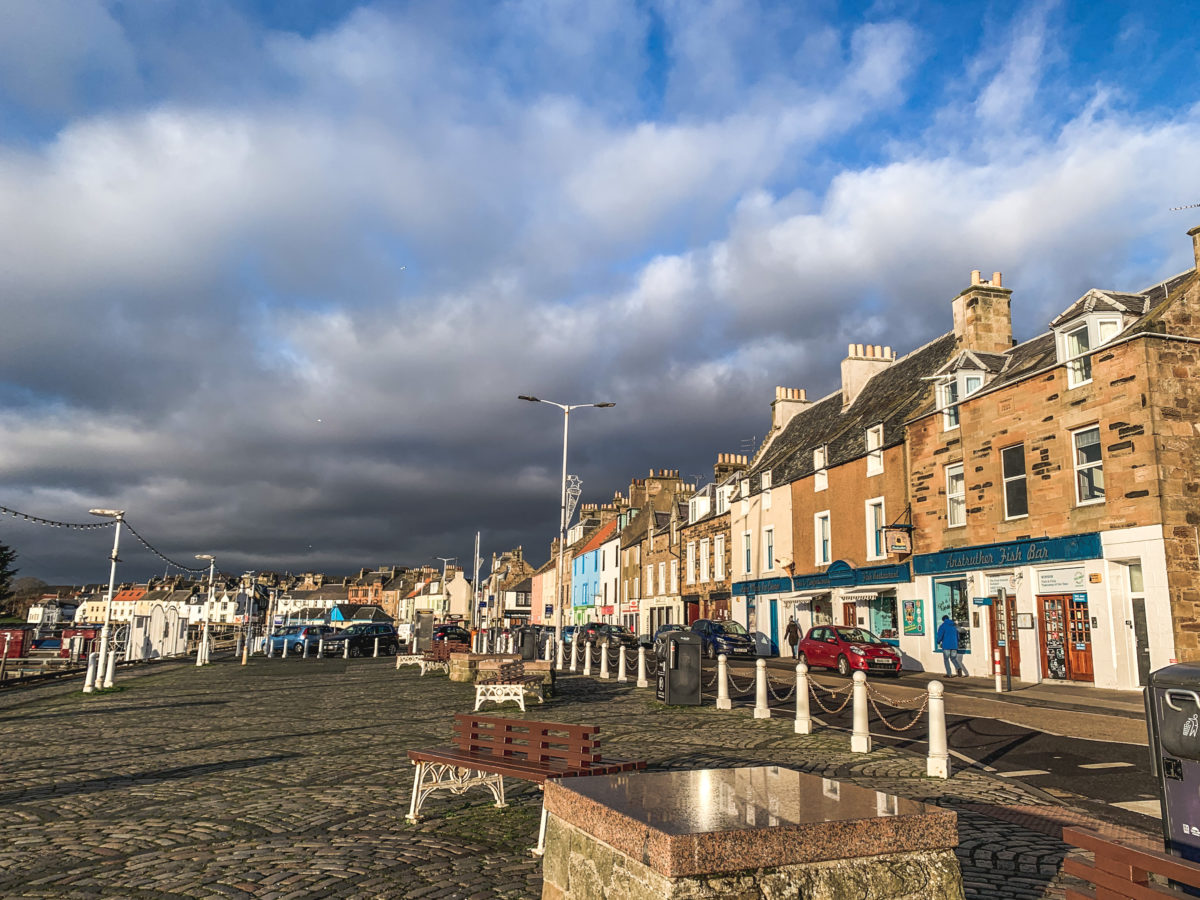
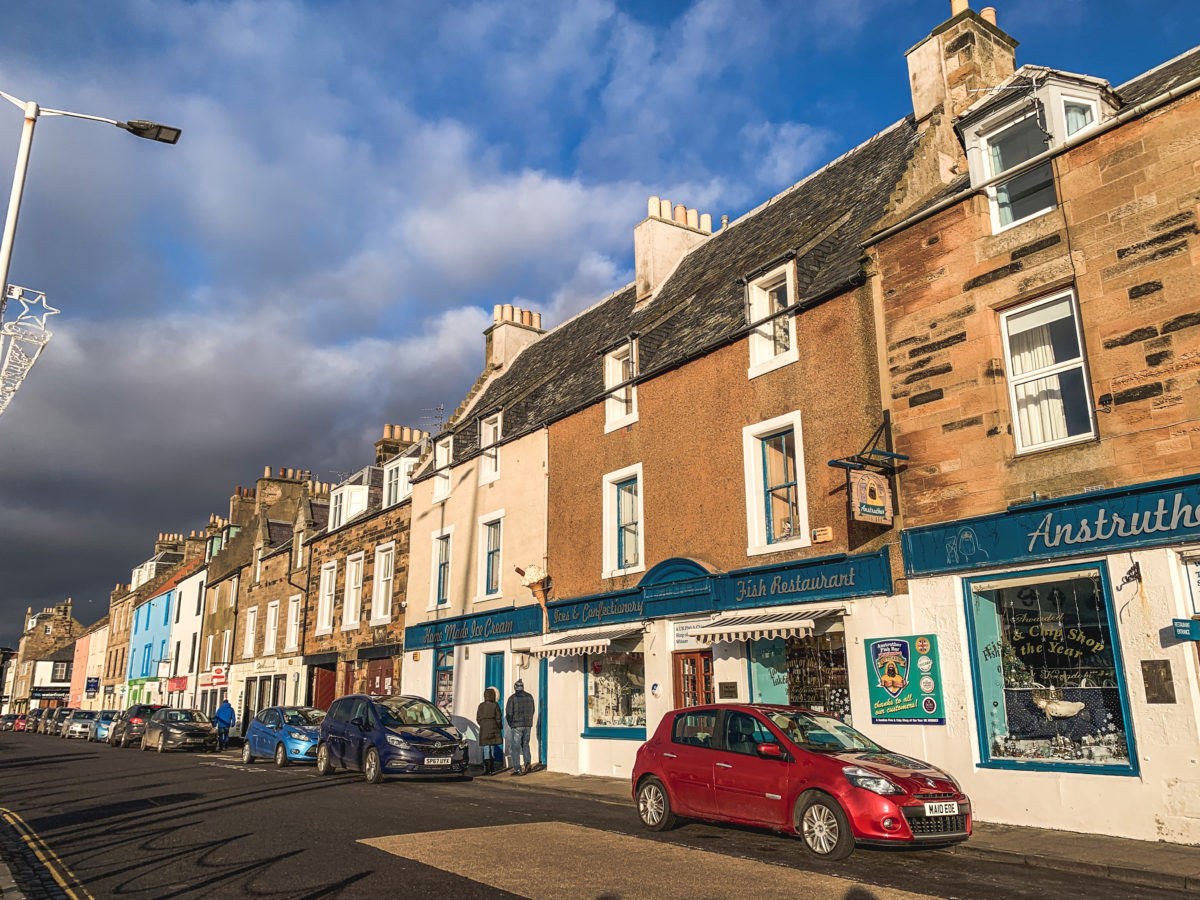
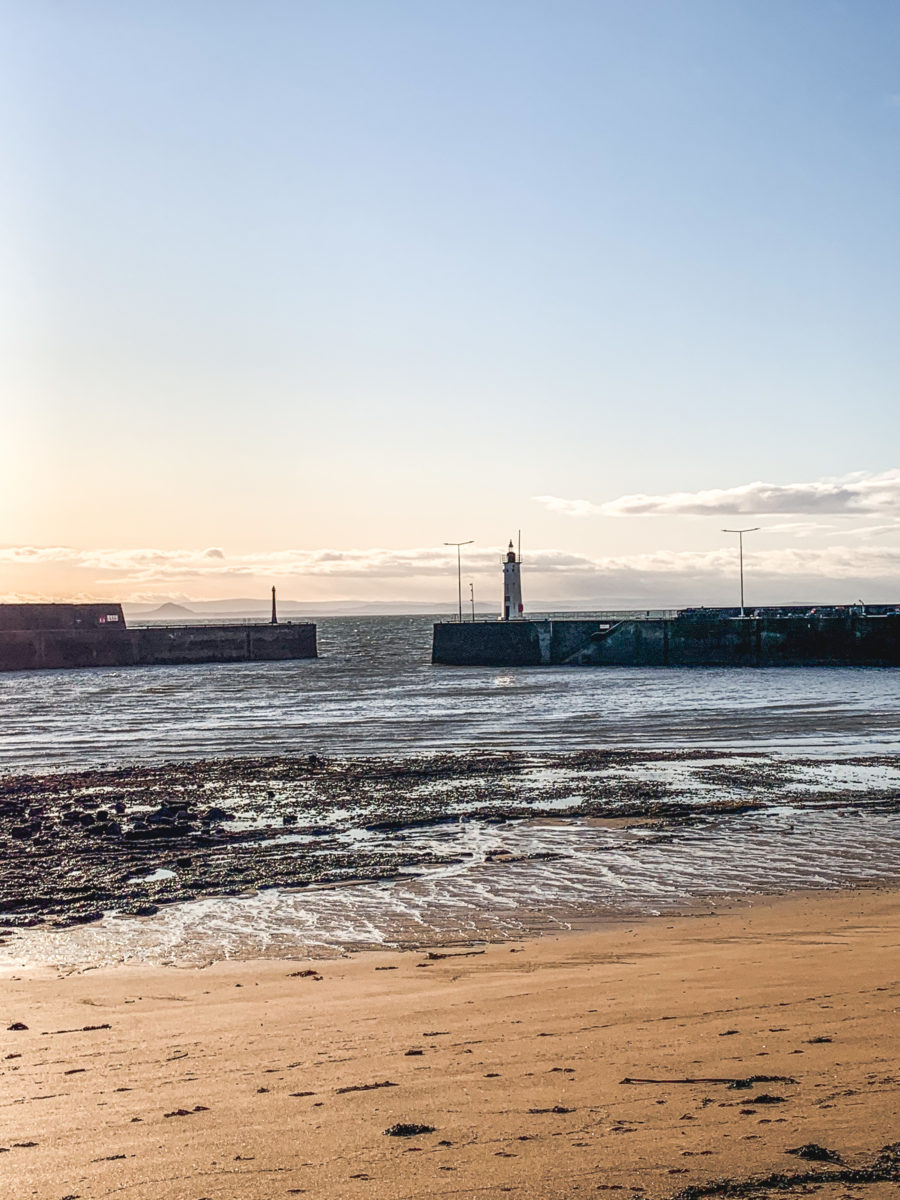

This is perhaps one of the disadvantages of taking part in organized tours, that of not being free to roam wherever you want. The schedule is precise, and you don’t want to be late. I wanted to explore a bit of Scotland, and this was the only way to do it at the time.

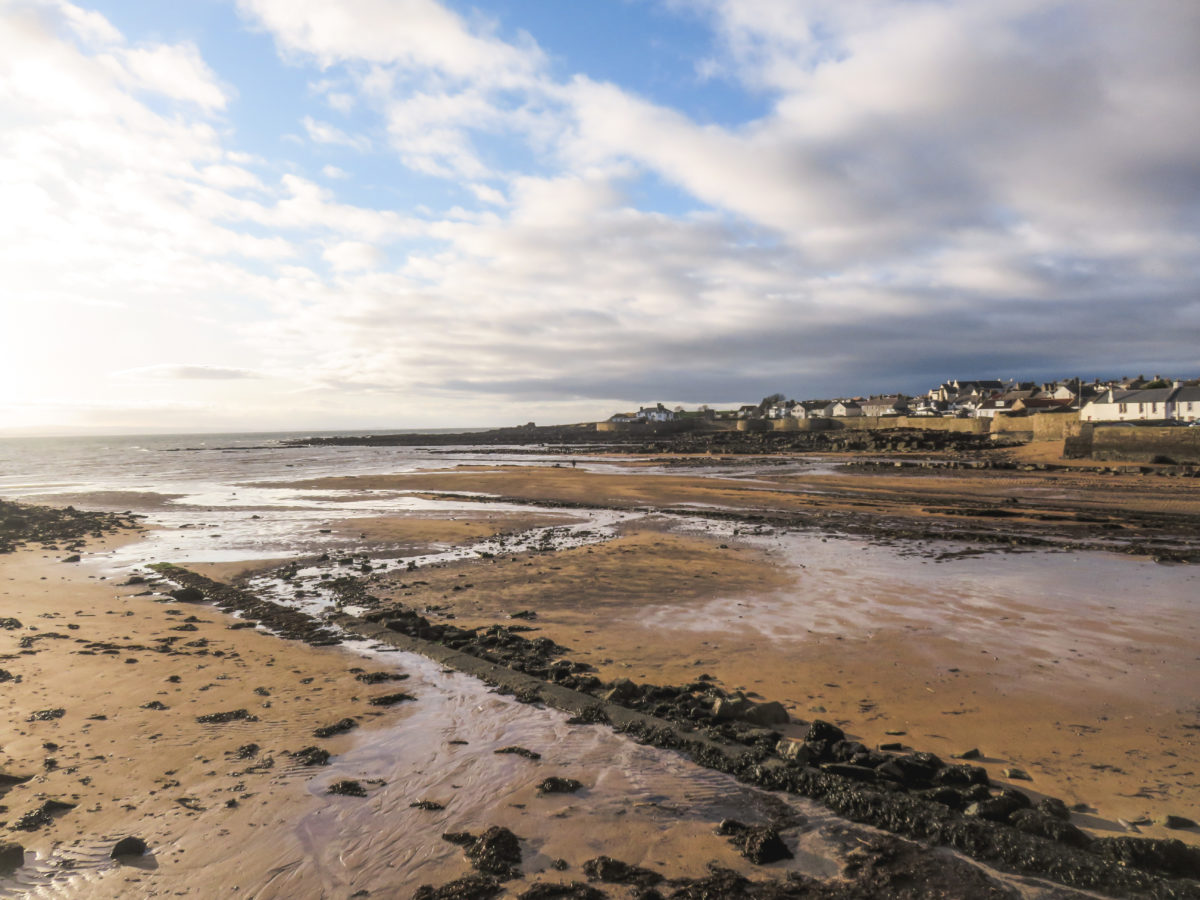
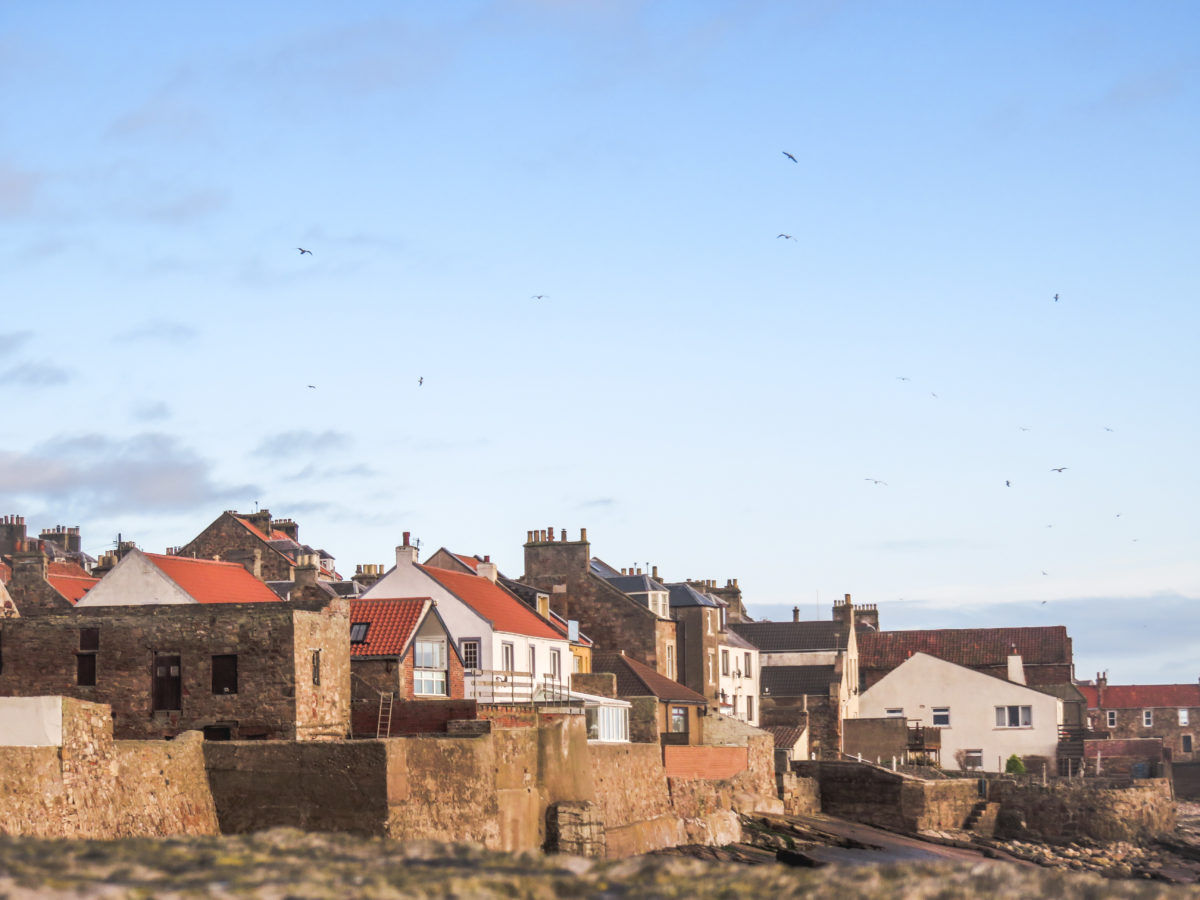
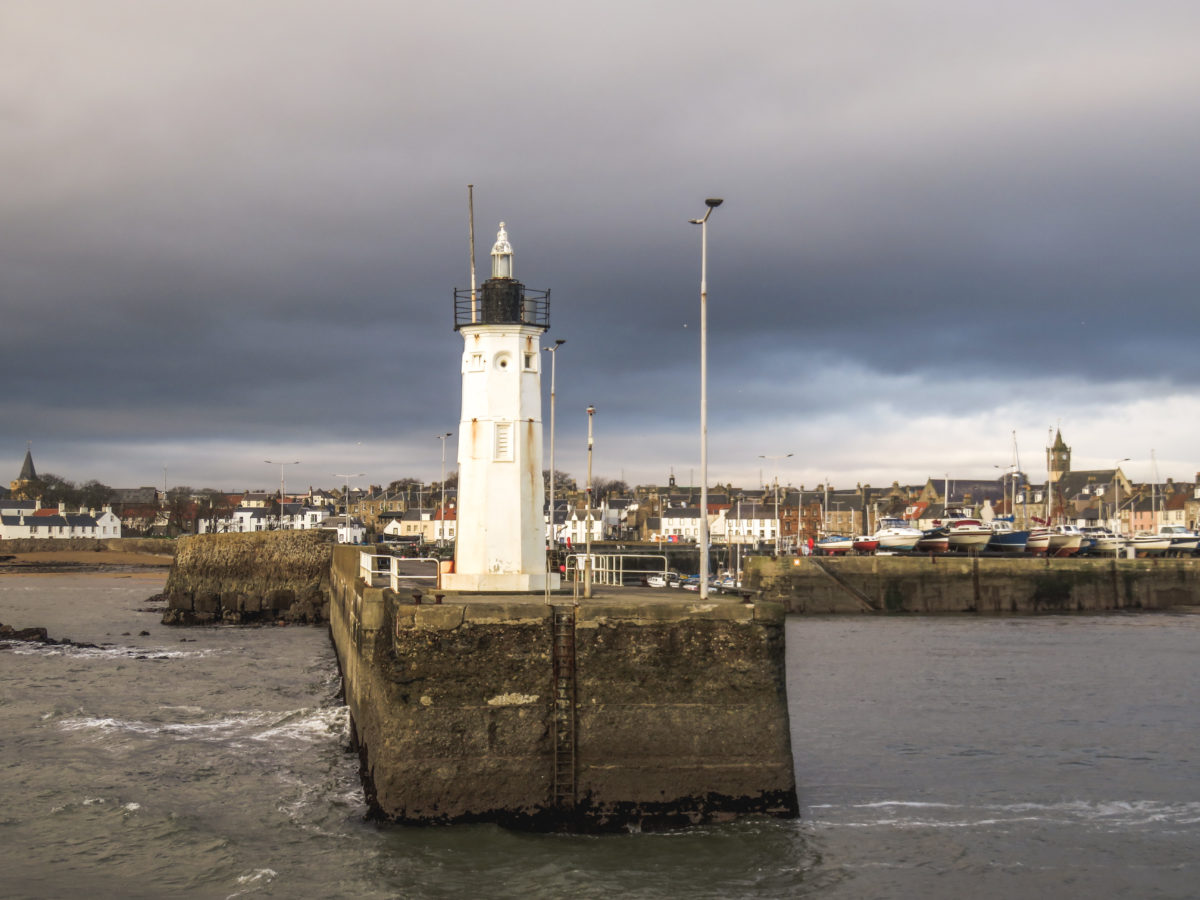
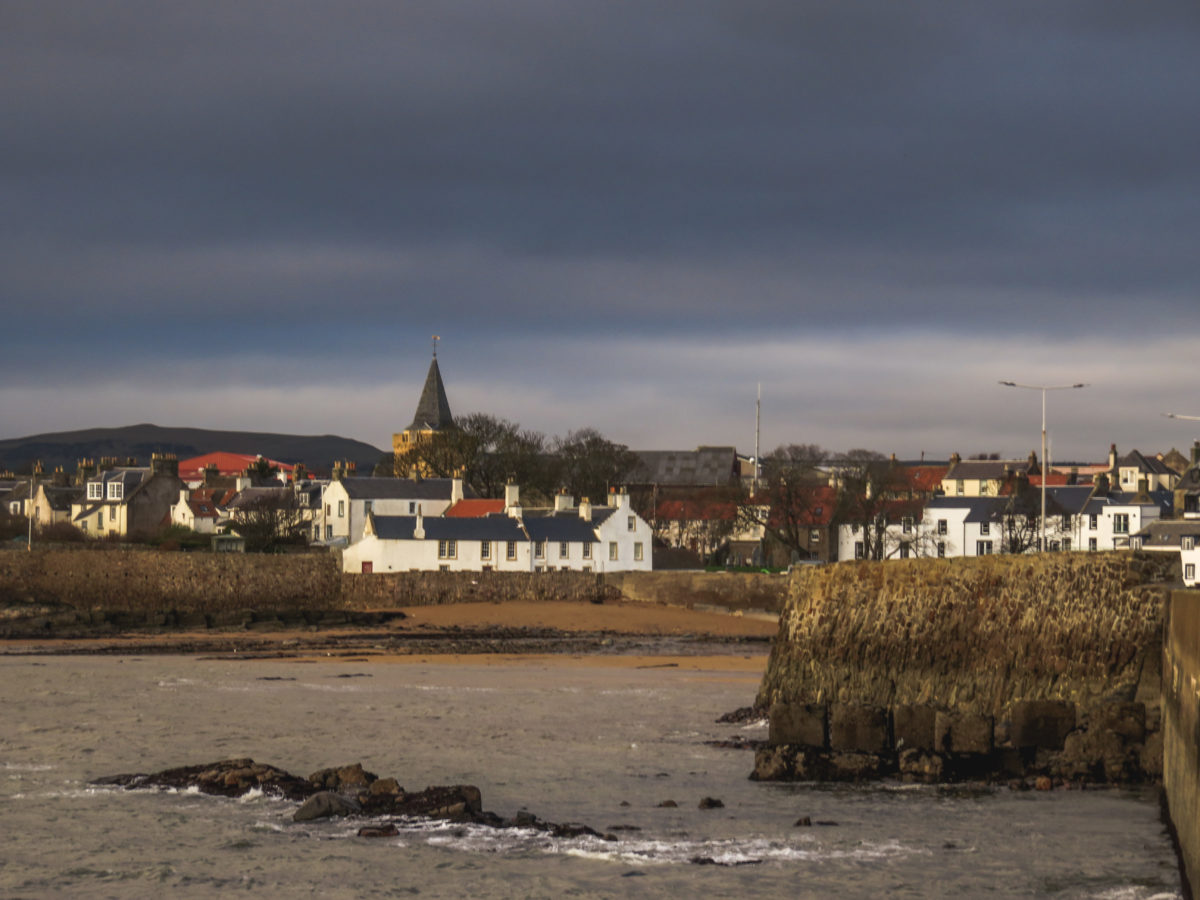

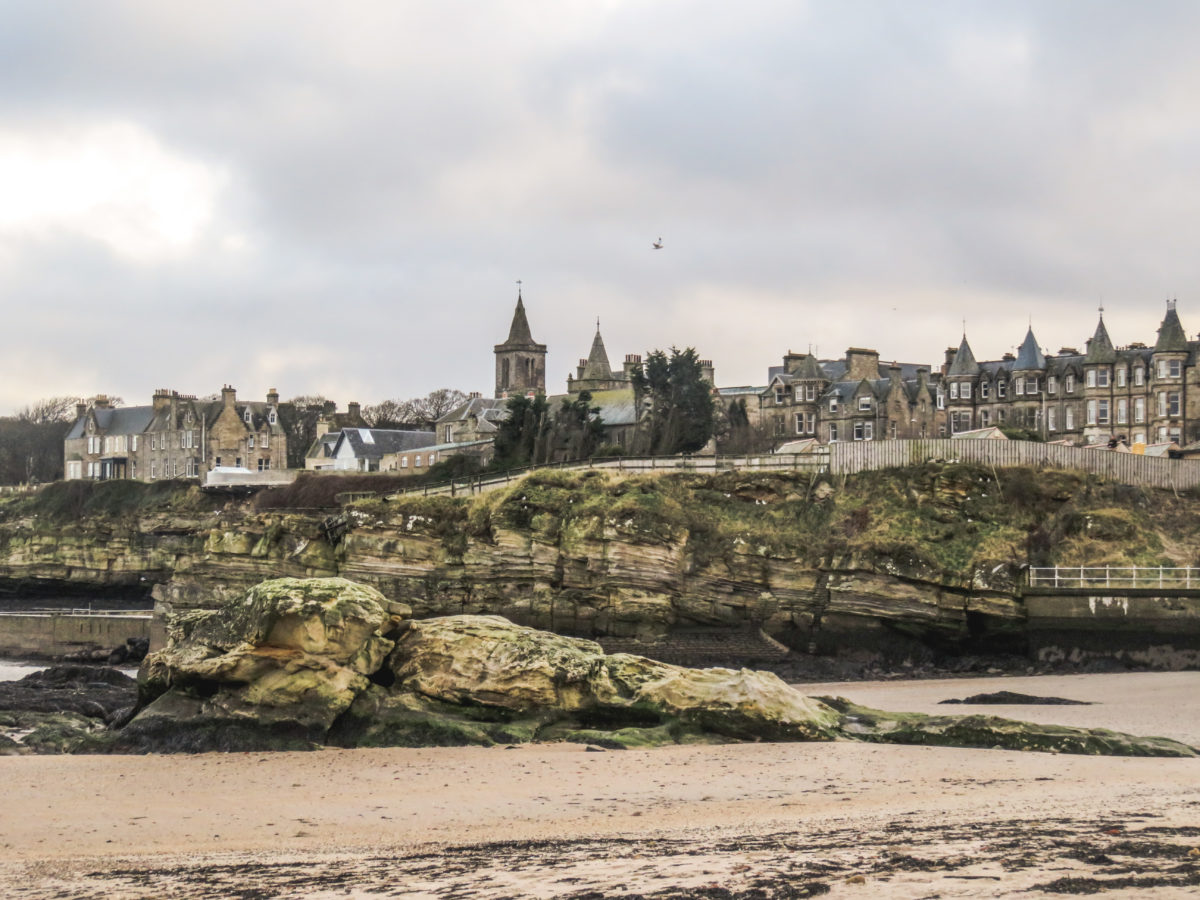
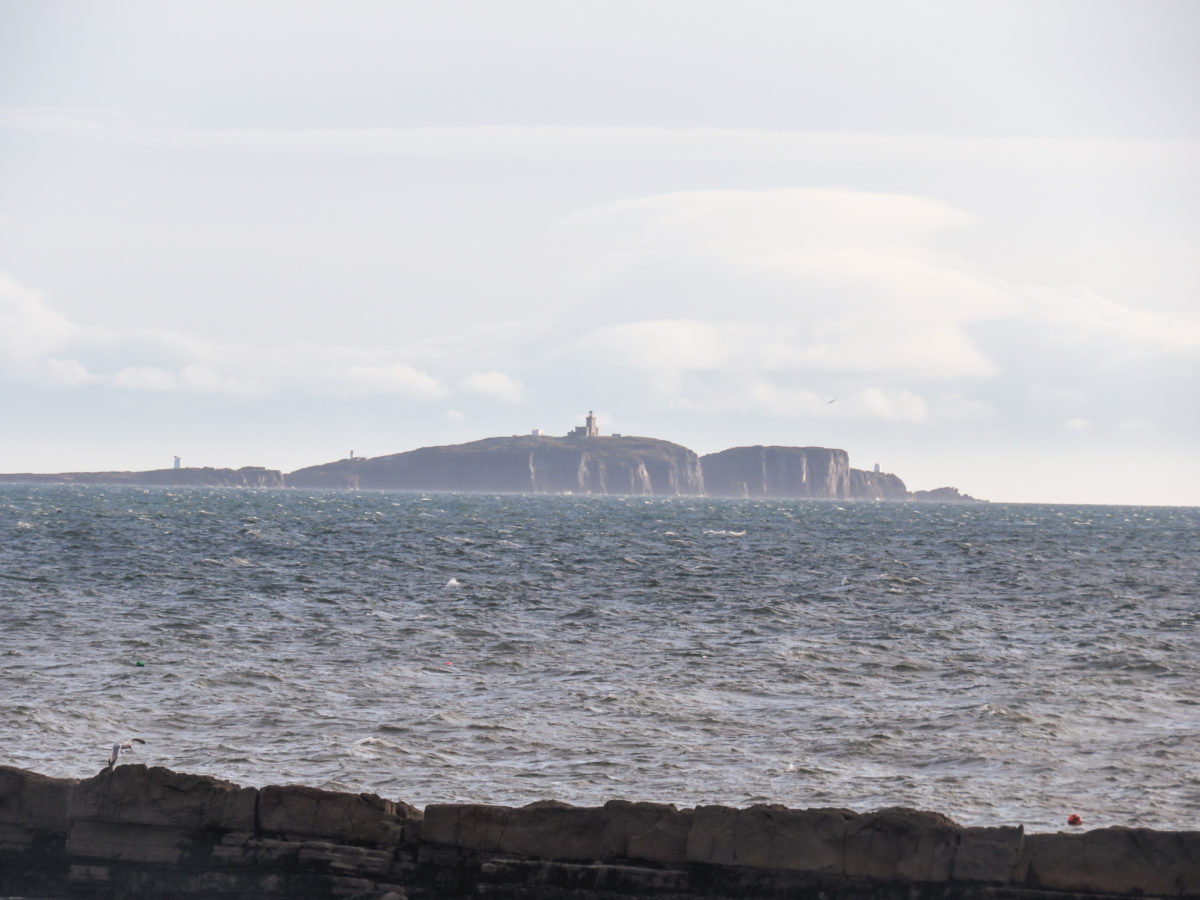
We didn’t have the opportunity to visit the village’s main attraction, the renowned fishing museum. Anstruther is also a valued place because you can take a boat trip to the Isle of May, where, depending on the season, you can see all sorts of birds, the most famous of which are of course the puffins.
But hey, it wasn’t time to take the boat, but rather to get back on the bus, frozen from a cool temperature and see our American friends, in shorts, quietly eating ice cream. We are not all alike.
St Andrews
The Scottish town of St Andrews is world-famous for one thing: golf! I don’t pretend to understand this sport by any means, as it doesn’t particularly appeal to me, at least not in practice. But there is always an interest in knowing what goes on around a famous sporting activity, especially the fact that in St. Andrews you can get away with playing the oldest courses in the world. I prefer miniature golf, but this is not associated with the town of Fife. Indeed, it is known as the home of golf and has no less than ten courses, including the Old Course, one of the oldest in the world, which lives up to its name. Golf enthusiasts can also visit the nearby British Golf Museum, which is where the bus dropped us off, but as I only had 2 hours in the city, I preferred to focus on the heritage and cultural side of what it has to offer.
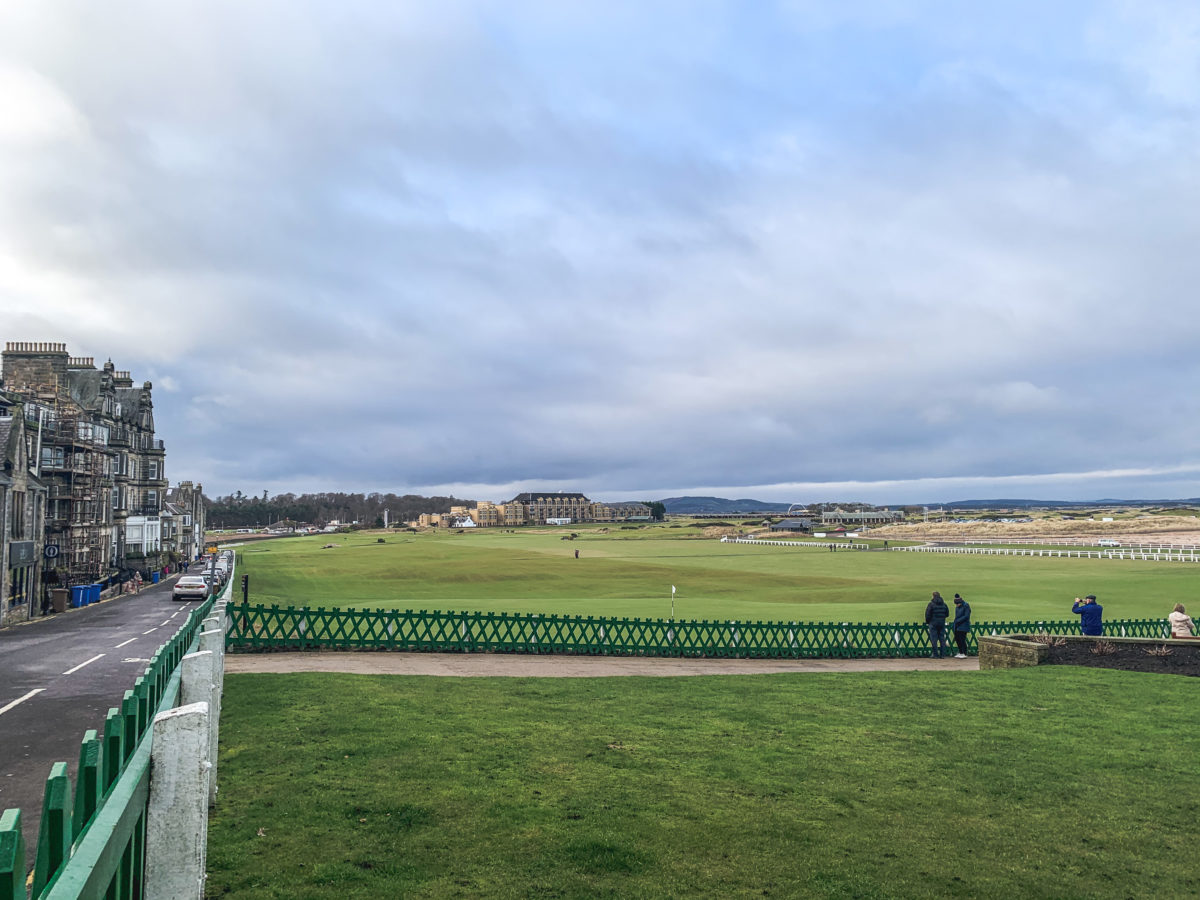

St Andrews has a unique place in Scottish heritage. The town takes its name from one of Christ’s apostles whose relics, according to legend, were brought here by St Rule. It is thus the ancient religious capital of Scotland, which has developed with a priority to establish a centre of knowledge. As a result, it has many recognized structures: Scotland’s first university, a cathedral and a historic centre. It is a very pleasant place to walk around and has everything I like in a small town. Indeed, the city is cute around every corner and is perfect for relaxing, exploring and enjoying; with historic places, independent shops, nice cafés and great beaches. All in all, I’ve discovered a little sister to Edinburgh.
The city centre is lovely, it has a branch of the Topping & Company bookshop, which was described in an article on my literary favourites through a visit of Edinburgh and Scottish bookshops. I simply advise you to wander around as you please, the centre is small, and you will always end up stumbling across a little nugget, depending on your curiosity; such as the Ryman Stationery store in Market Street or the Bouquiniste bookshop, also in the extension of Market Street.

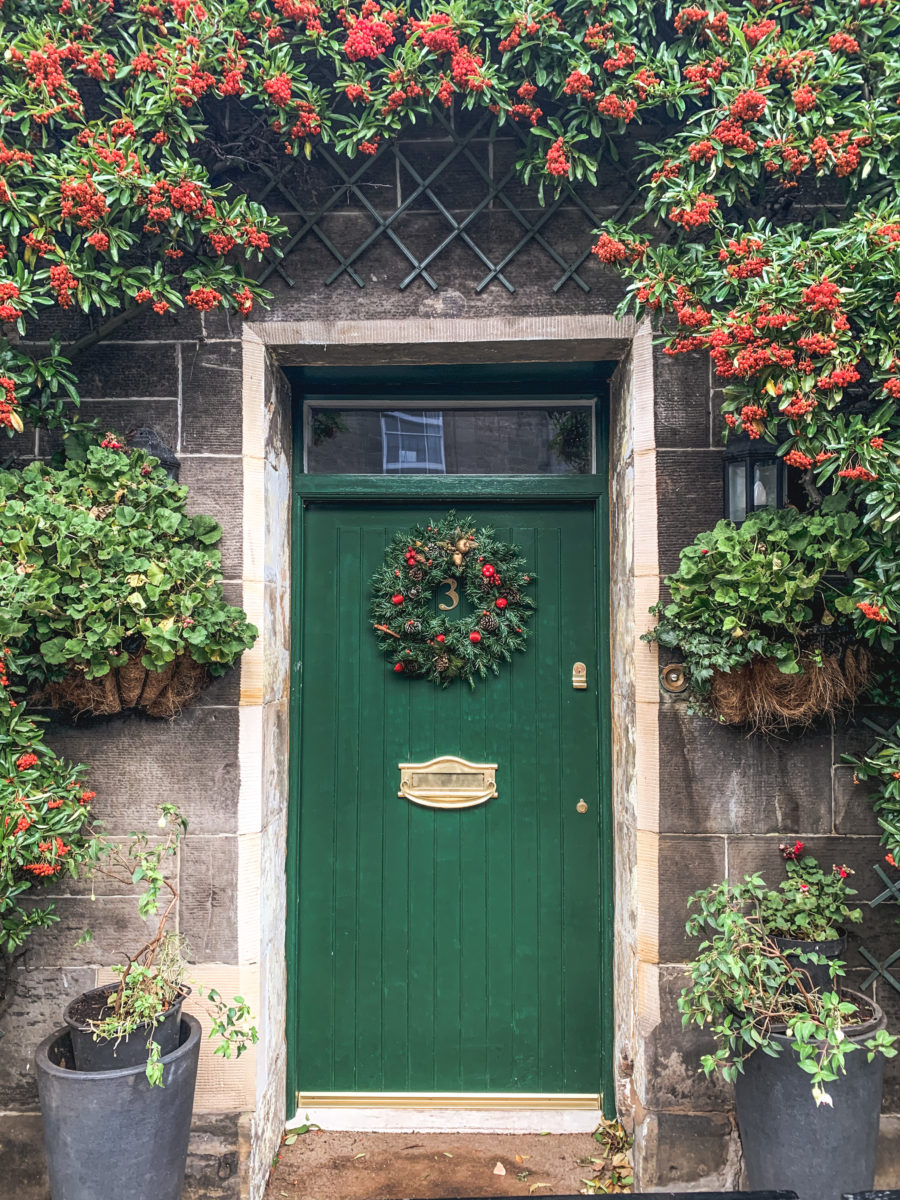
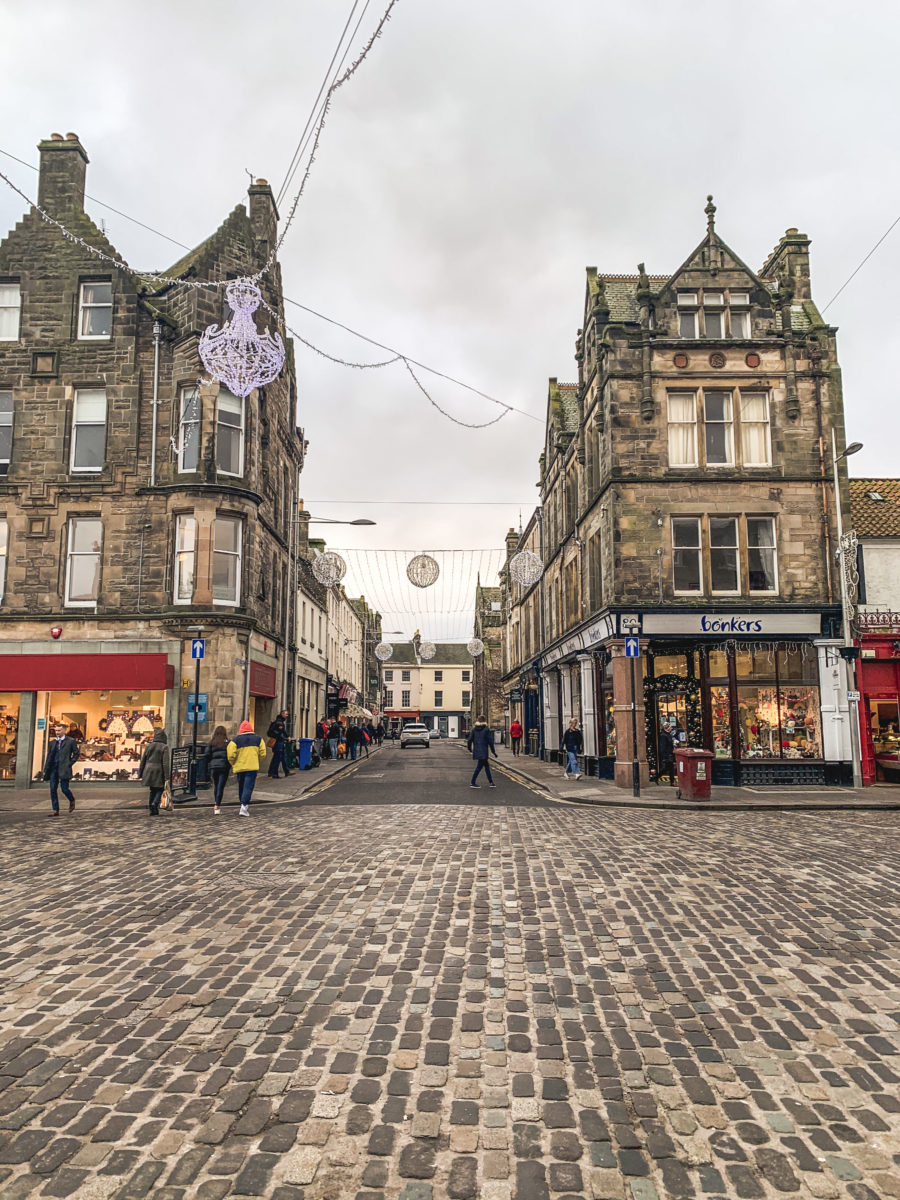


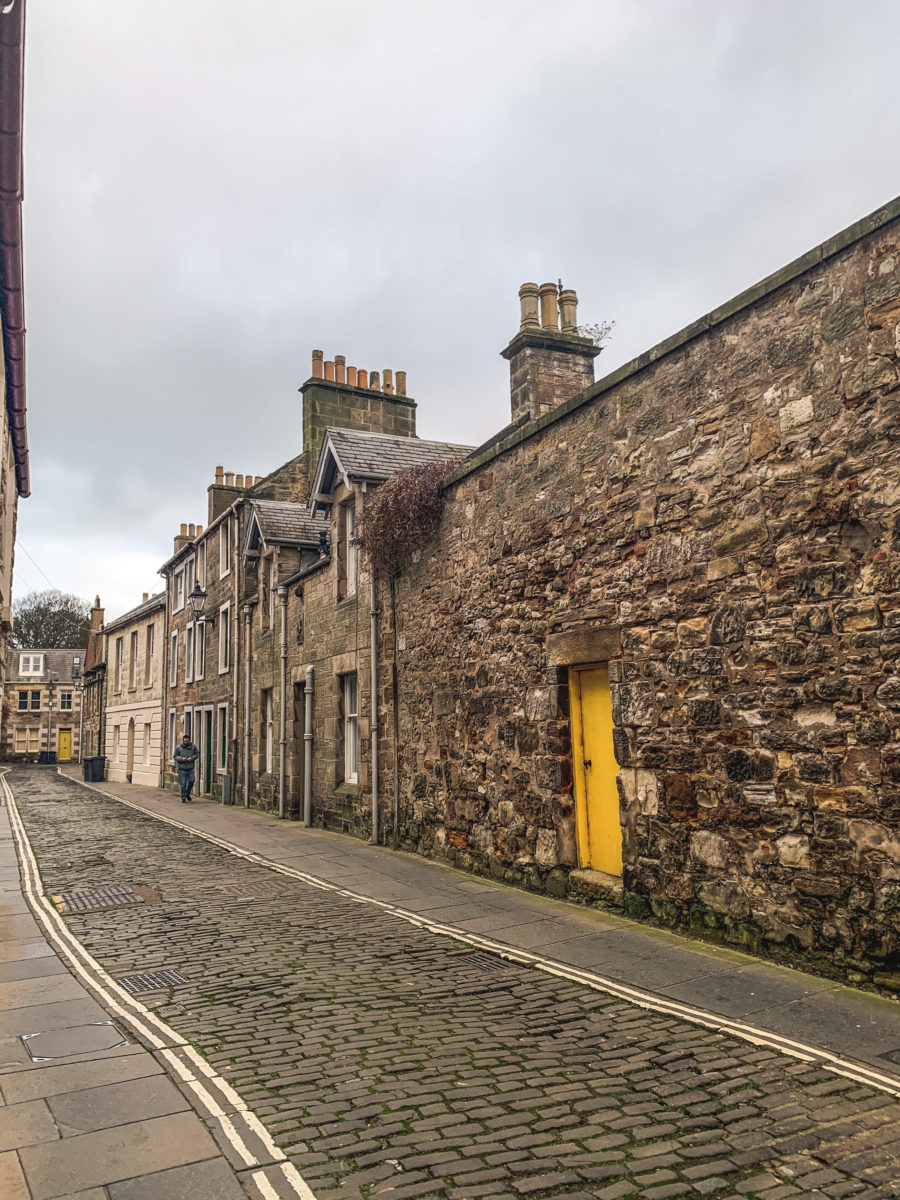
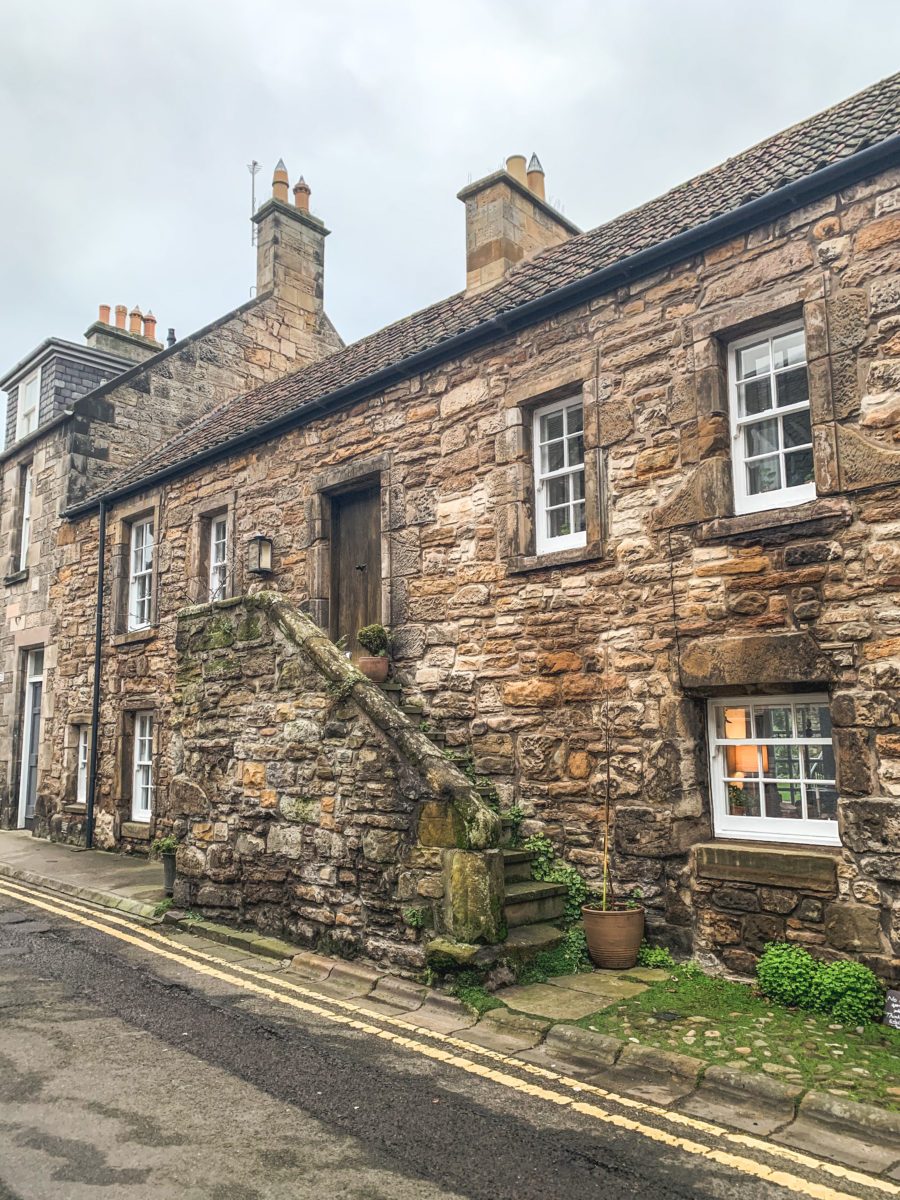
However, my favourite place was the former cathedral; former because there is not much left of it.
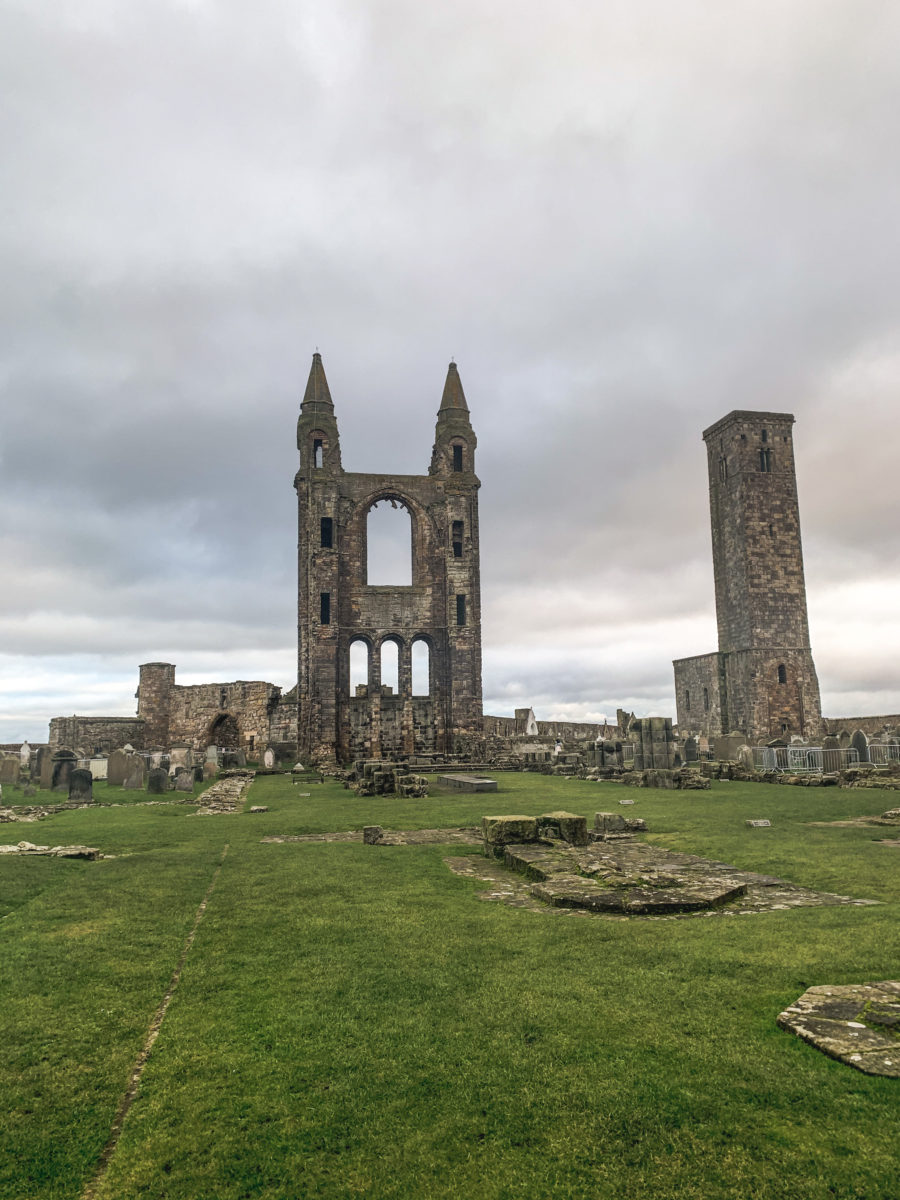
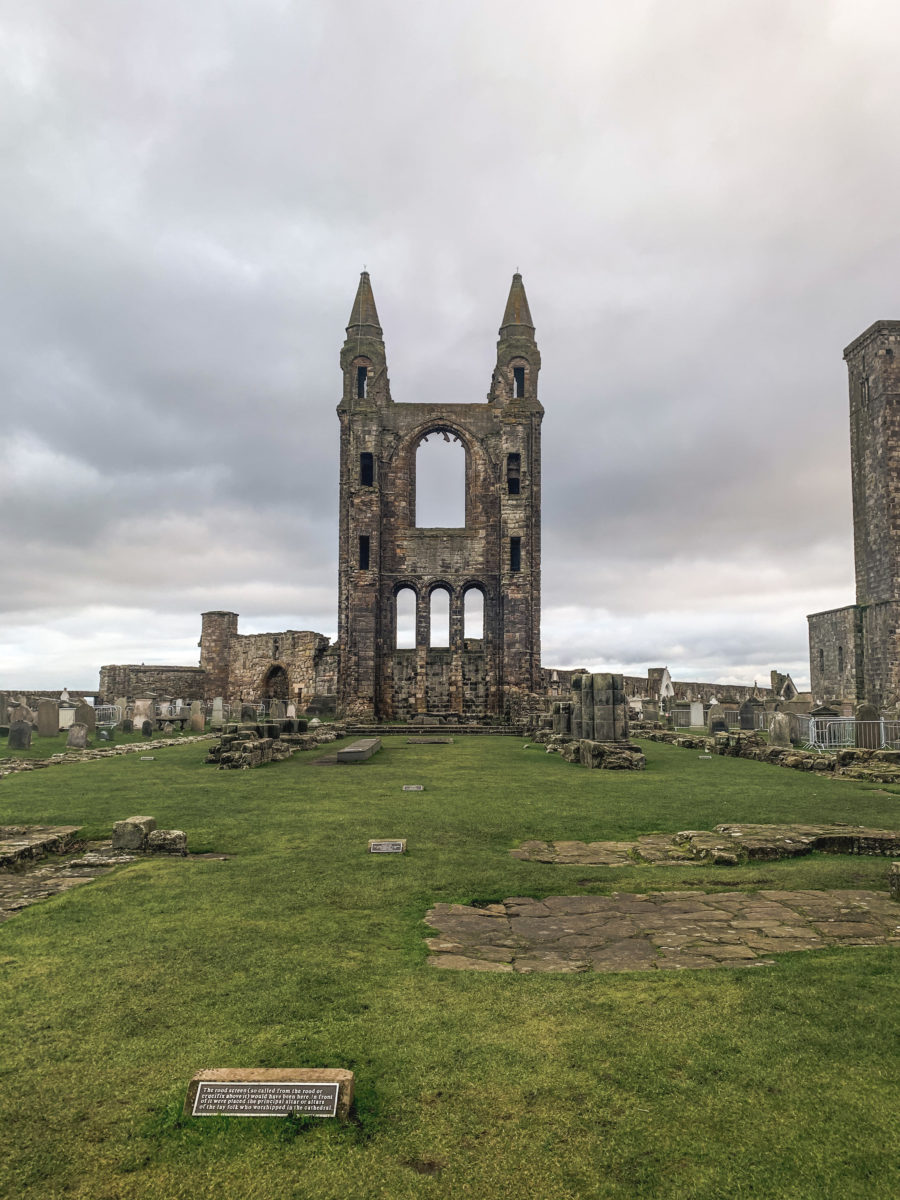
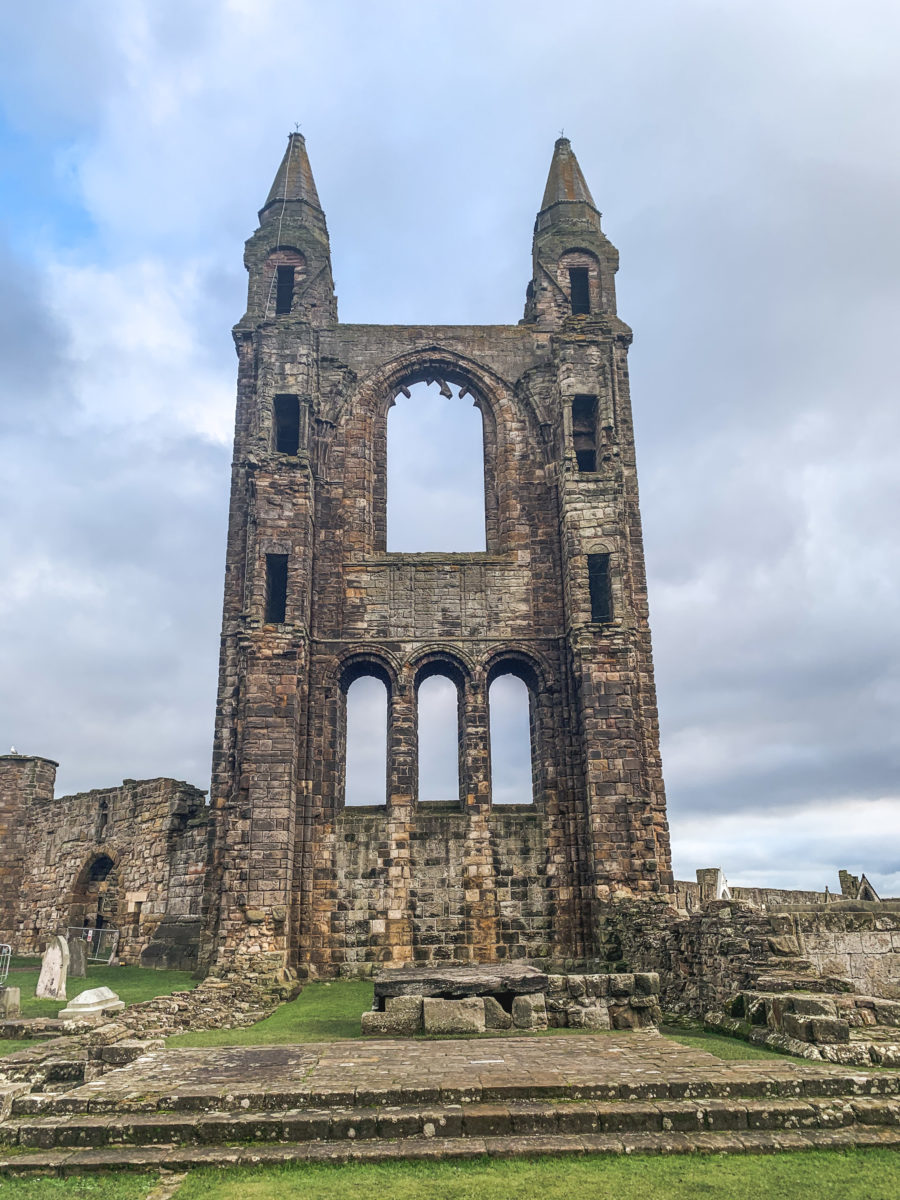
Indeed, when I saw this ruin, I wondered how it could still stand. And then it is surrounded by a rather gloomy cemetery. Everything I love! I also imagine the thousands of Scottish legends that emanate from this place, and I thought that this place would be interesting to discover, at dawn or at dusk, or during a traditional pagan festival like Samhainn, the Celtic religious festival that inspired Halloween.

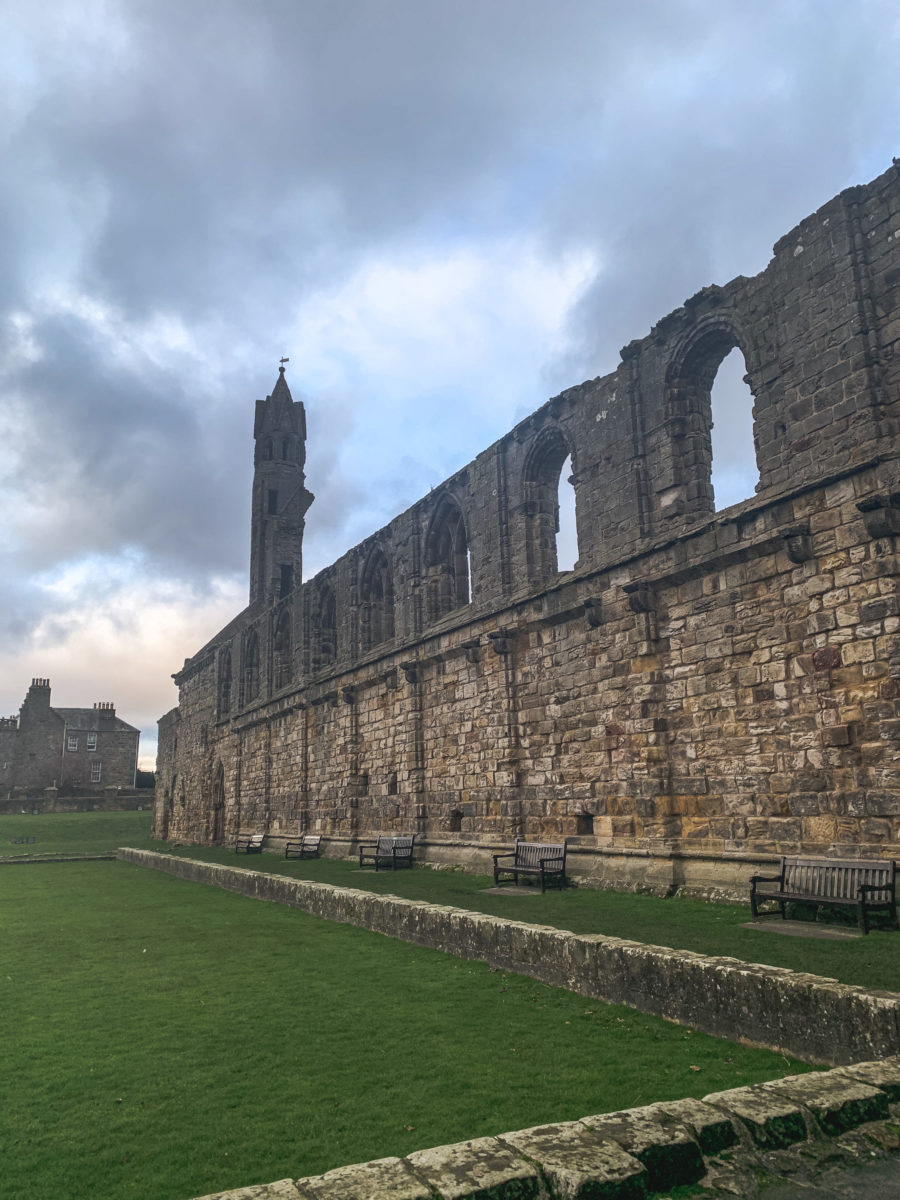
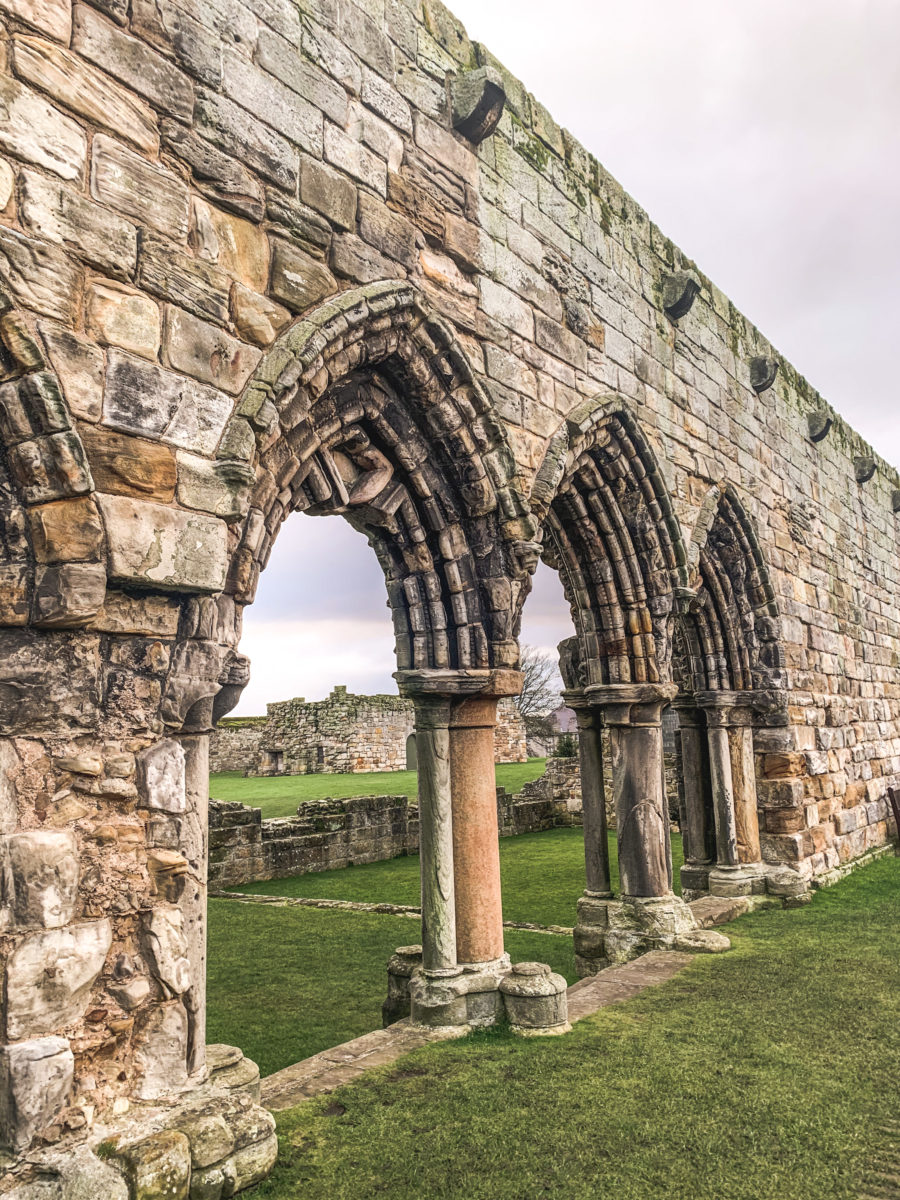
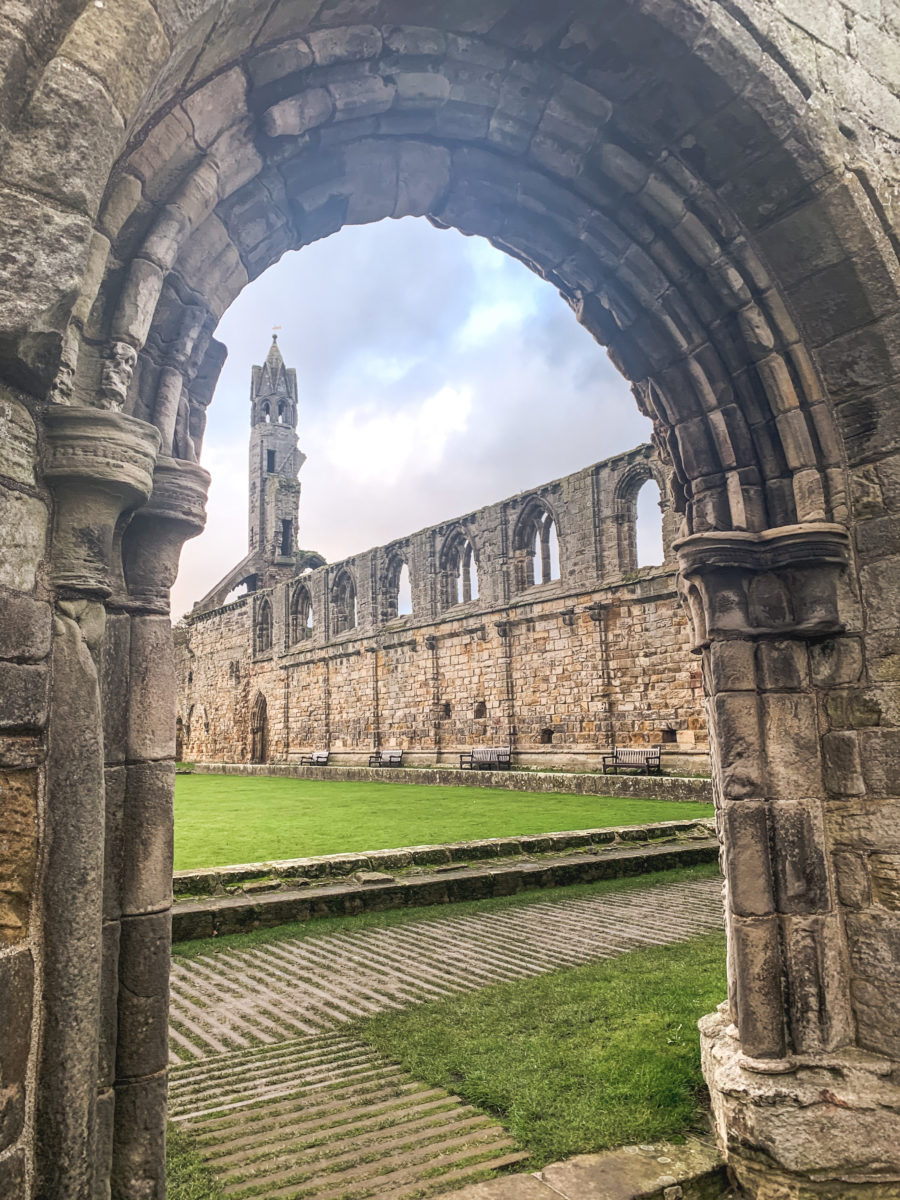

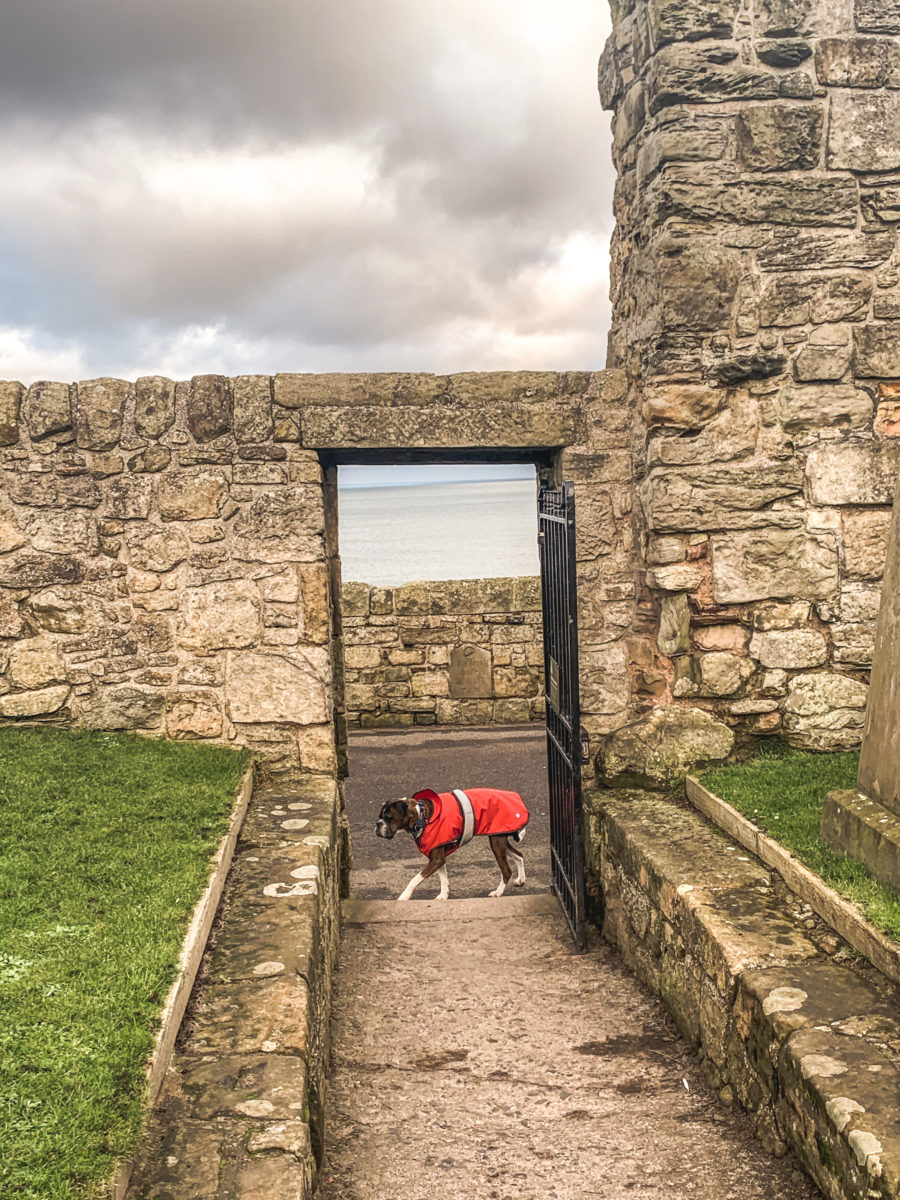
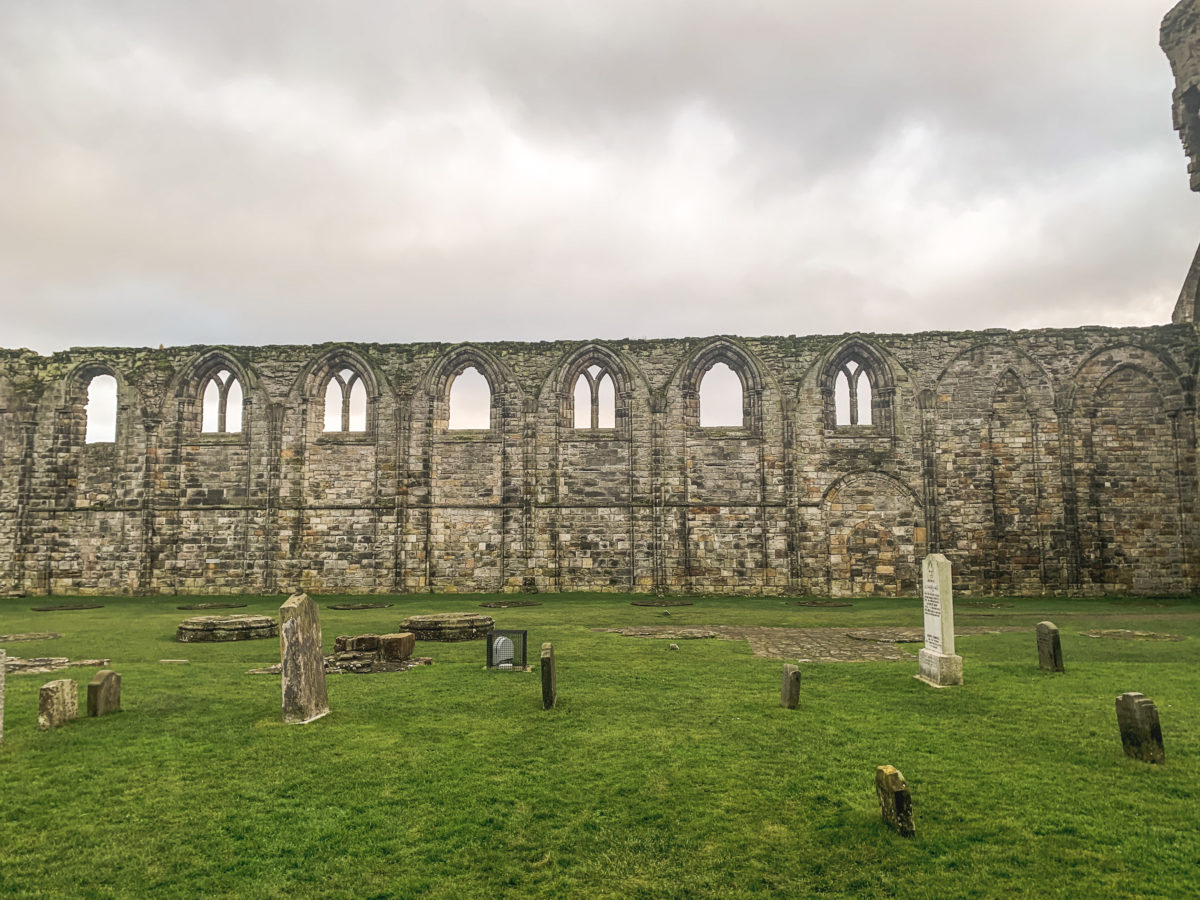
Looking at the picturesque remains of the cathedral, I could only imagine how spectacular it must have been in its former glory. Once the largest church in the whole of Scotland, it was a very important religious centre, attracting pilgrims from far and wide in centuries past. Entrance to the cathedral ruins is free, but you can pay £5 to visit the cathedral museum and climb St Rule’s tower. This looked like an interesting activity to undertake, but our tummies were screaming, and we wanted to enjoy our picnic lunch bought in Market Street instead.
Which we did at St Andrews’ harbour. Very picturesque and in the same spirit as the fishing villages we visited that morning, this place has facilitated travel and trade in St Andrews for hundreds of years. Today, small fishing boats continue to bring in much sought after local shellfish. The harbour provides a quiet and authentic place to escape from the hustle and bustle of the town. The pier is the perfect place to enjoy a good picnic, however, watch out for the seagulls, they are voracious in Scotland… And then, the colours of the boats and buildings brighten up even the darkest or rainiest of days. Because yes, as usual, the weather was typically British.
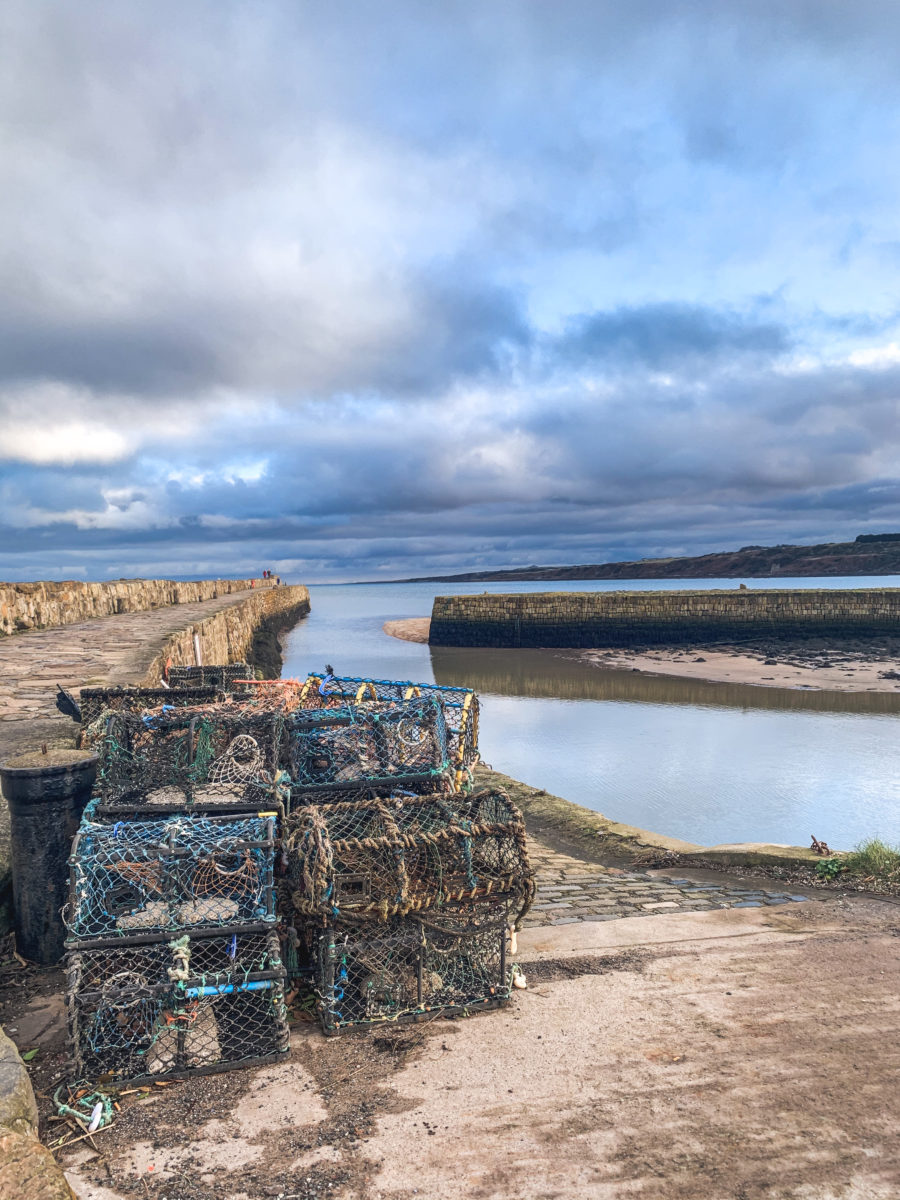

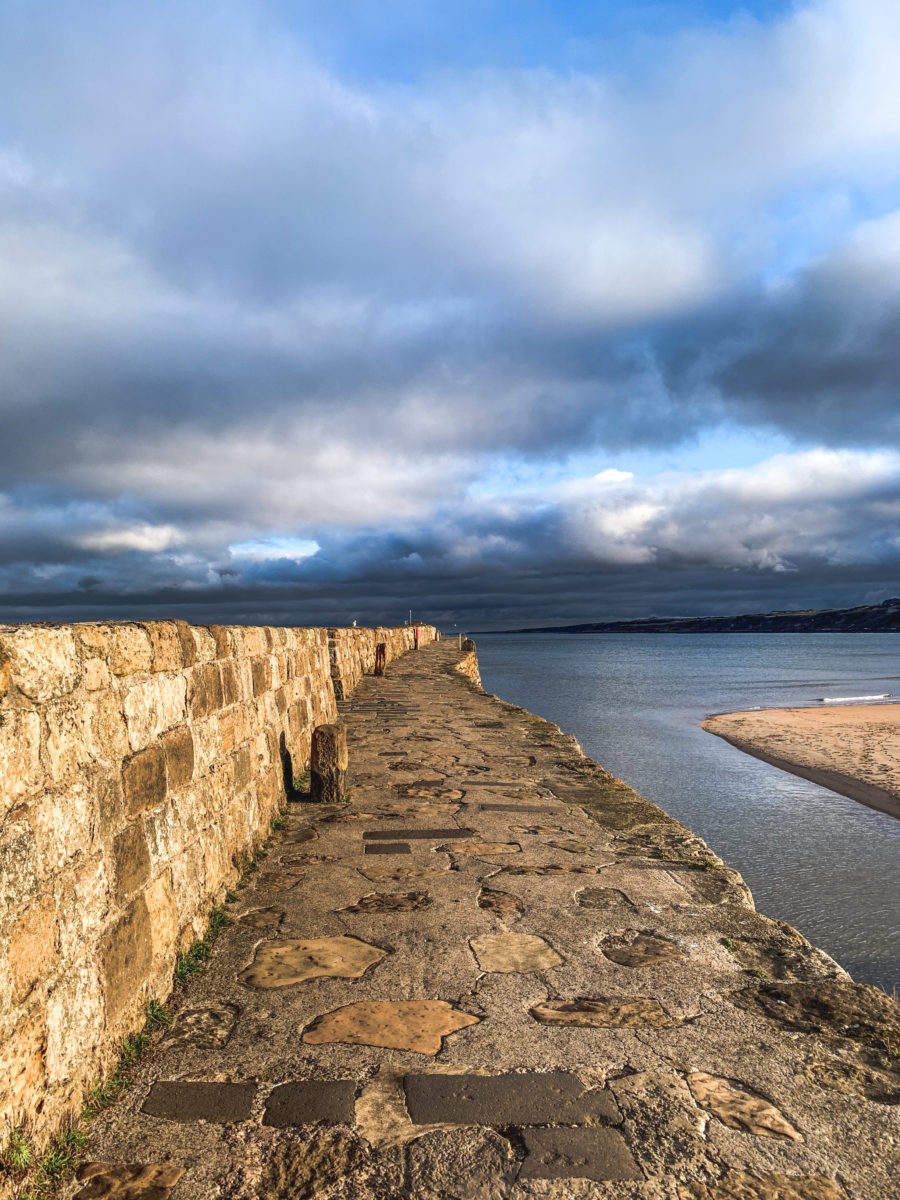
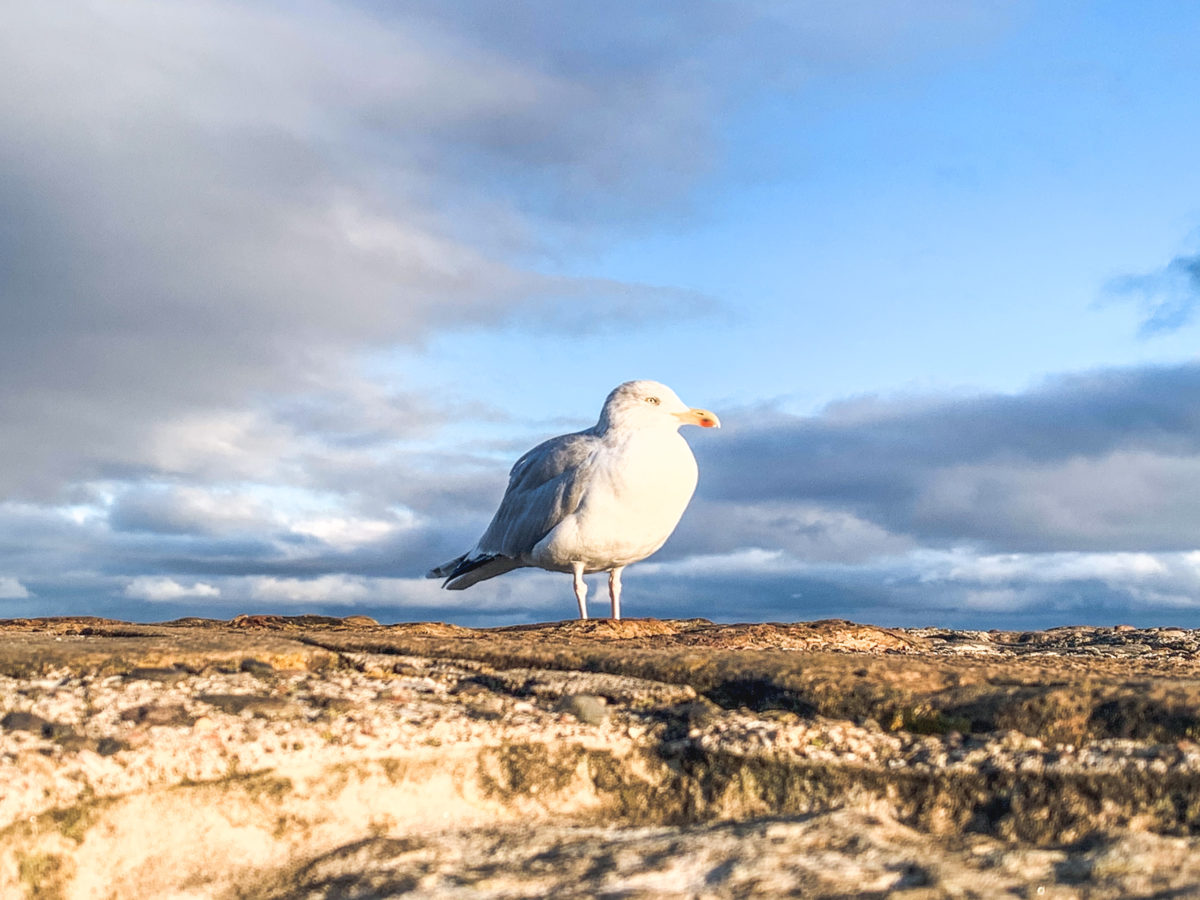
Once we had had our fill, we continued our exploration by walking along The Pends path to discover St Andrews Castle. On the way, we discovered new ruins of a castle on the shoreline, but could not put a name to it. Until we realized that it was St Andrews Castle, but from a different perspective.


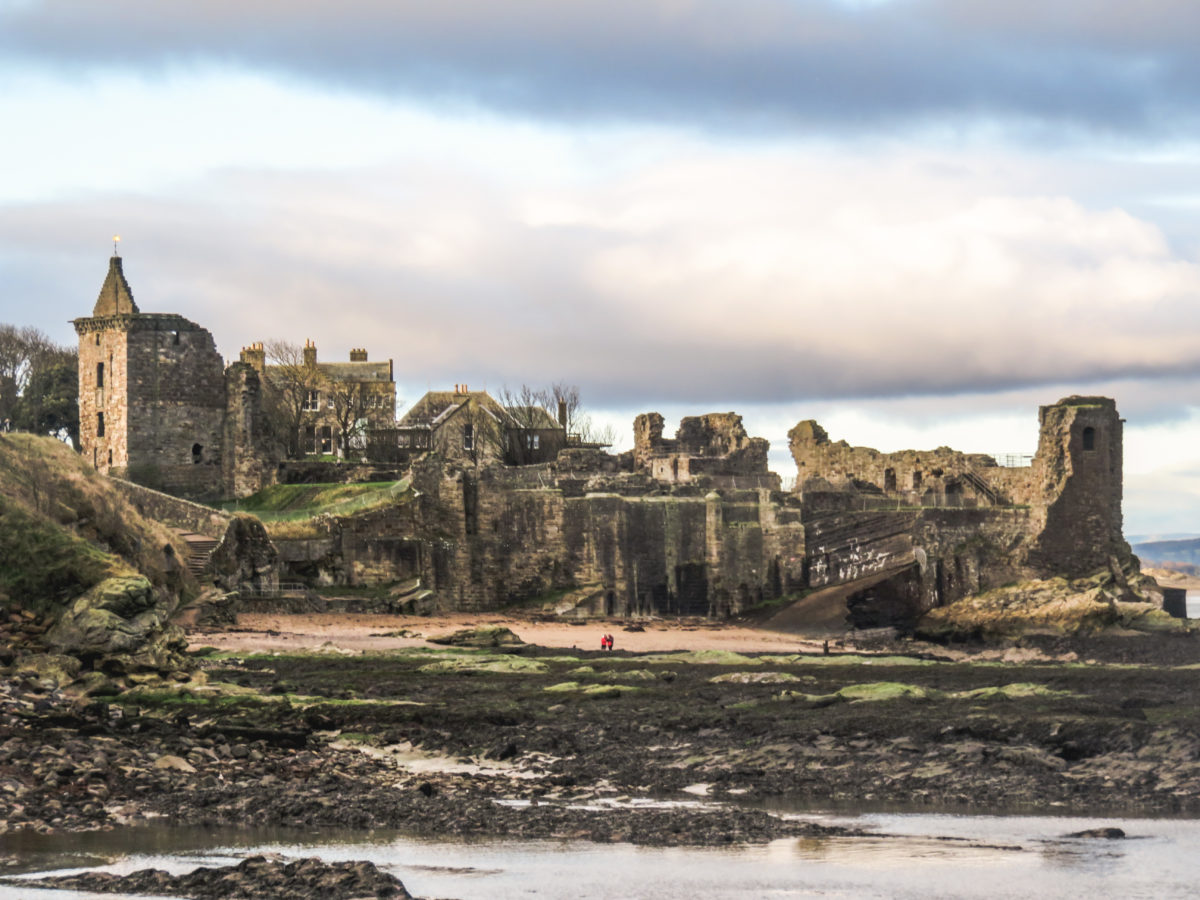
It was again an interesting atmosphere because it is in ruins and overlooks the sea with the waves crashing on the dyke below. It dates from the 13th century and was both a palace and a prison. The castle is not free to visit but can be combined with the cathedral for the price of £9.
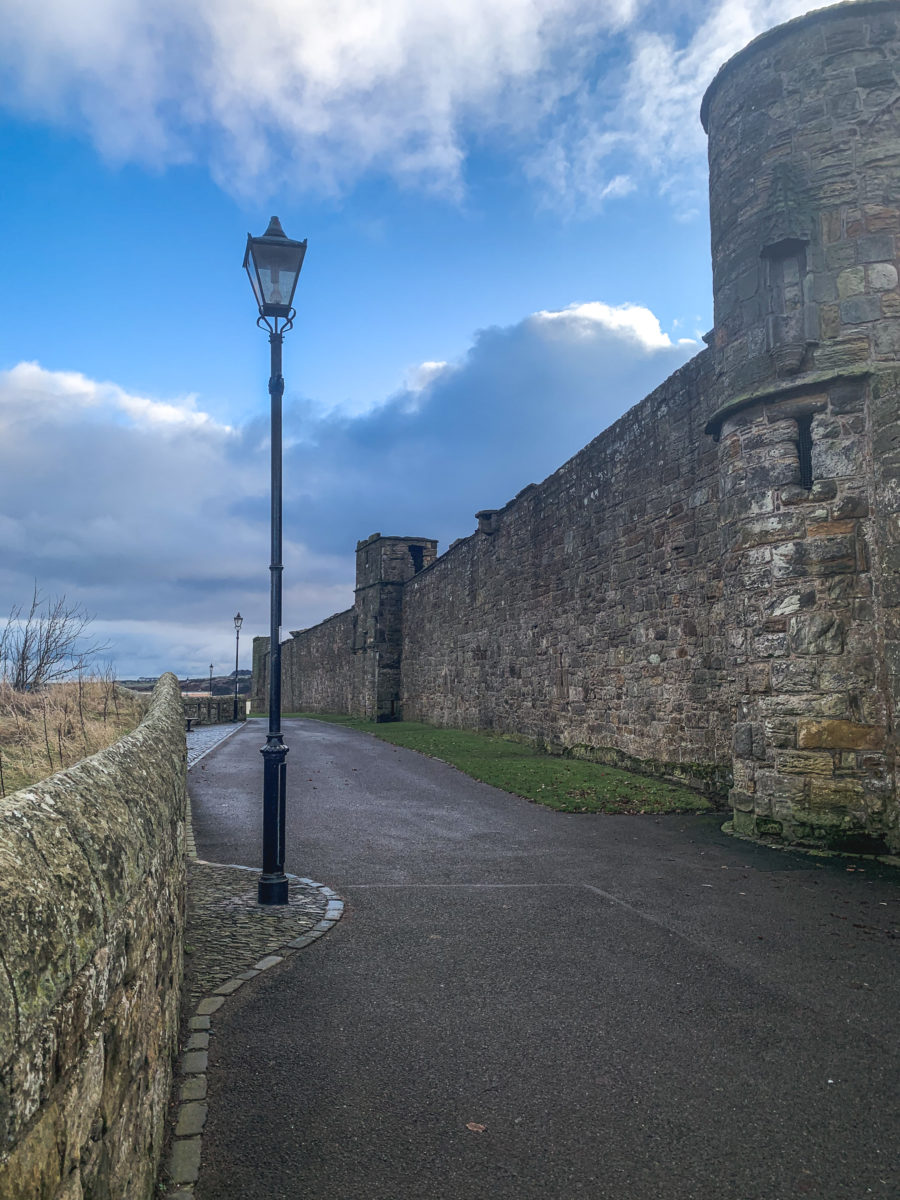

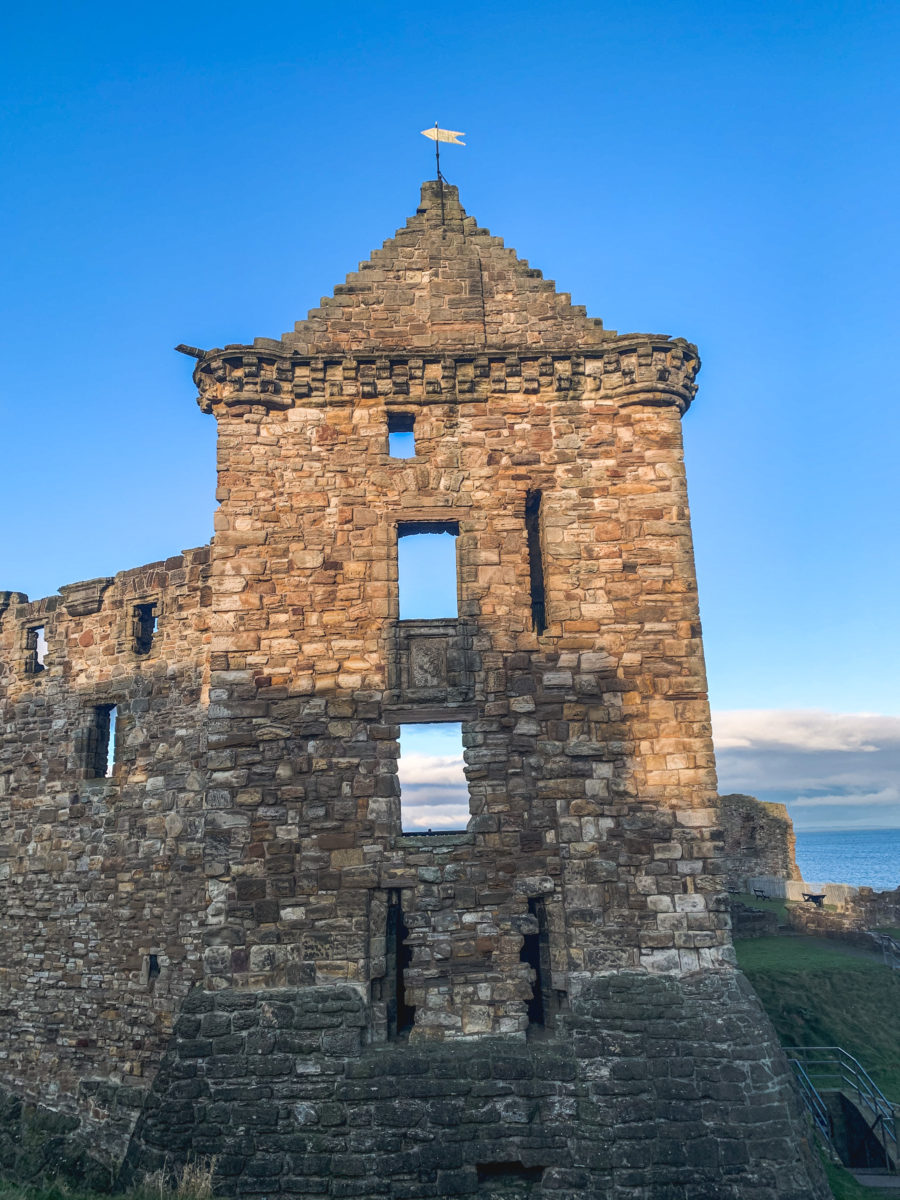
Afterwards, we continued our walk through the meandering streets of the town in search of the historic buildings associated with the University of St Andrews. It was founded at St Andrews Priory by Scottish scholars who had studied abroad. It was founded in 1410 and three colleges were subsequently endowed – St Salvator’s (in North Street), St Leonard’s (which is now combined with the former) and St Mary’s (in South Street).
The university boasts many ‘glorious’ titles: the oldest in Scotland, the first woman to enrol as a student in Britain (1862), the first marine laboratory (1882), the first student union and the place where Will met Kate. Gossip time!
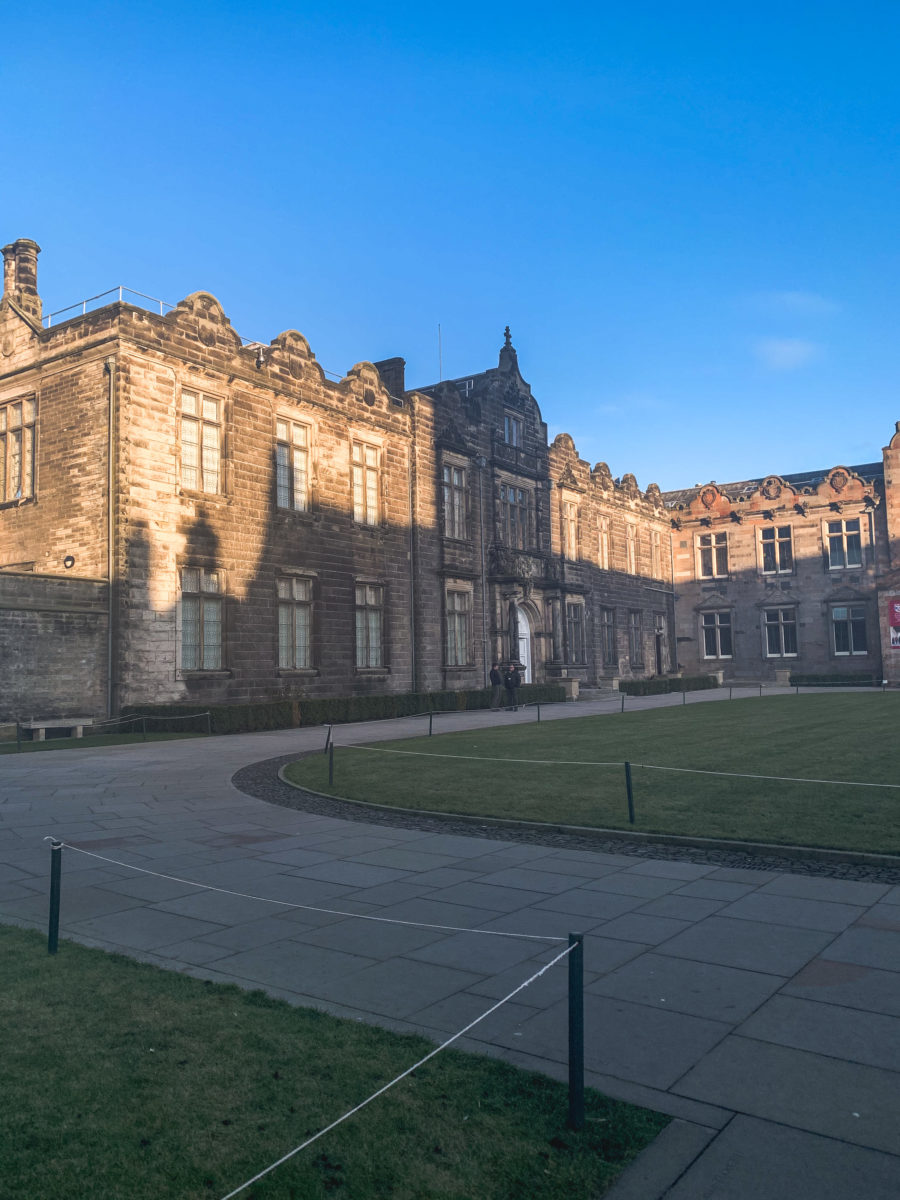


Like Edinburgh, it is a university town that promises incredible academic wealth in a city with an amazing heritage. And if you can also meet a prince, what more could you want?
Before continuing the tour, we finished our visit to St Andrews by discovering the magnificent beach called The West Sands. It is really a wonderful place to stretch your legs, especially when the tide is out. Some people were actually quite ready to swim, but I invite you instead, if you are there in the middle of December, to walk quietly, and well-dressed, on the 2 kilometres of sands that are offered to you.
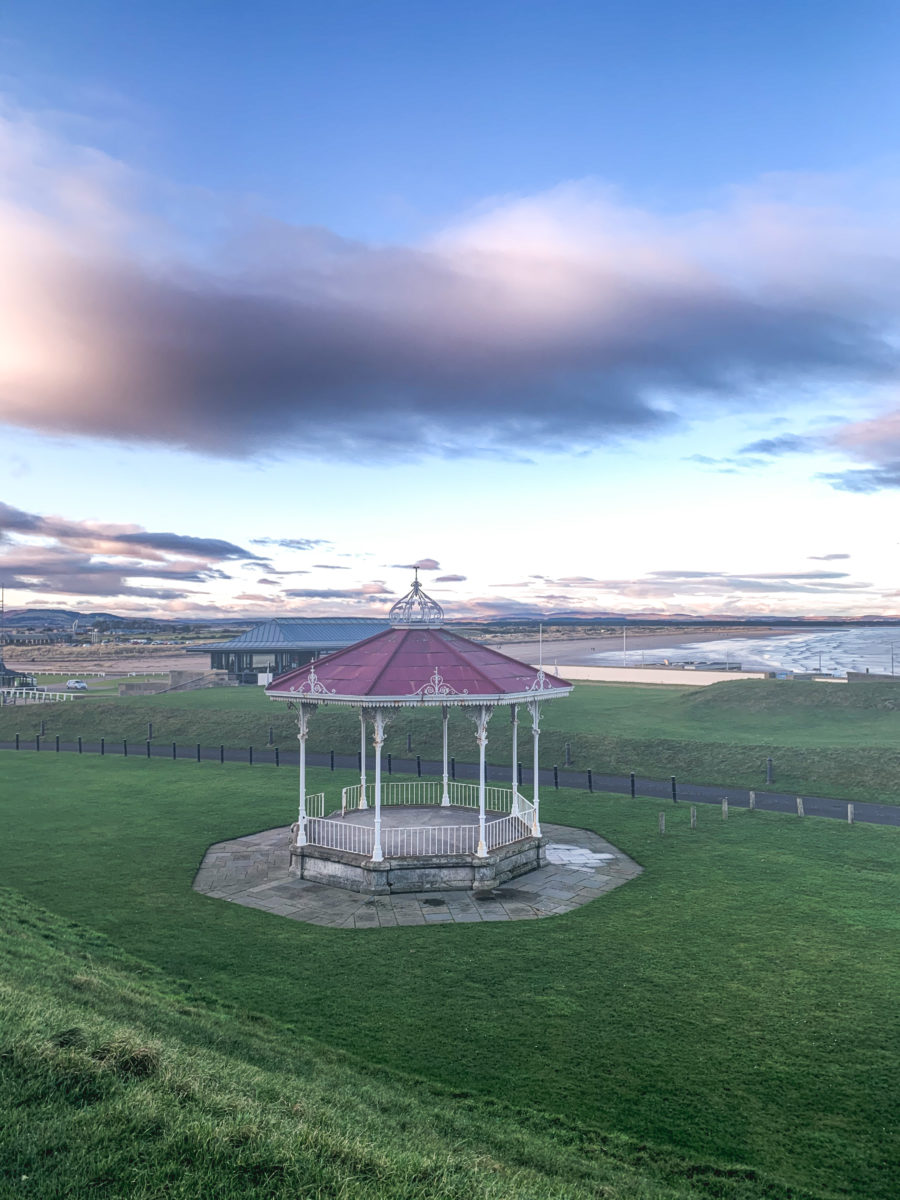
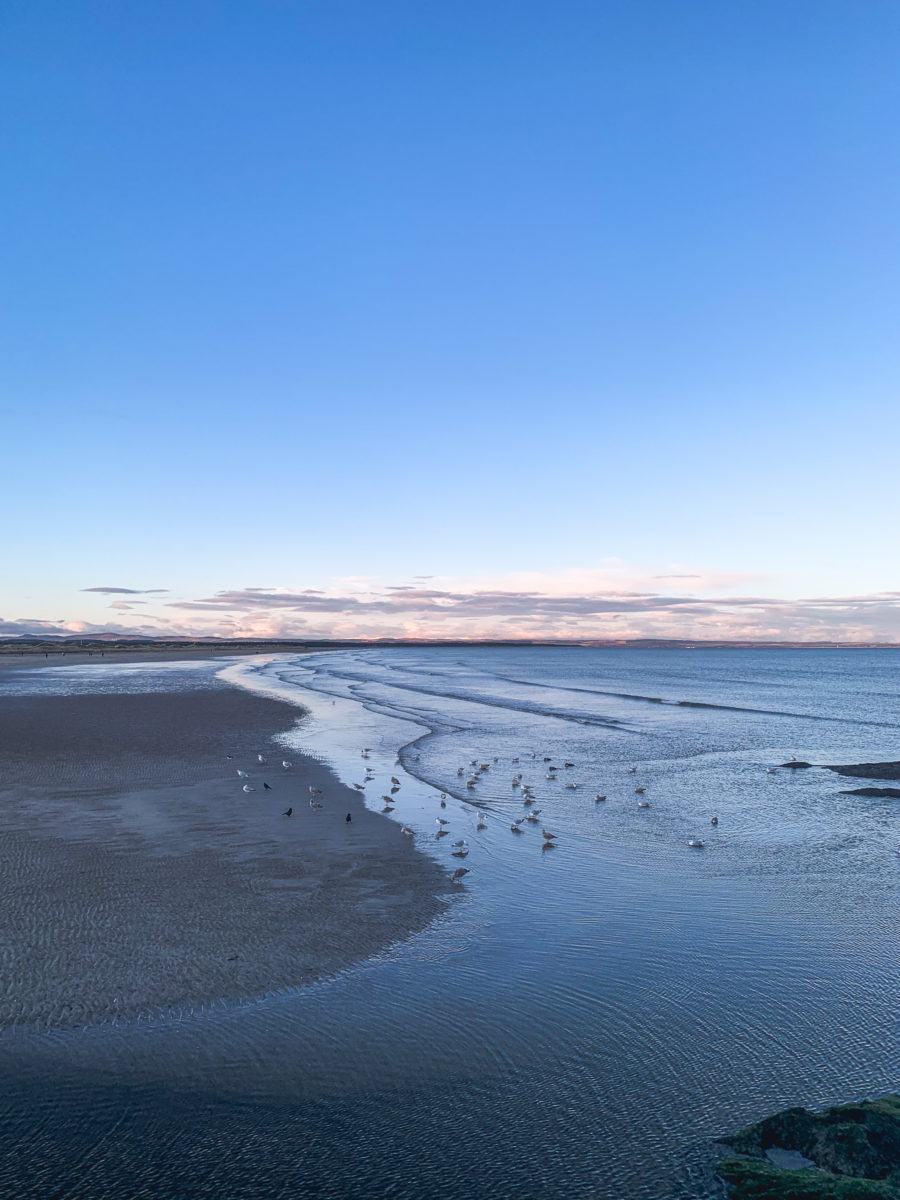
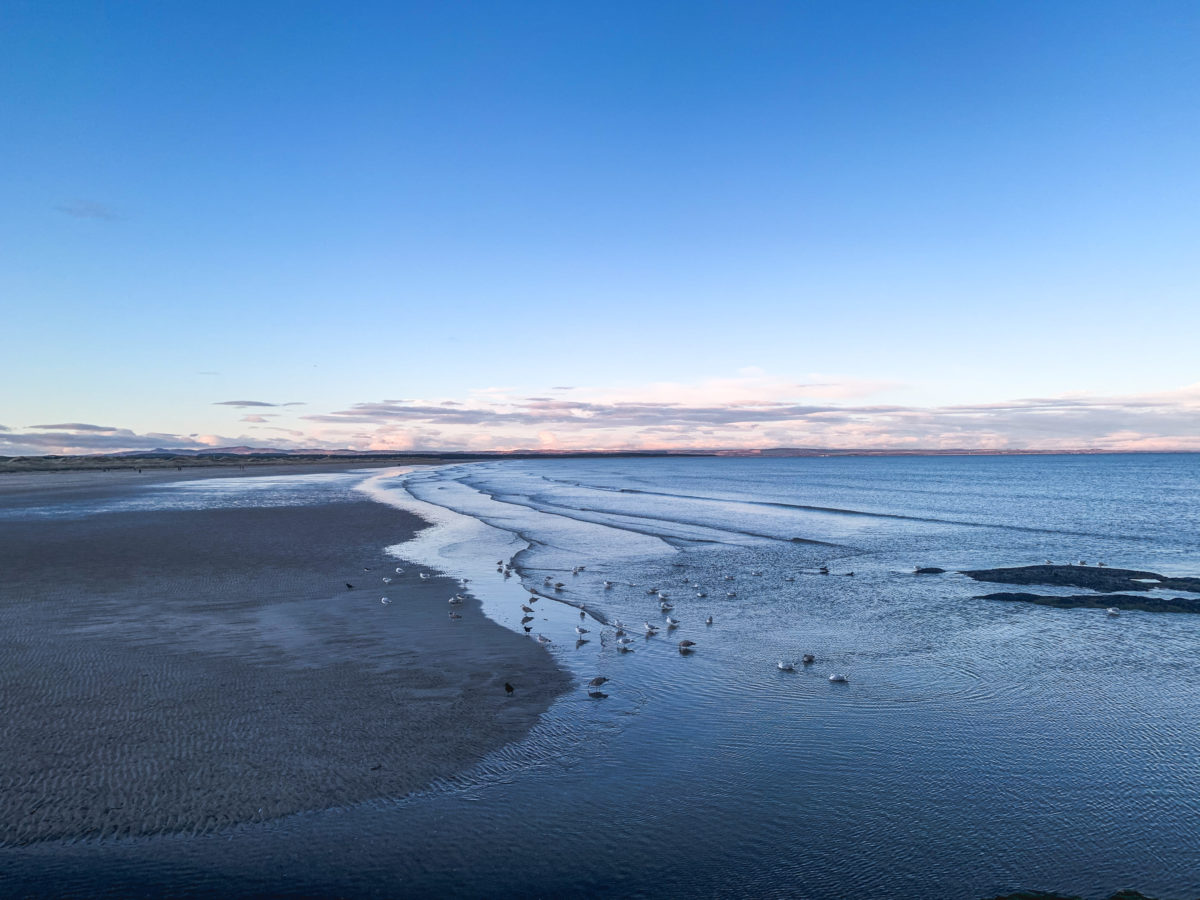
Falkland
We returned to the bus to continue exploring the rolling countryside of central Fife, eventually ending up in Falkland.
At the heart of this historic village is Falkland Palace, once the principal residence of the former Scottish royal family, the Stuart. Falkland is also one of the most charming and well-preserved villages in Scotland, with many quaint cottages and winding lanes.
I am writing these few lines about this village while watching the phenomenon series Outlander, and I was not surprised when I discovered, from the first episode, that the protagonists are in Falkland. Well, the plot is set in Inverness, but the setting is indeed Falkland. Throughout my stay, I heard about this series and the filming locations in Scotland, but it’s only two years later that I’m watching it and remembering the wild beauty of Scotland. As well as that of the Scots, led by Jamie Fraser, but that’s another story.
Back to Falkland! We didn’t have time to visit the palace, but we did have time to wander around the very authentic historic centre for about ten minutes. Walking around, you get the impression that this small village has not moved since the comings and goings of the Scottish royalty. And that’s its charm. The main street culminates in a beautiful combination of the Victorian Gothic Bruce Fountain, a set of colourful shops and a turret.
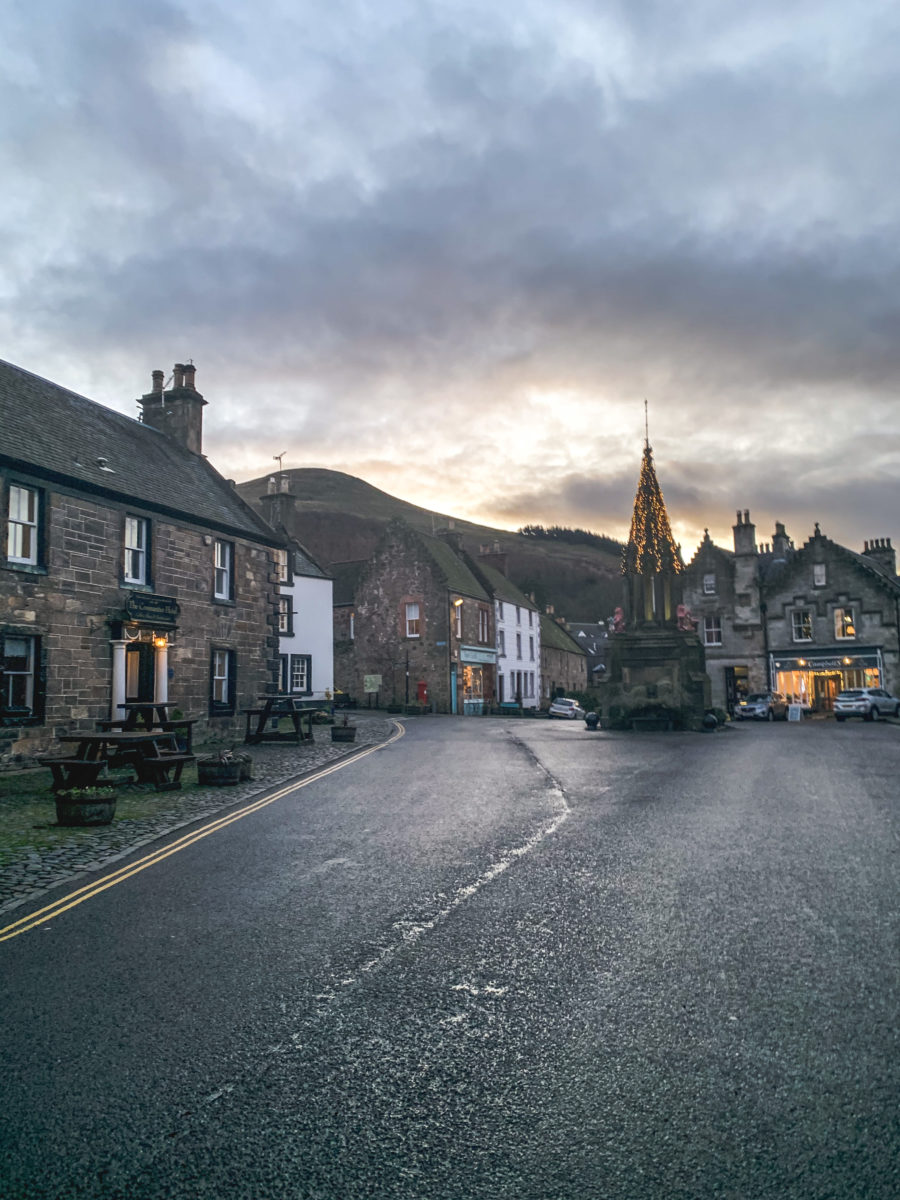

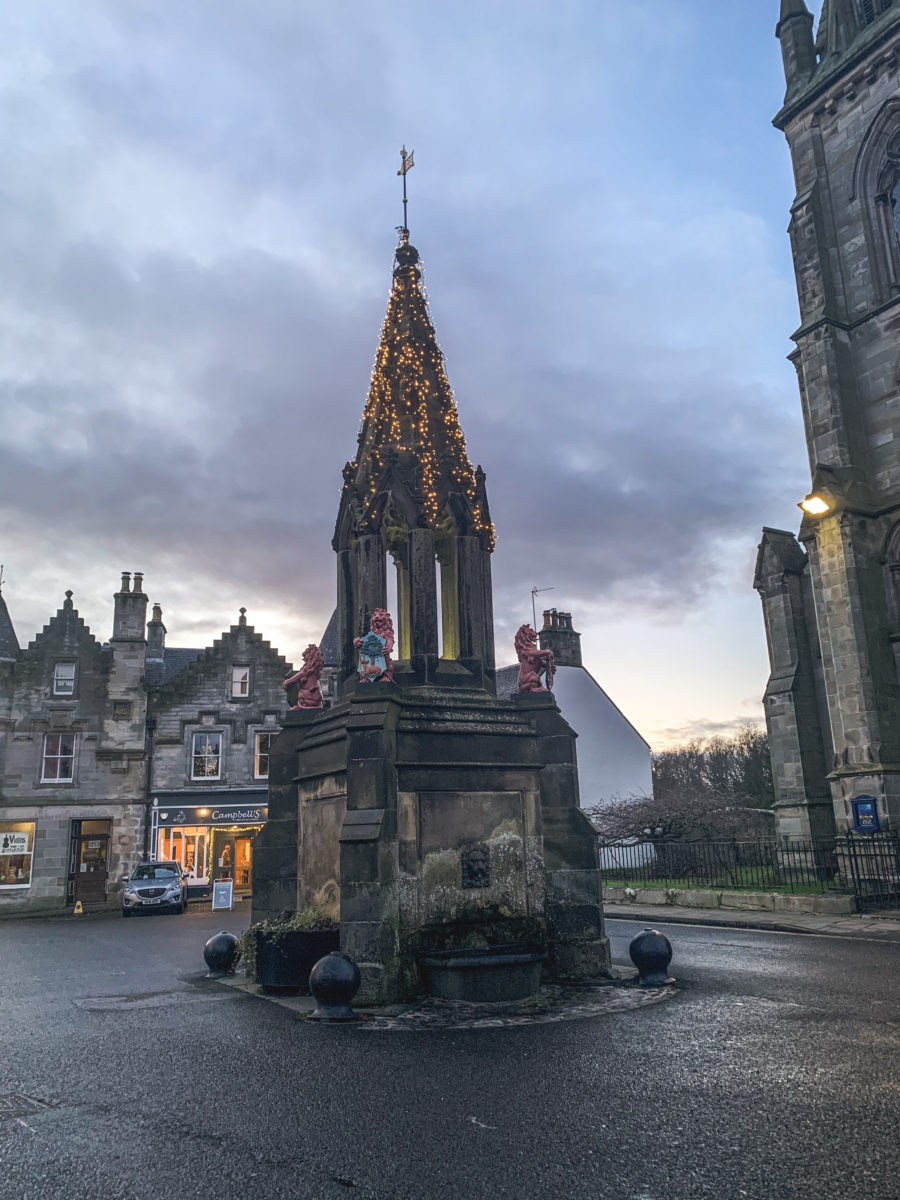
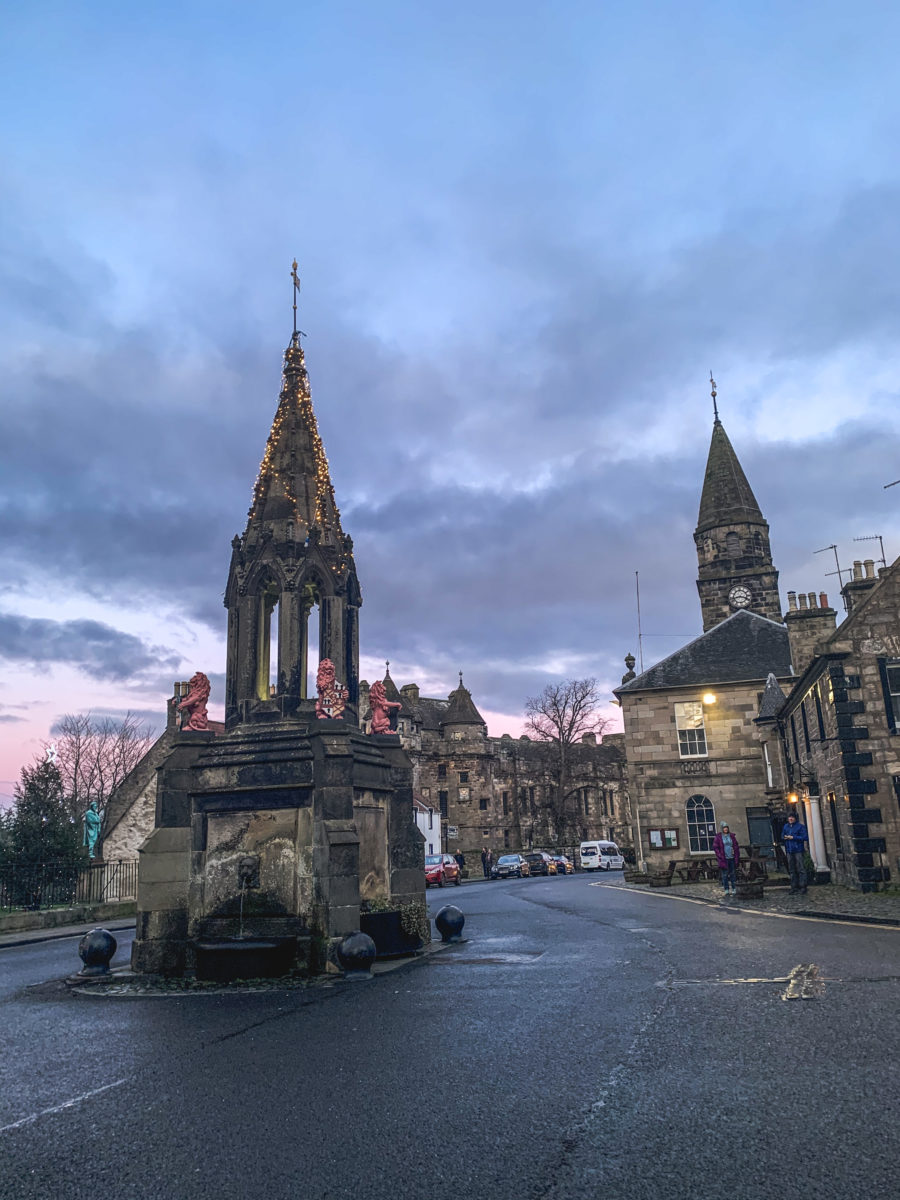
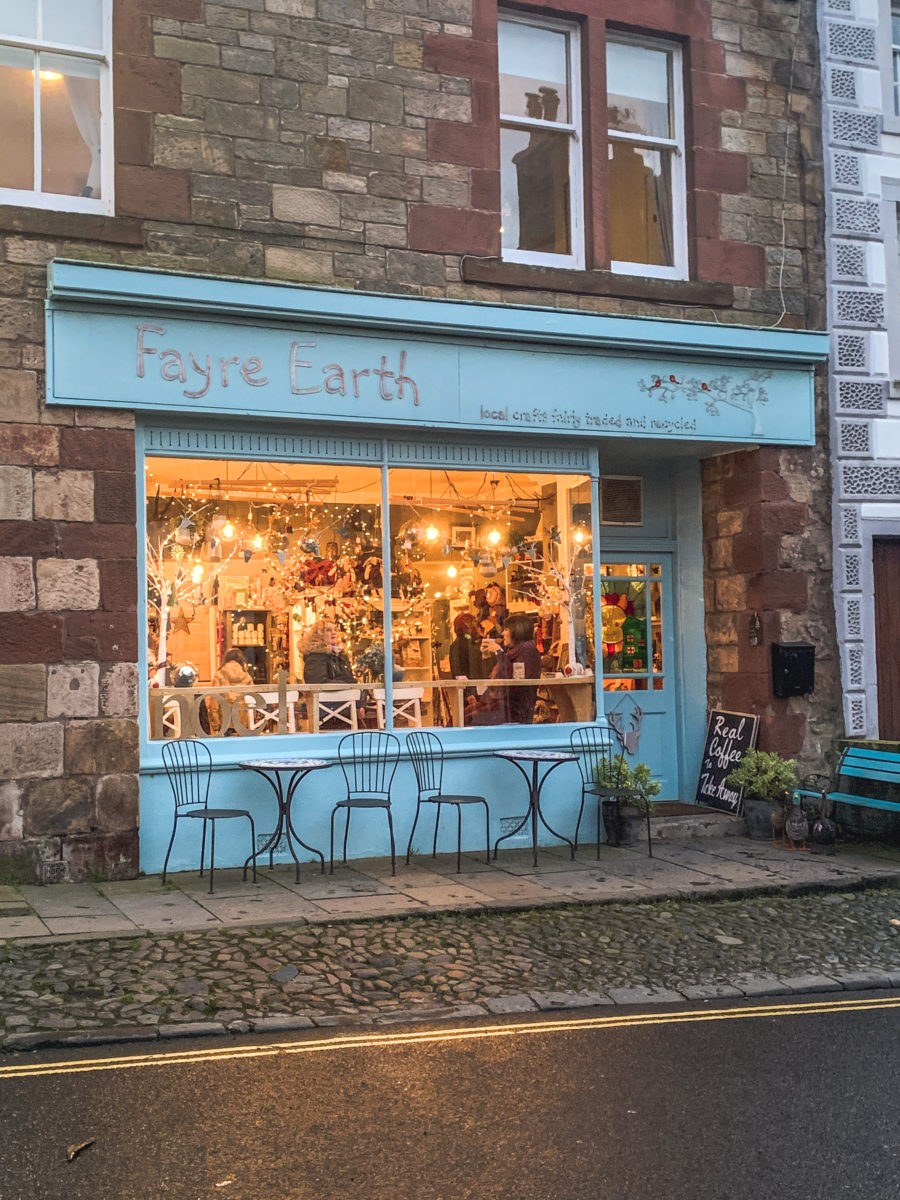
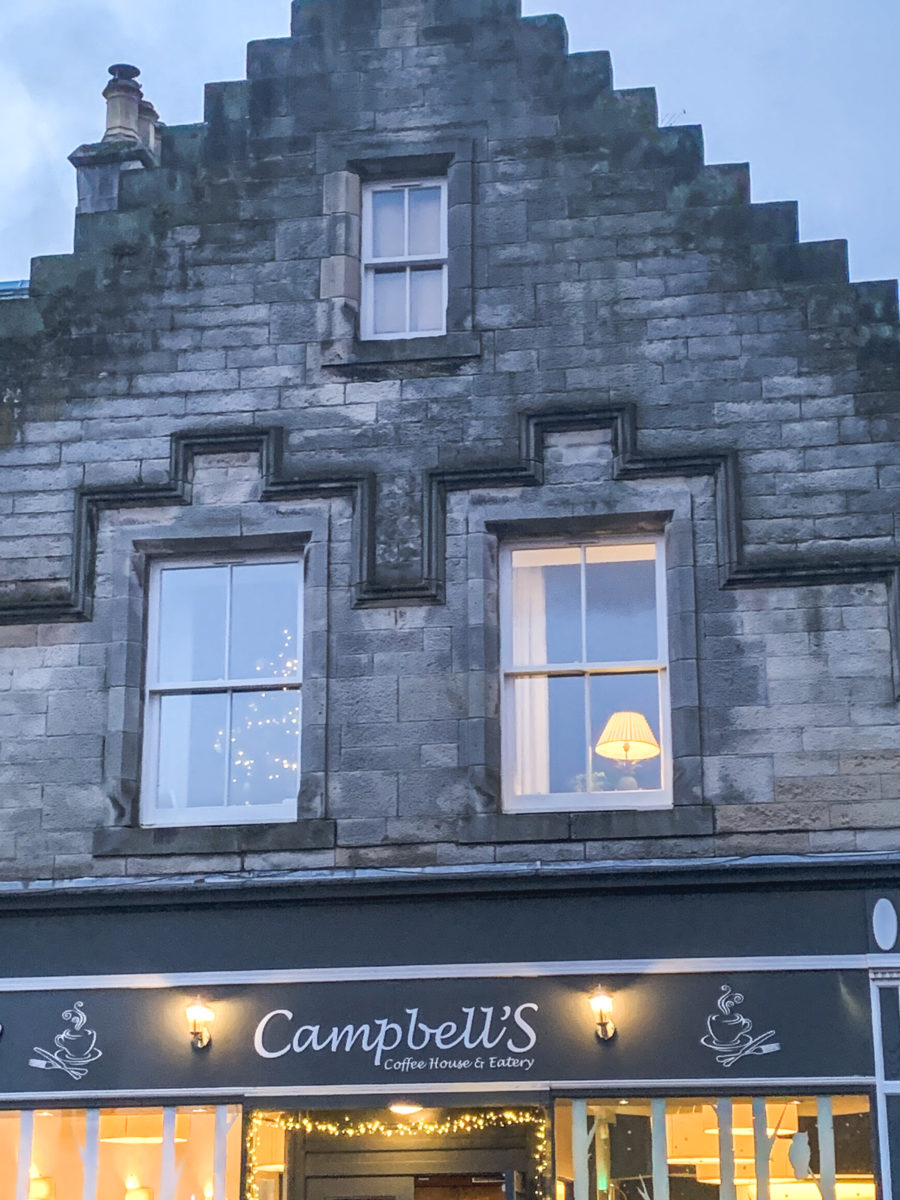
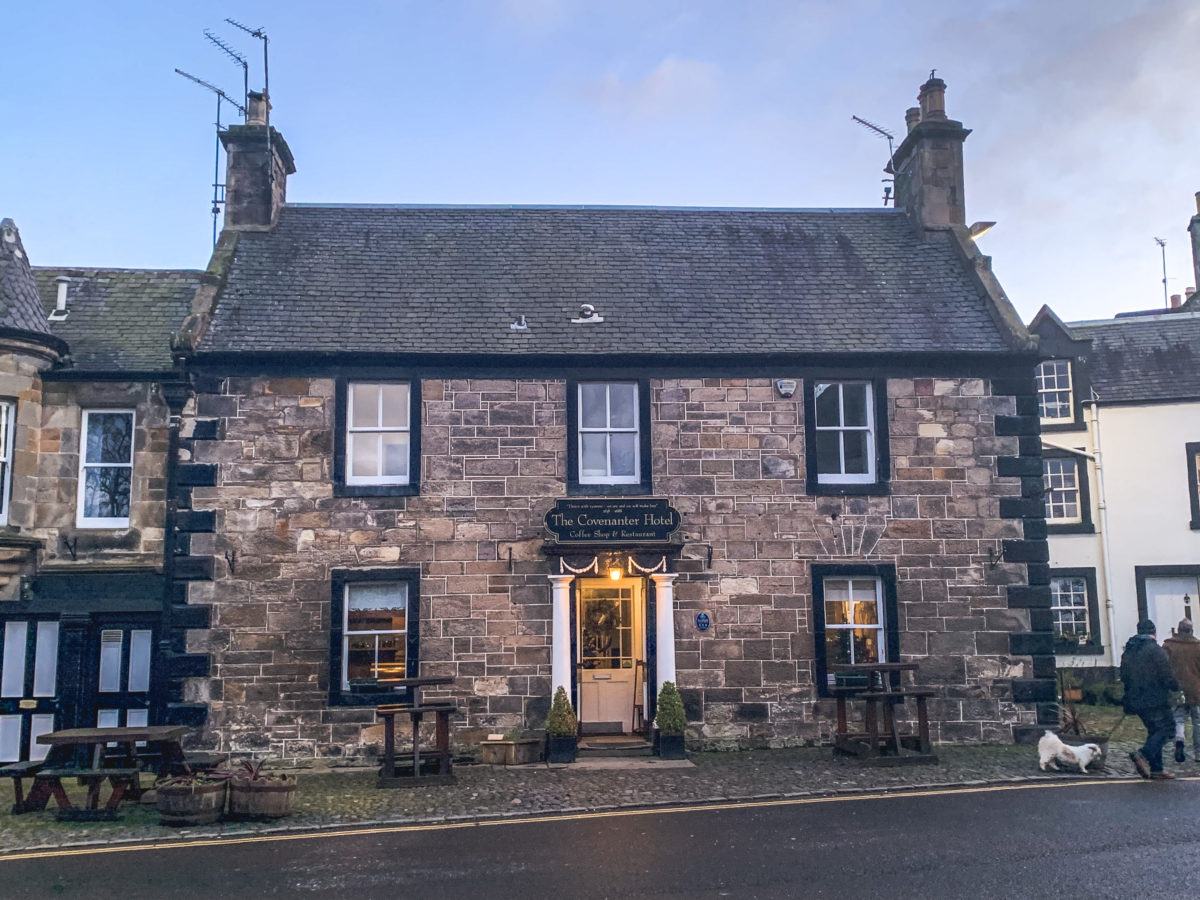
I would have greatly enjoyed exploring the palace, but fortunately, the guide was able to enlighten us on many aspects of the Stuart. The palace is now mainly managed by the National Trust for Scotland but remains in the Stuart family.
Built by James IV and James V between 1501 and 1541 on the site of an earlier castle, it is considered one of the finest examples of French Renaissance architecture in the UK. Mary, Queen of Scots, used to go there to hunt and play tennis. In fact, the palace has the oldest tennis court in the world.


We headed back to Edinburgh. The last stop of the tour was normally Loch Leven and its castle, where Mary Stuart was imprisoned in 1567. But as mentioned before, it was already dark, and we headed straight back to the Scottish capital.
Grampian
Grampian is the administrative region in the North East of Scotland. With the idea of discovering another aspect of Scotland, we took the train to discover Stonehaven and Aberdeen. The rail network is well-developed, although expensive compared to the bus. But I really enjoy discovering places by train.
There are also some great scenic routes, including the one over the Glenfinnan Viaduct. You can find all the information here.
I would just advise that when you get on the train, you should make sure you know how the door opens. It may be, and this is astounding, that you have to open the door from the outside by putting your arm through the small window in the door. Not being in pole position at Stonehaven, I discovered this trickery only on the way back to the Edinburgh Haymarket stop where I wanted to get off, but I never figured out how to open the door… Luckily, the conductor was passing by and could explain to me how to open the door… In the end, it wouldn’t have been dramatic, I would have arrived at the terminus of the line, Edinburgh Waverley Central Station.
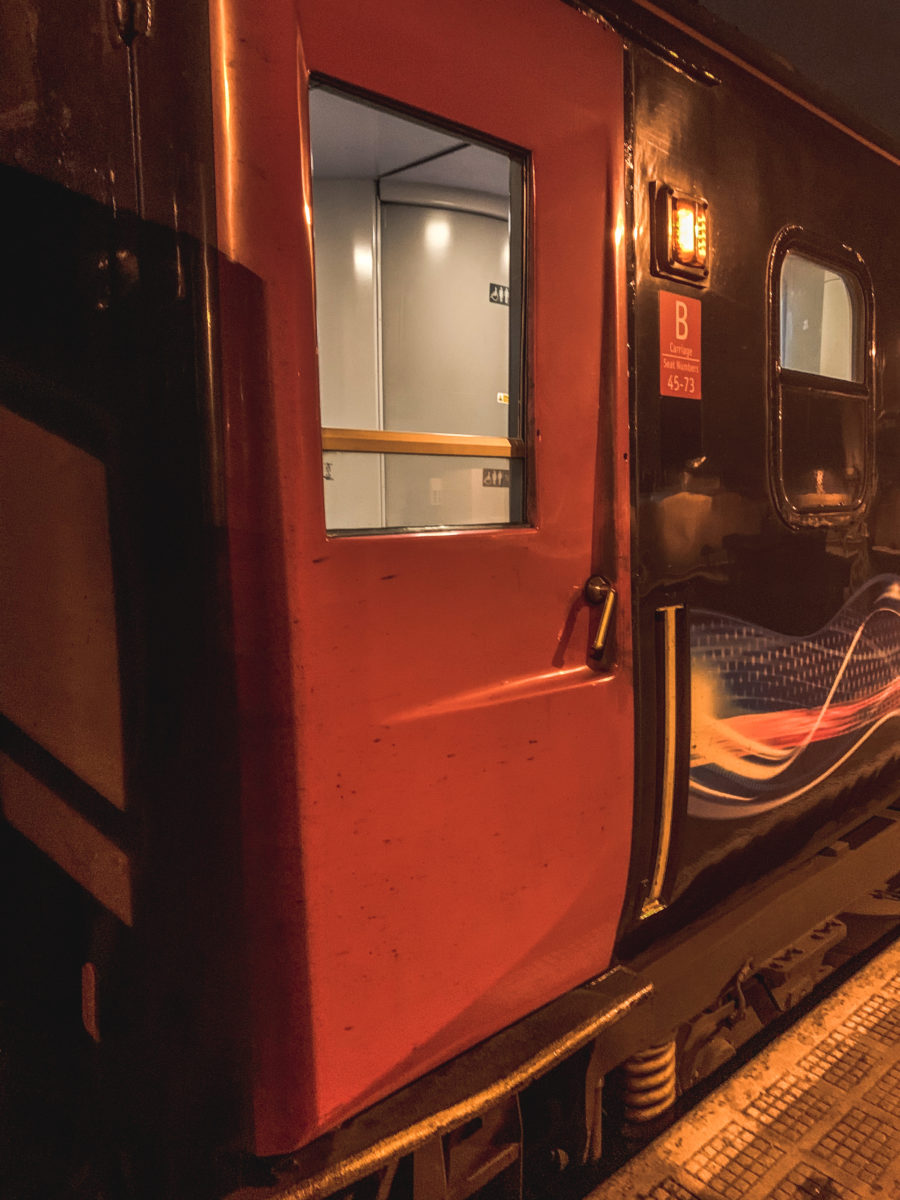
Travelling by train also allows you to see a breathtaking sunrise all along the Scottish coast.
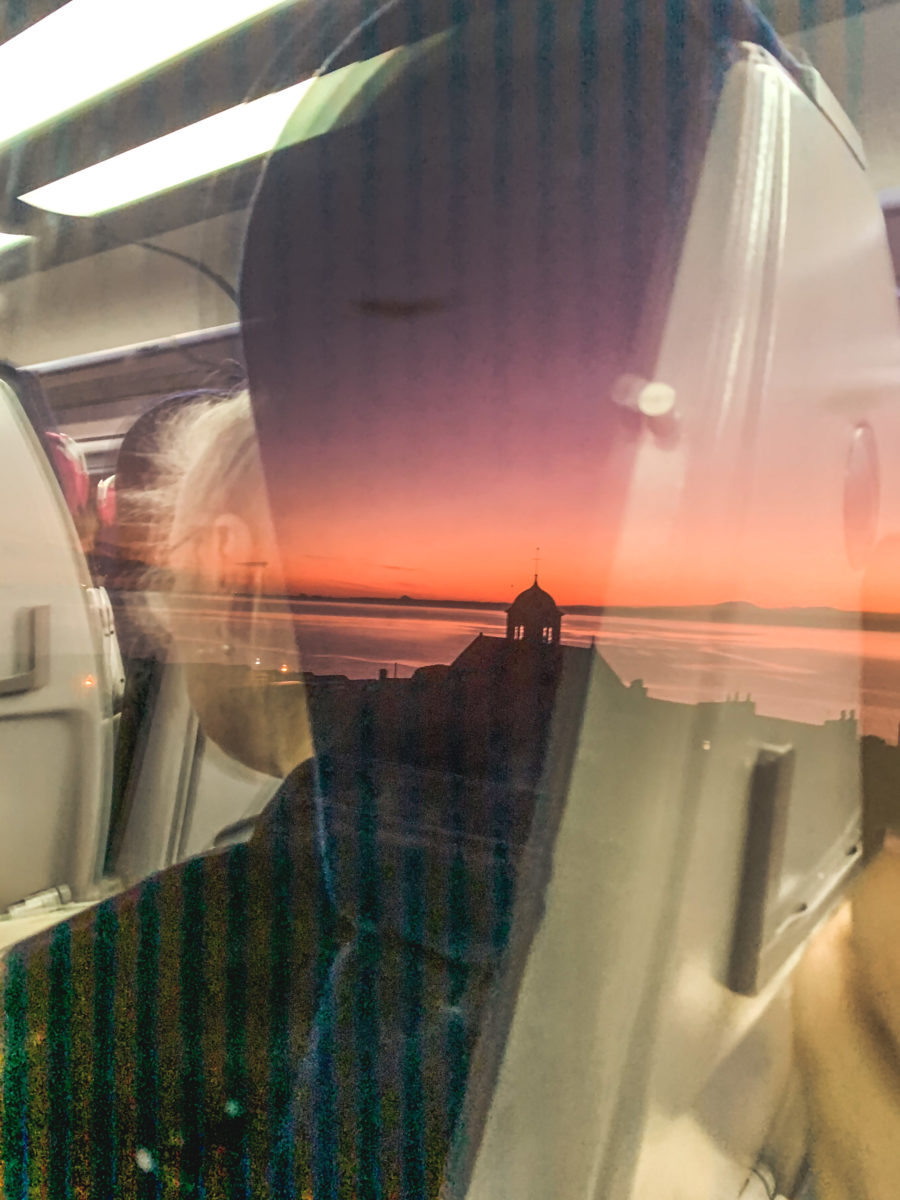
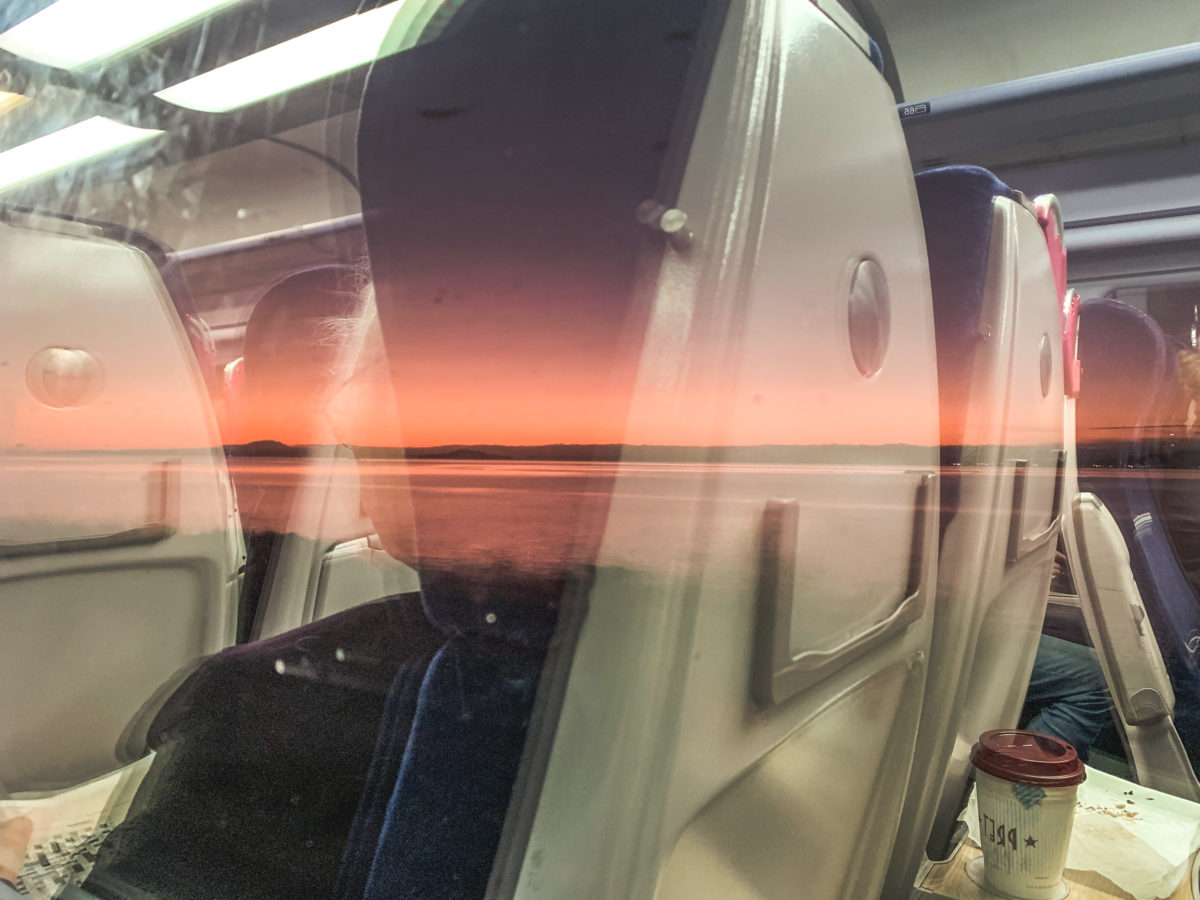
Stonehaven
Located a few miles south of Aberdeen, Stonehaven seemed like a nice stopover before reaching the coastal city. This pretty harbour seemed to me to be the ideal starting point to reach the amazing ruins of Dunnottar Castle.

We took the train from Edinburgh and after just over 2 hours we stopped at Stonehaven. The station is on the upper side of the town, so you’ll have to walk a few dozen minutes down to the centre of the town to get to the path along the coastline to the castle.
The burgh of Stonehaven is an attractive place from which to explore the area. However, the town centre is not essential to explore, but it is always good to wander around a Scottish town. And like most places, it is the harbour and the beach that give Stonehaven the name of a pretty village. It is also where the deep-fried Mars bar was invented, the Mars chocolate bar that is fried in a doughnut batter… Besides the haggis, I think it is a typical dish that I absolutely had to try during my time in Scotland. I had one in Glasgow (story here!), but I was relieved to share it with my friends, as it was so inedible…
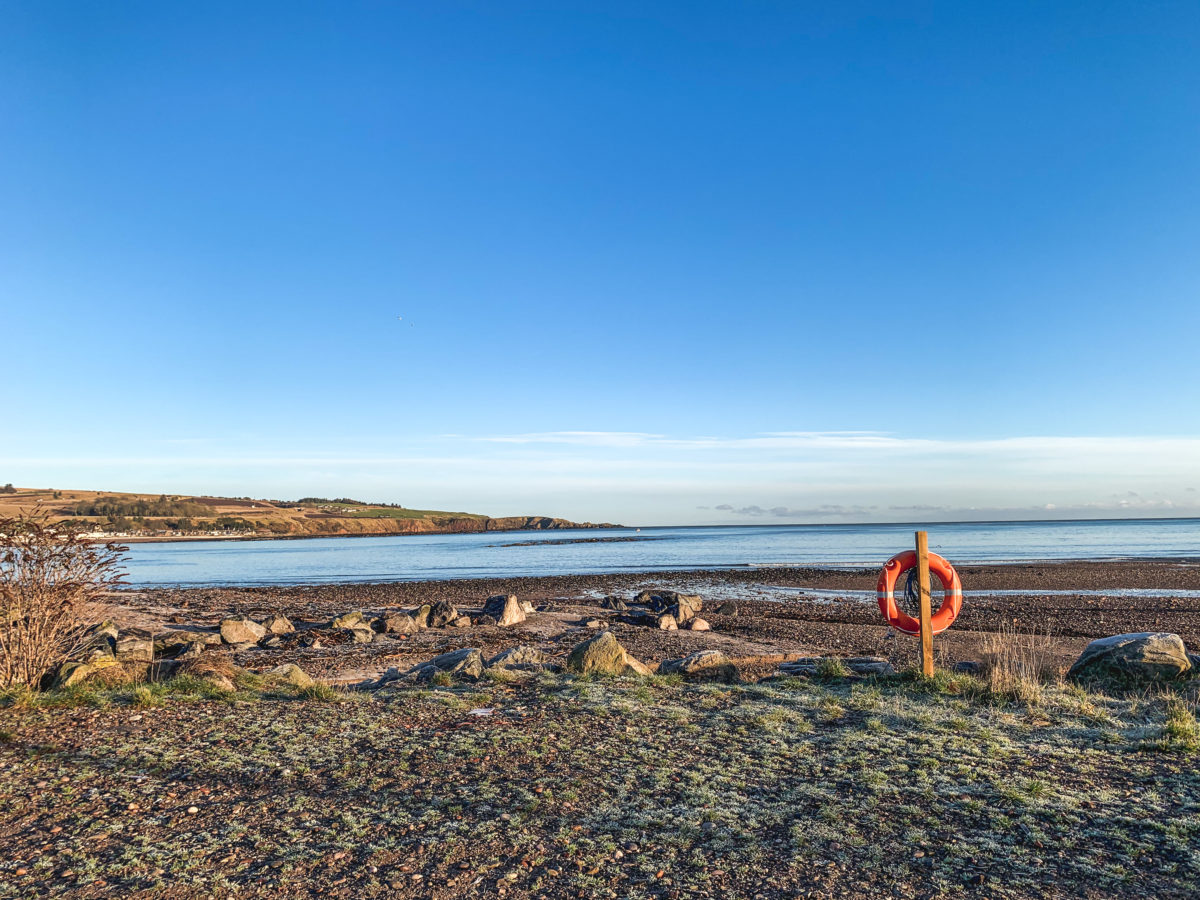
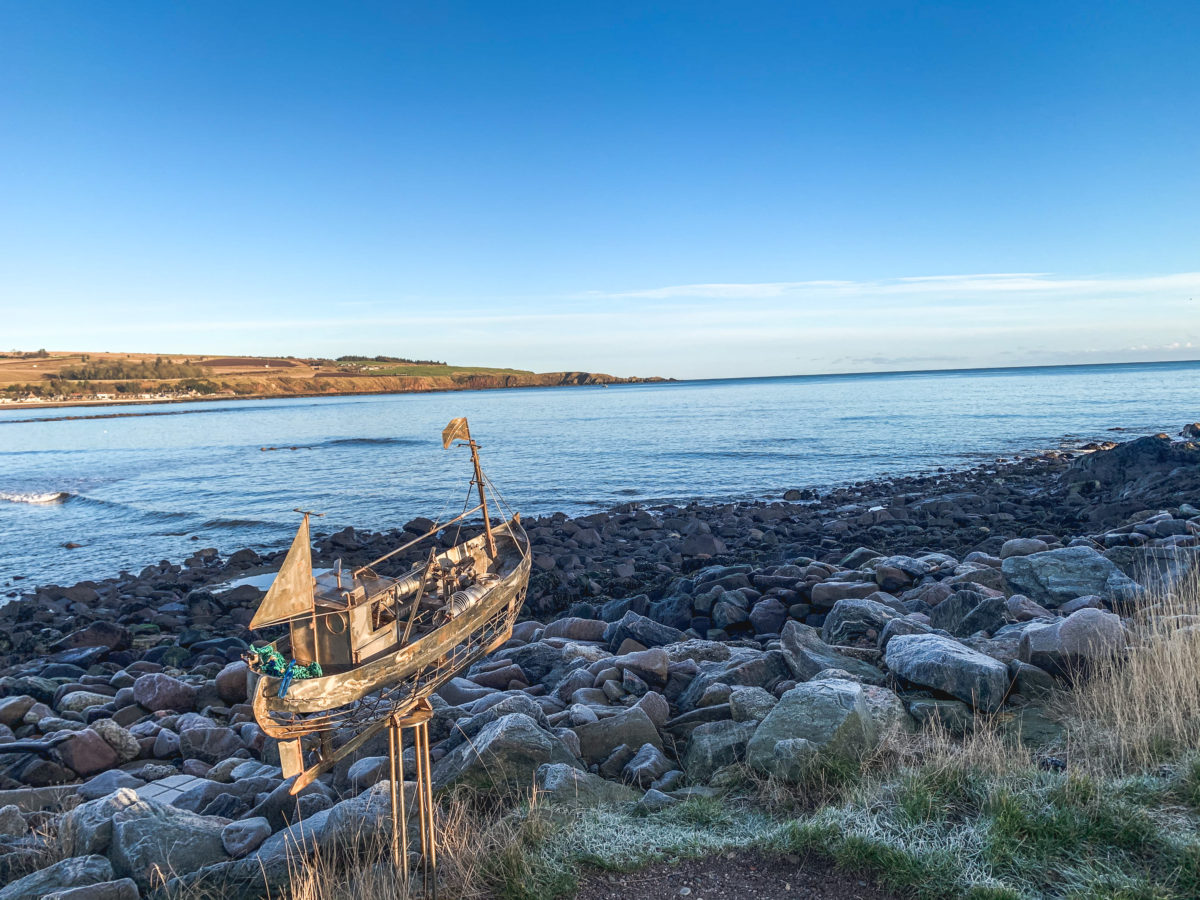


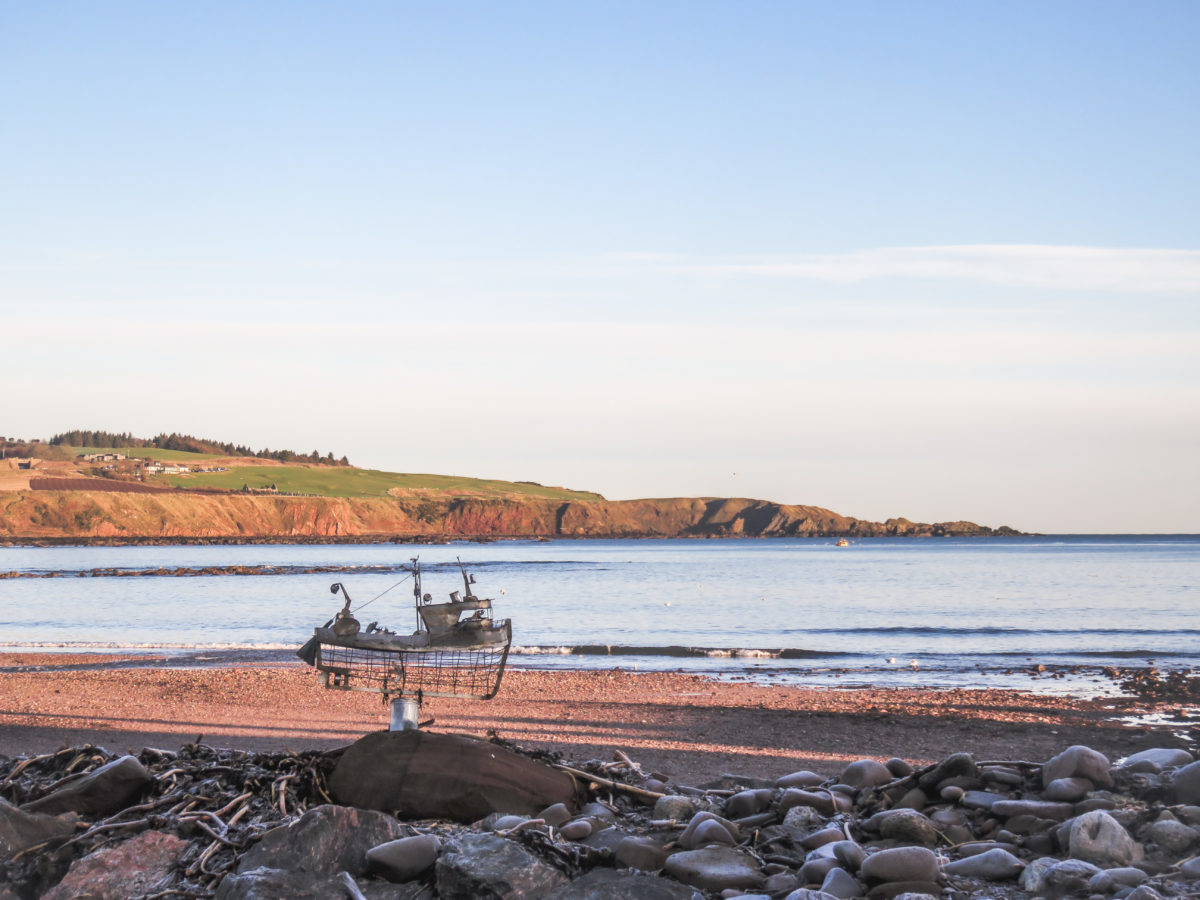
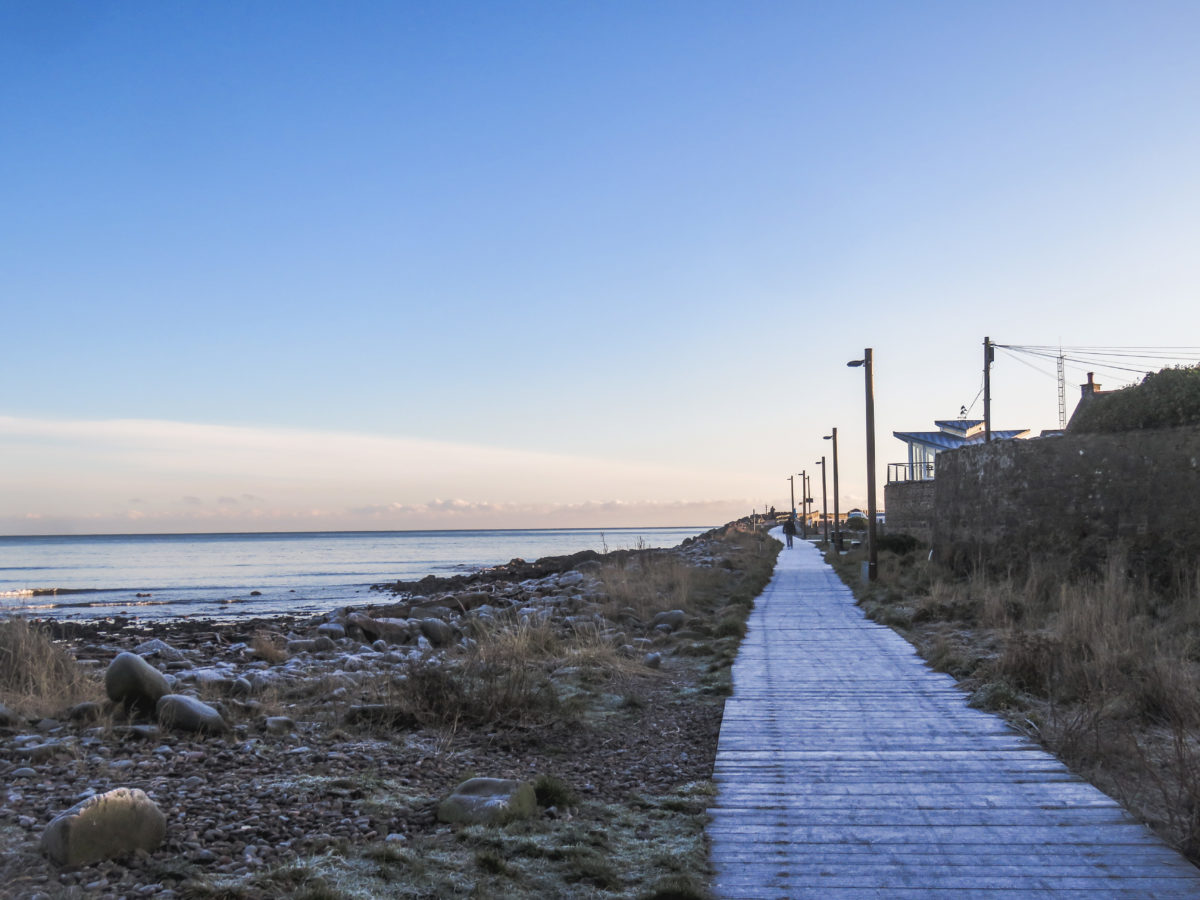

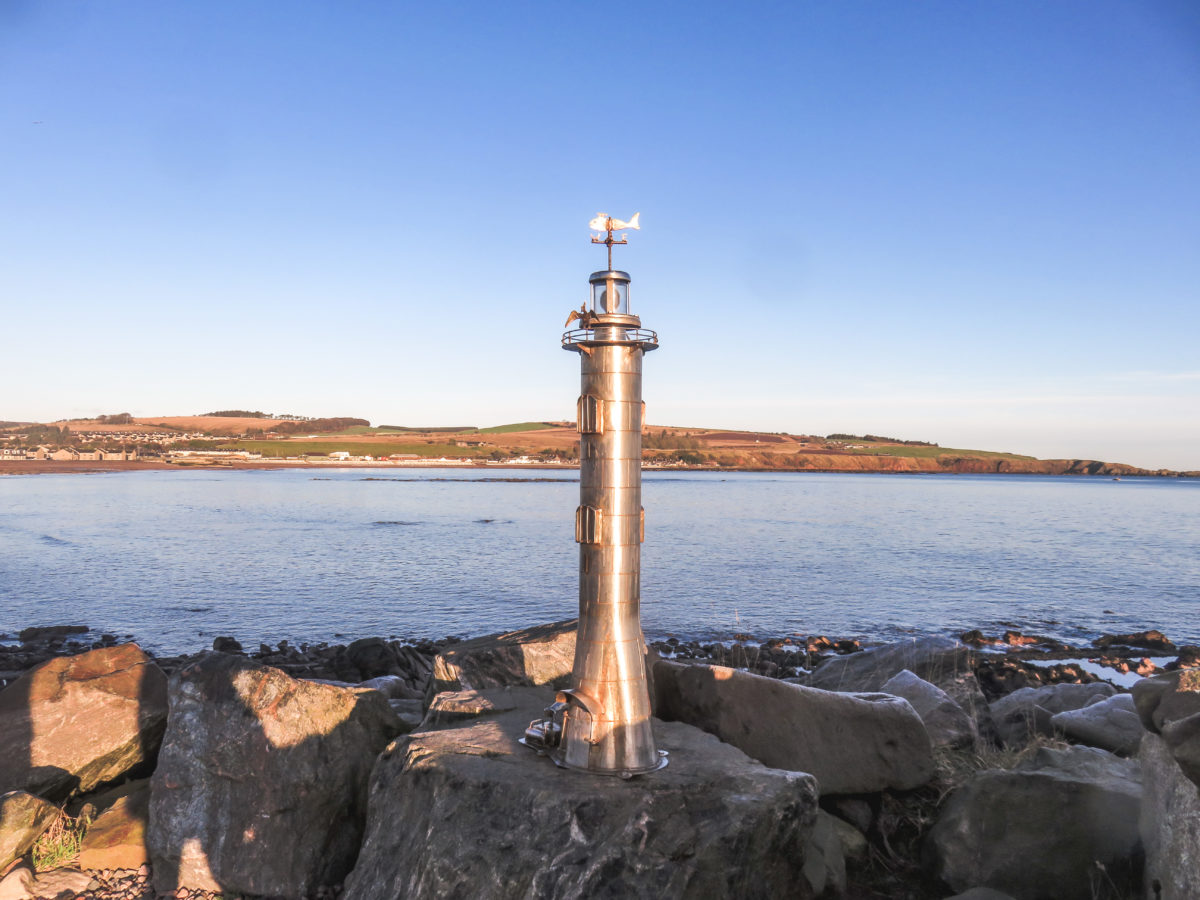
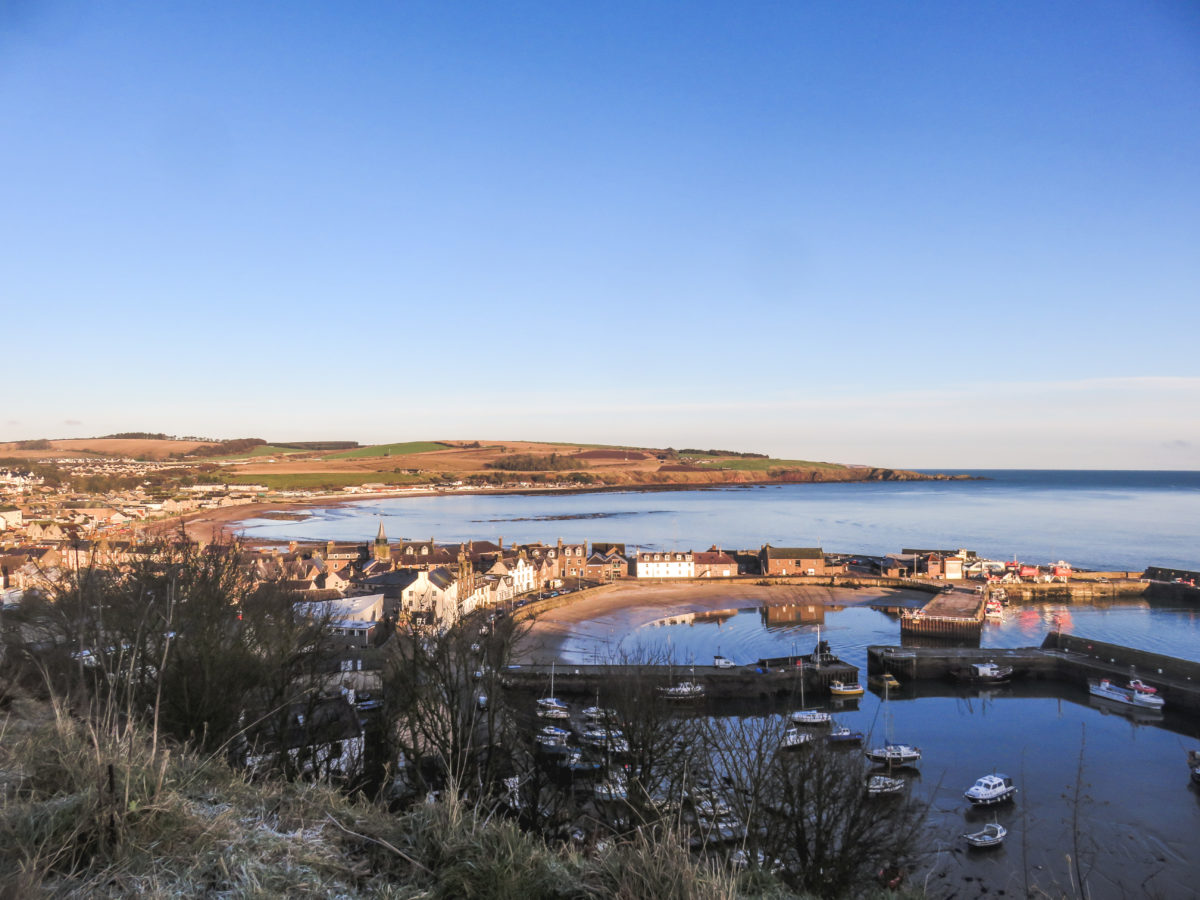
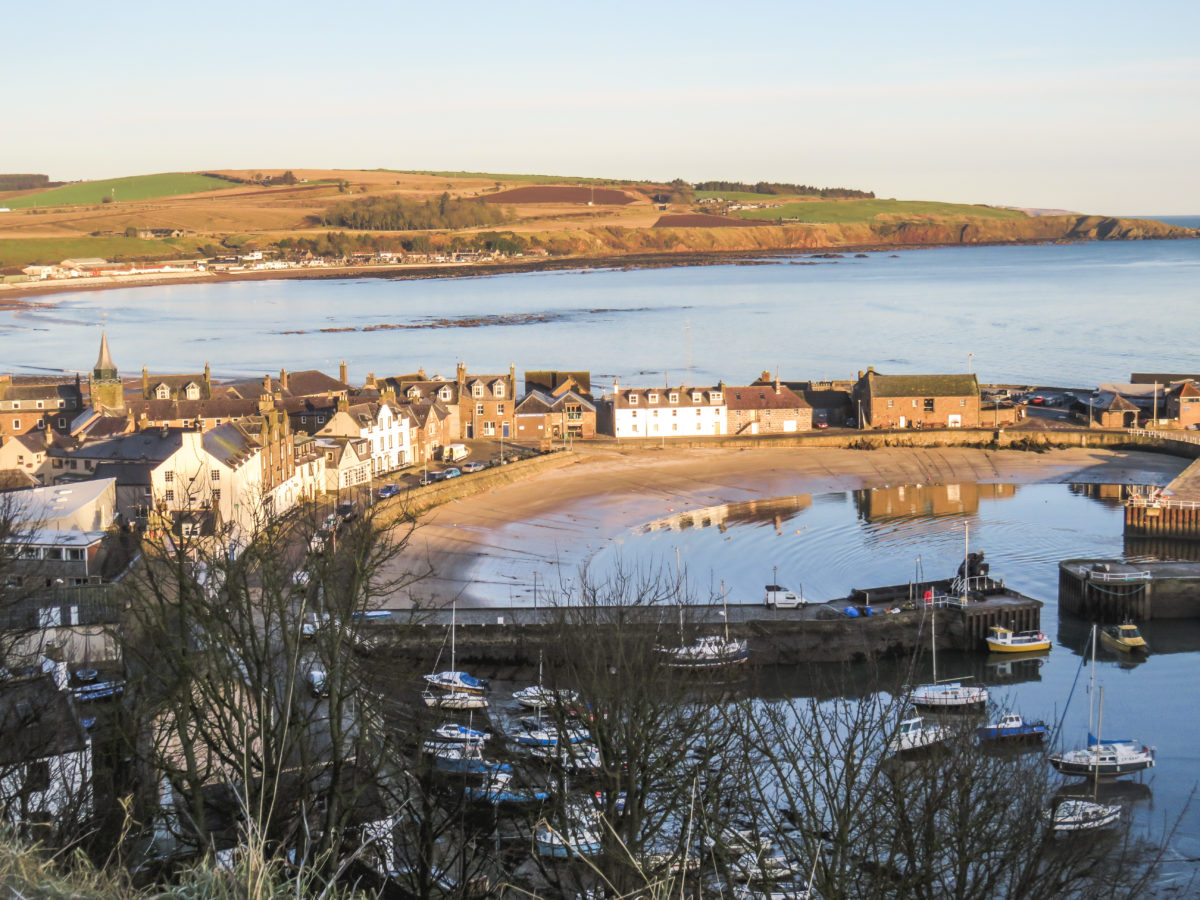
Just walking around and feeling the fresh air was invigorating, before a 40-minute walk to the famous ruins of Dunnottar Castle.

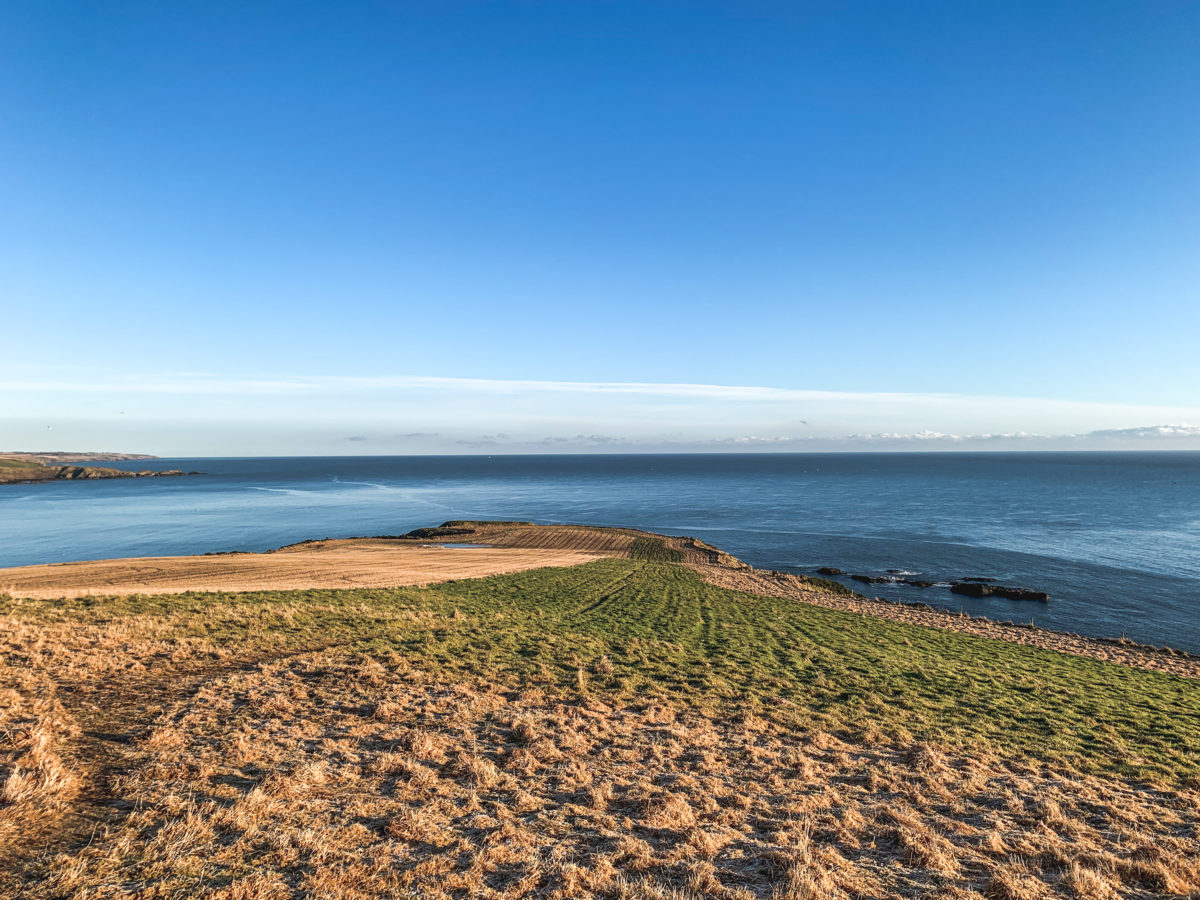


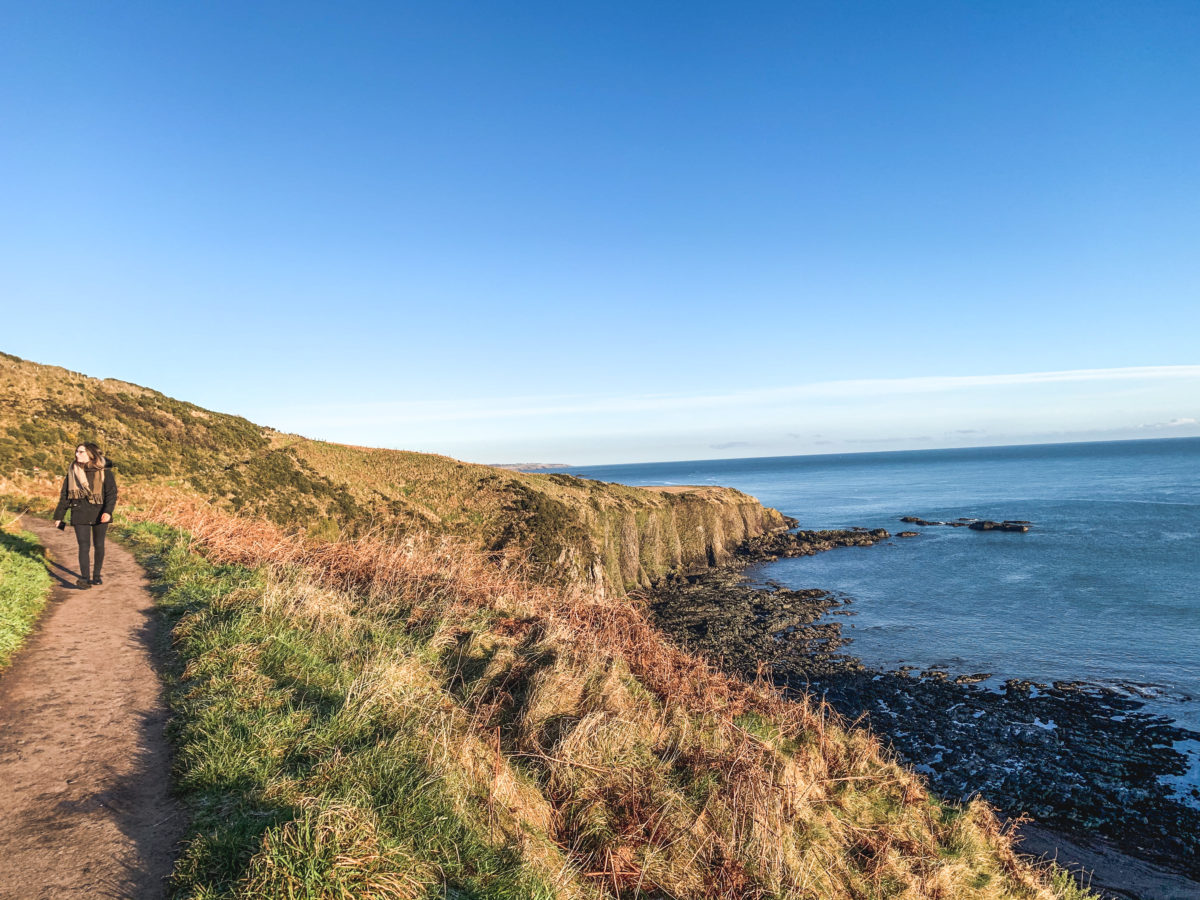
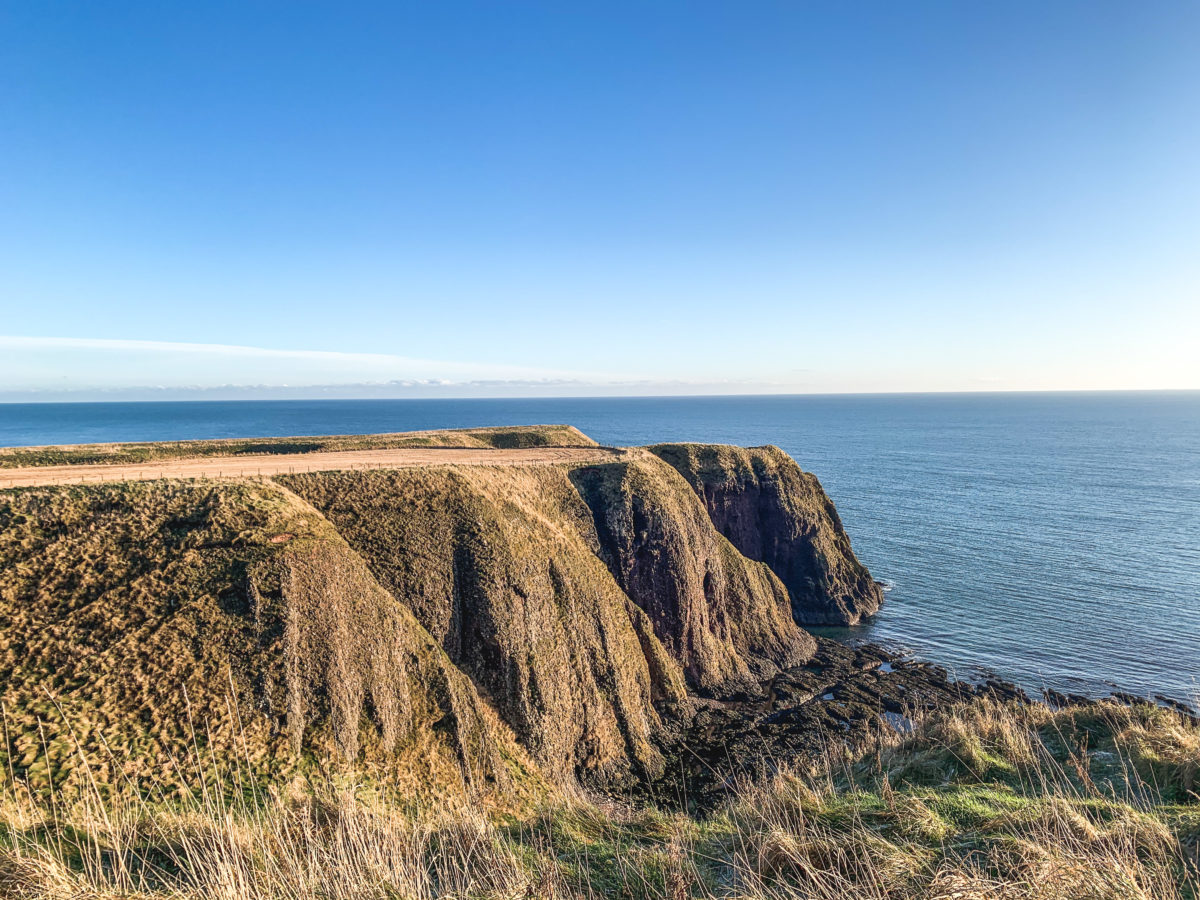
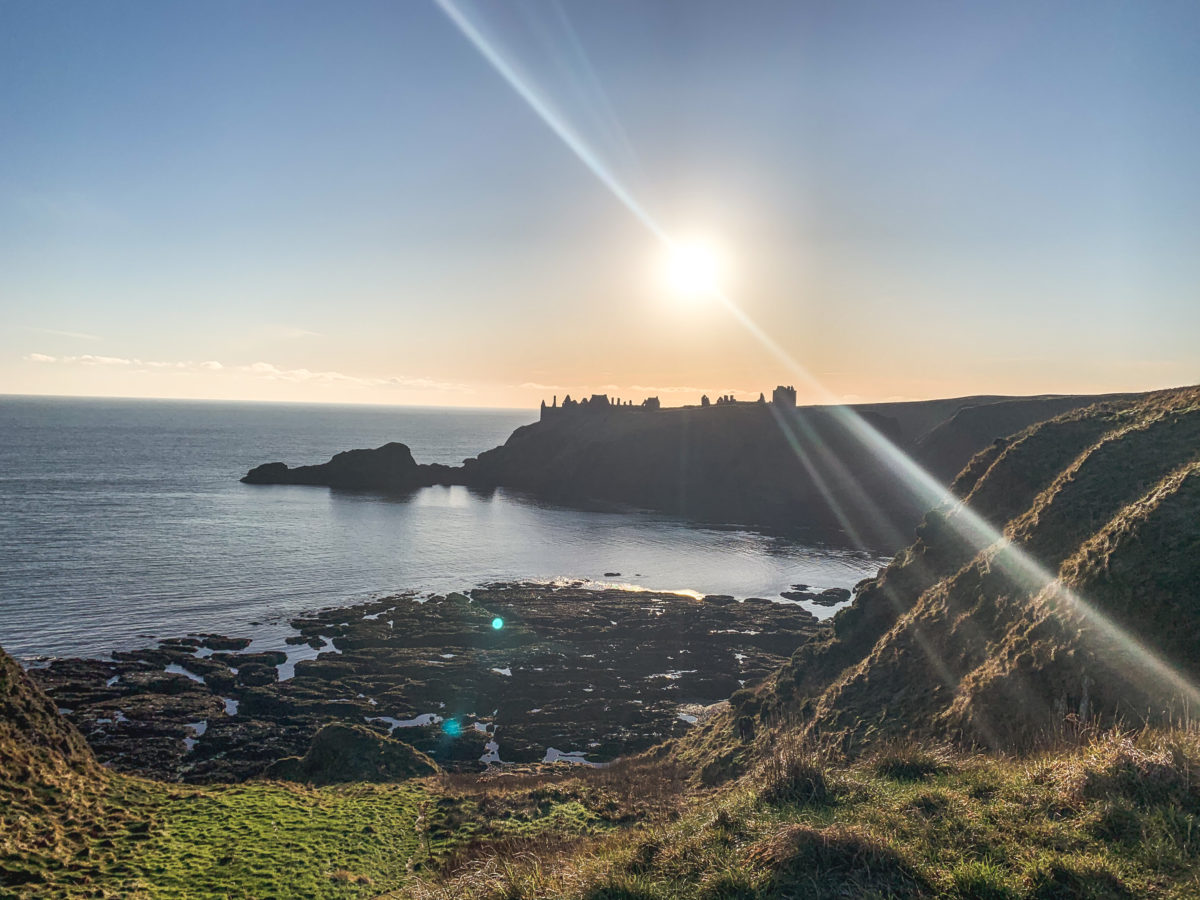

Arguably one of the finest castles in Scotland, the medieval fortress of Dunnottar stands atop high cliffs two miles south of Stonehaven. Although the castle fell into disrepair nearly 300 years ago, it has lost none of its charms. In fact, that’s all that makes it more attractive than some fully restored castles. And ruins are synonymous with legends and mystical atmospheres.
To make the experience perfect, I recommend that you start walking along the coastal path before you see the ruins unfolding in the distance. The scenery is stunning, with countryside and sea, sheep and seabirds and cliffs and pastures.
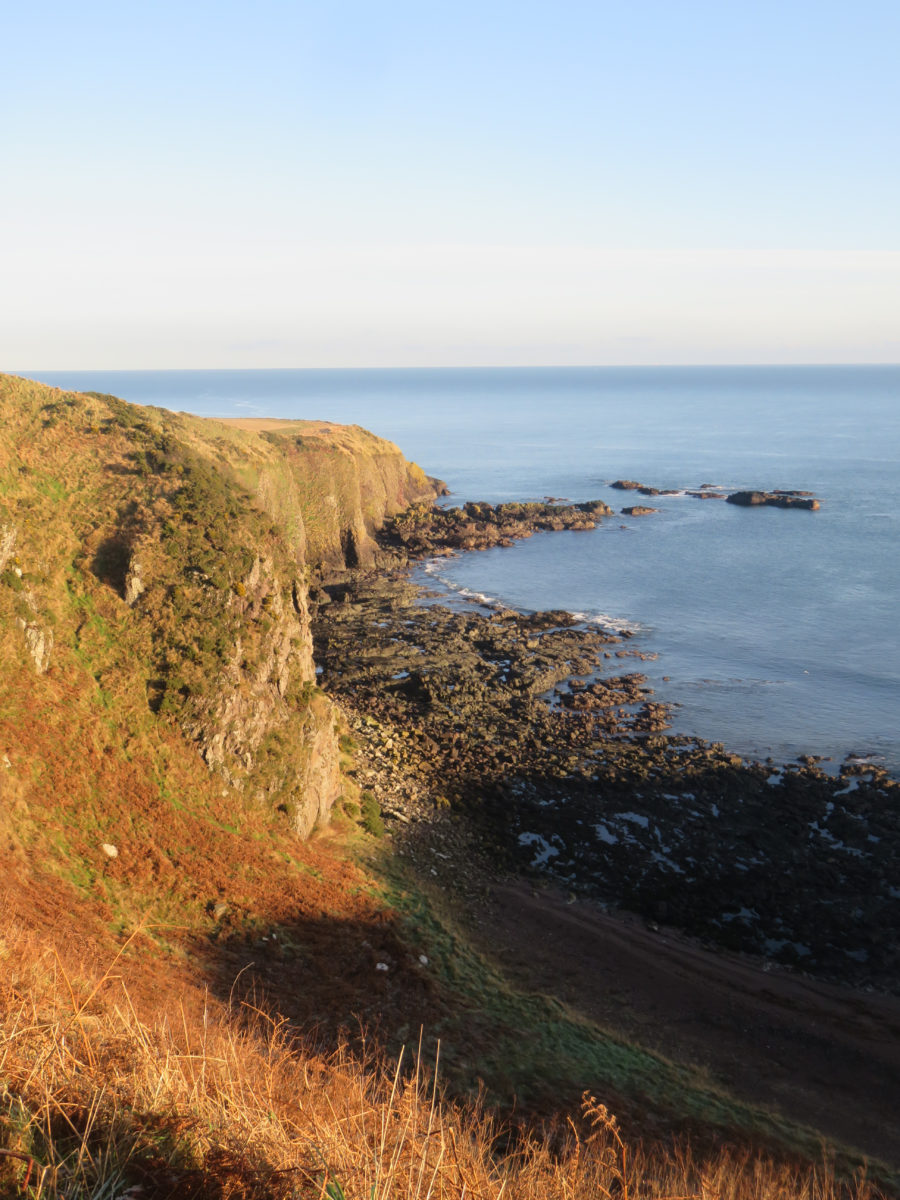
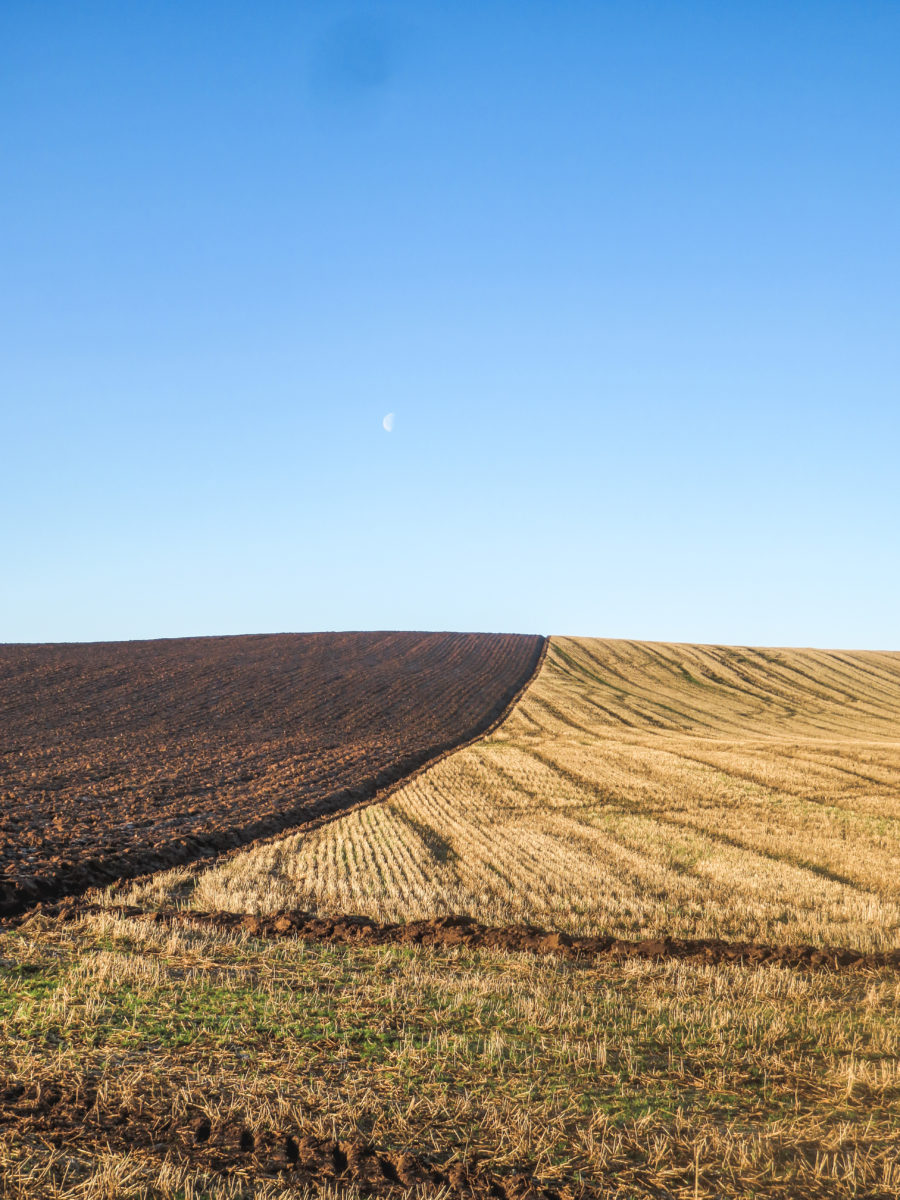
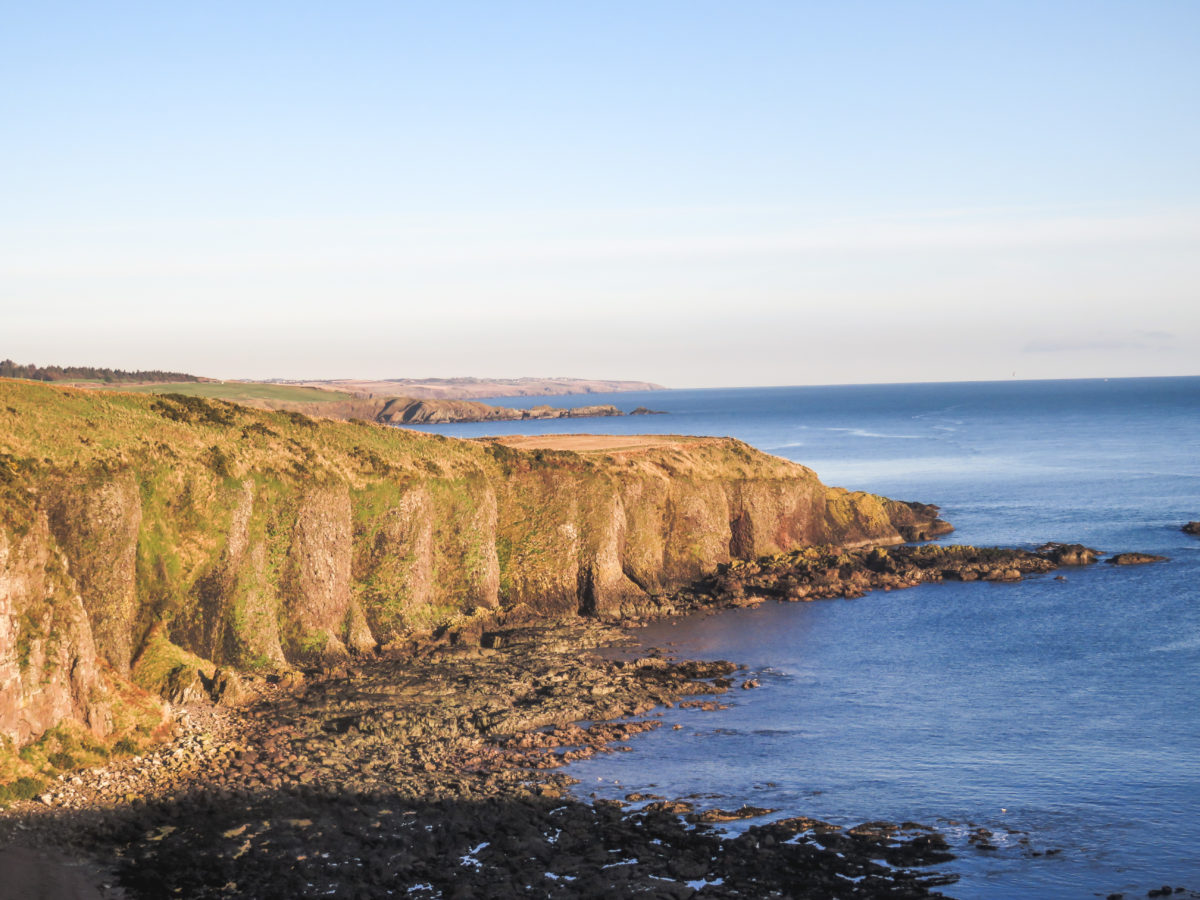
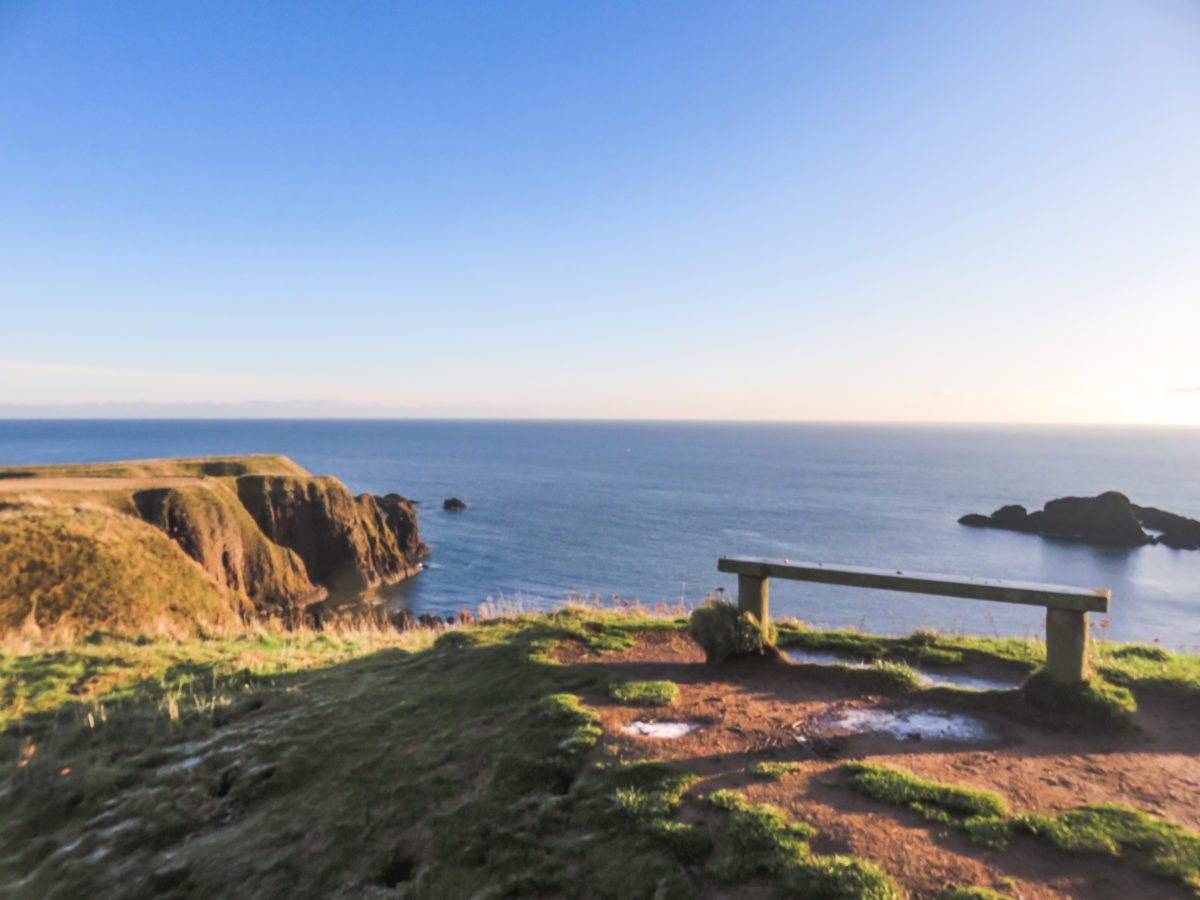


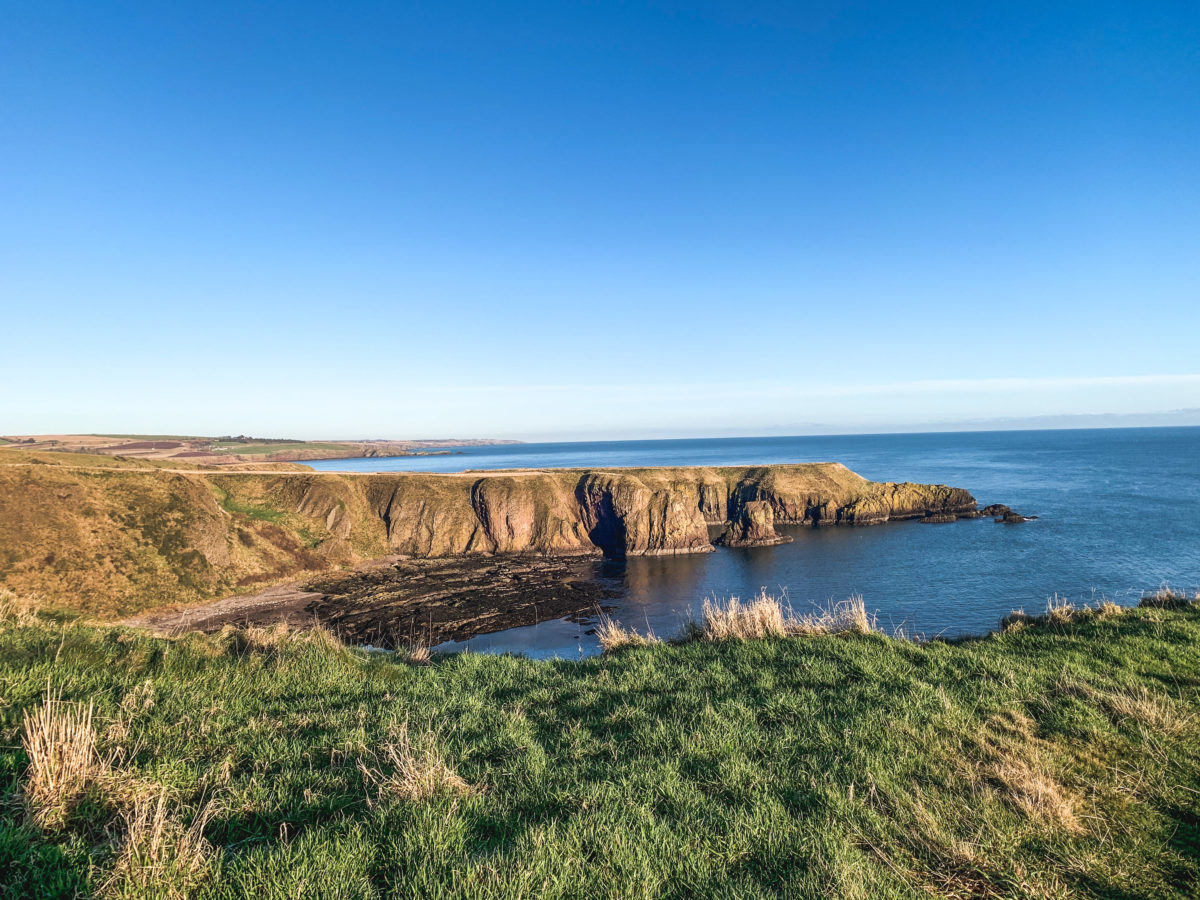
On the way, you can also pass the Stonehaven War Memorial. This memorial was built in 1921 to commemorate the dead of the First World War. Designed to resemble a ruined Greek temple, it serves as a symbol for the lives cut short and ruined by the war. More names were added to the monument after the Second World War.
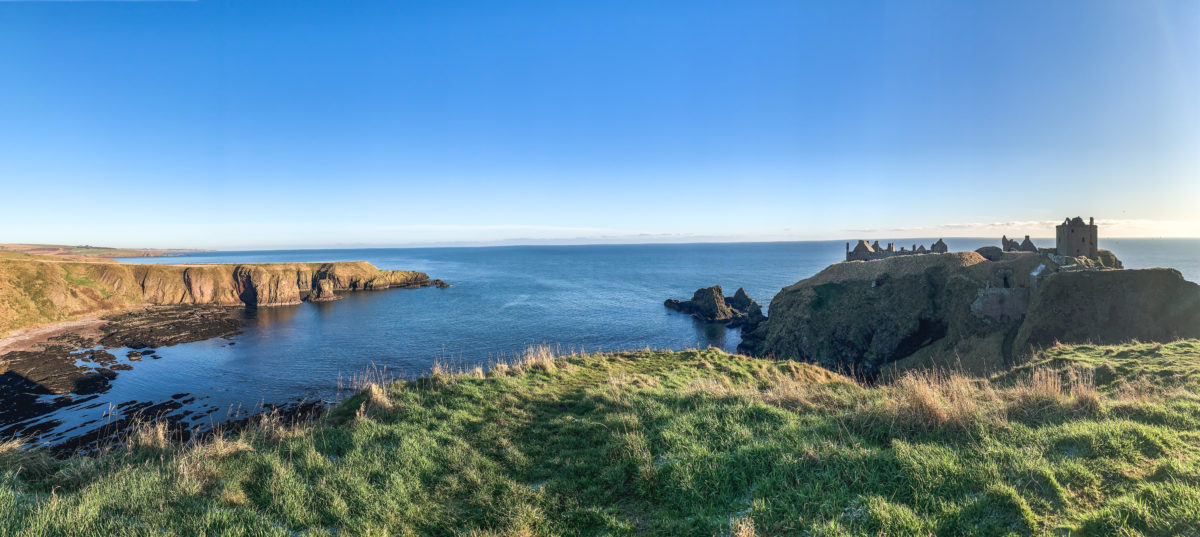
And then, after a short 40 minutes, Dunnottar Castle finally appears resplendent in absolute beauty, standing proudly on its hillside overlooking the sea. It is said that on a clear day you can even see seals, puffins and sometimes whales going about their business. Of course, we will not see any of them, despite the bright sun.
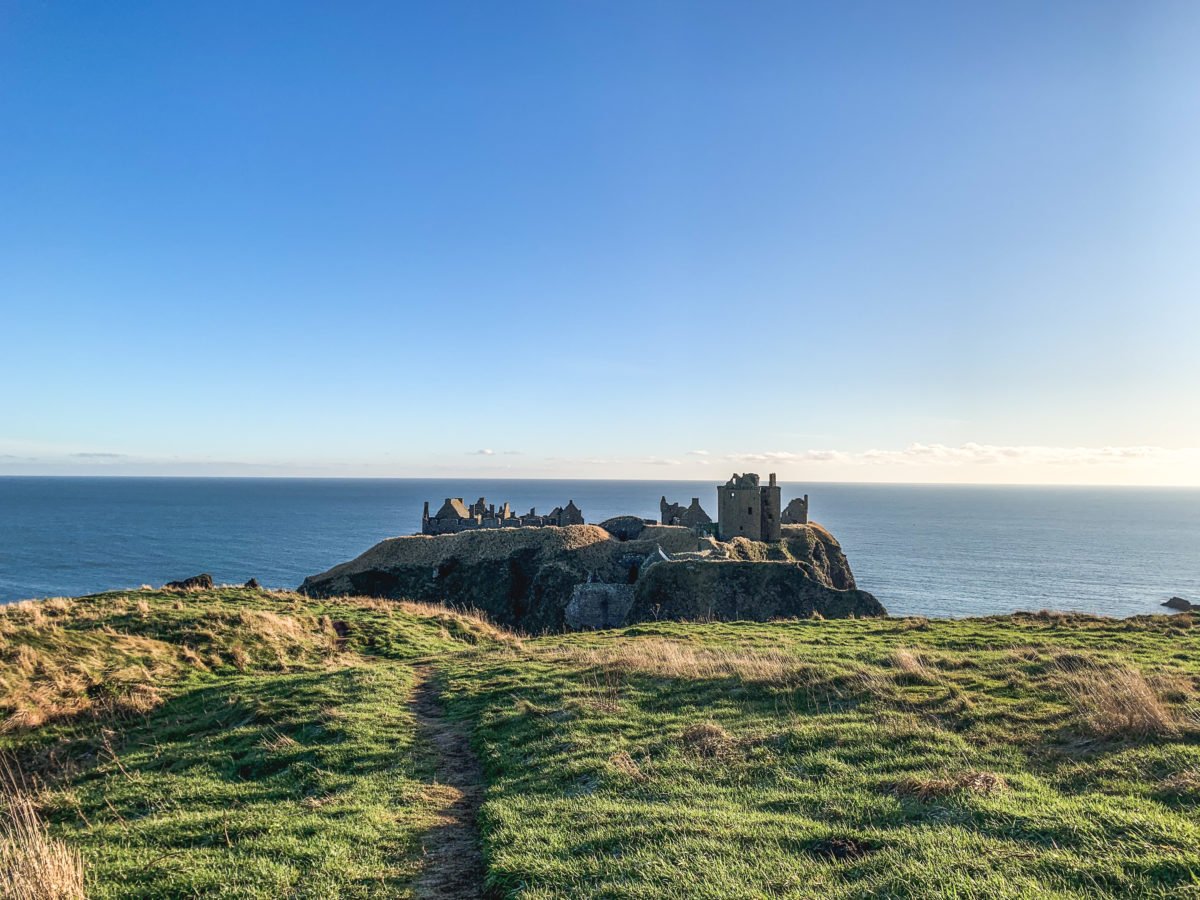
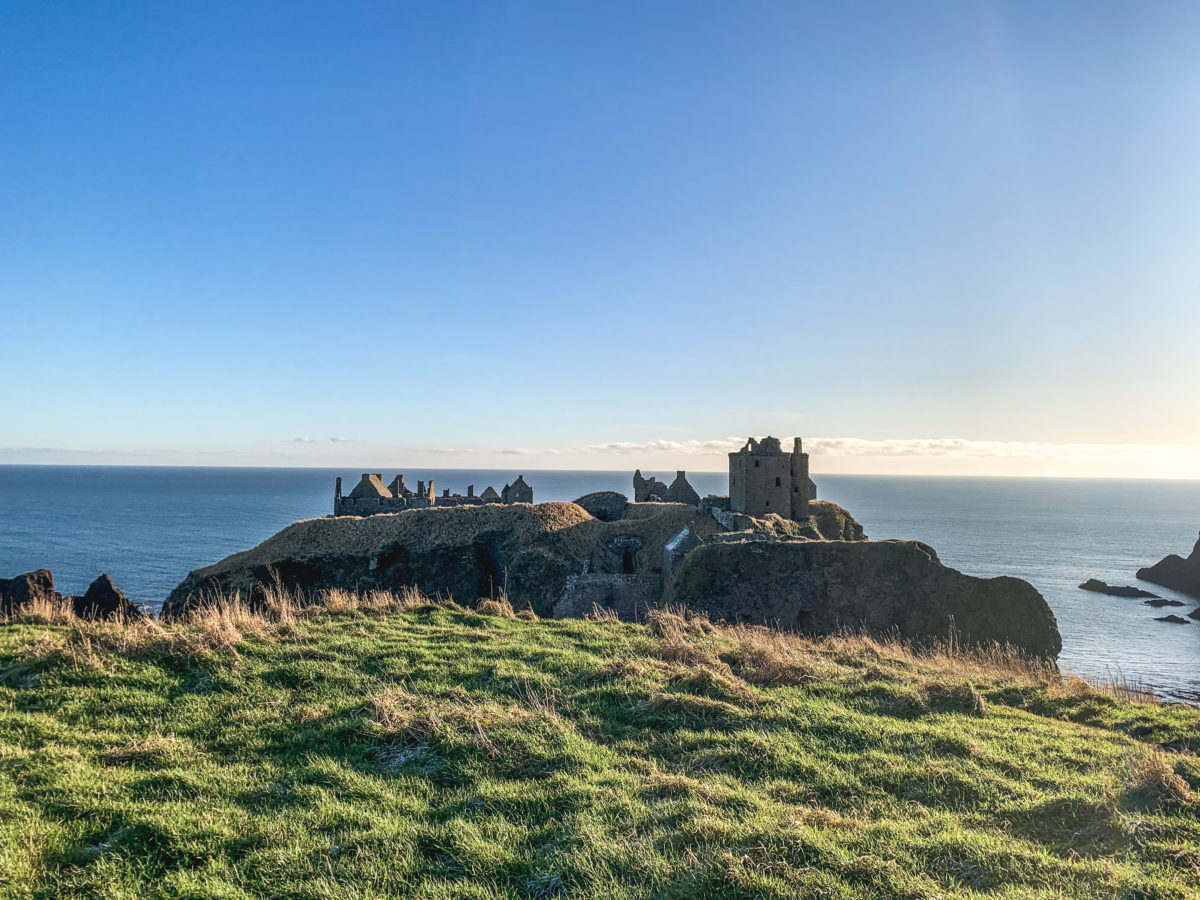

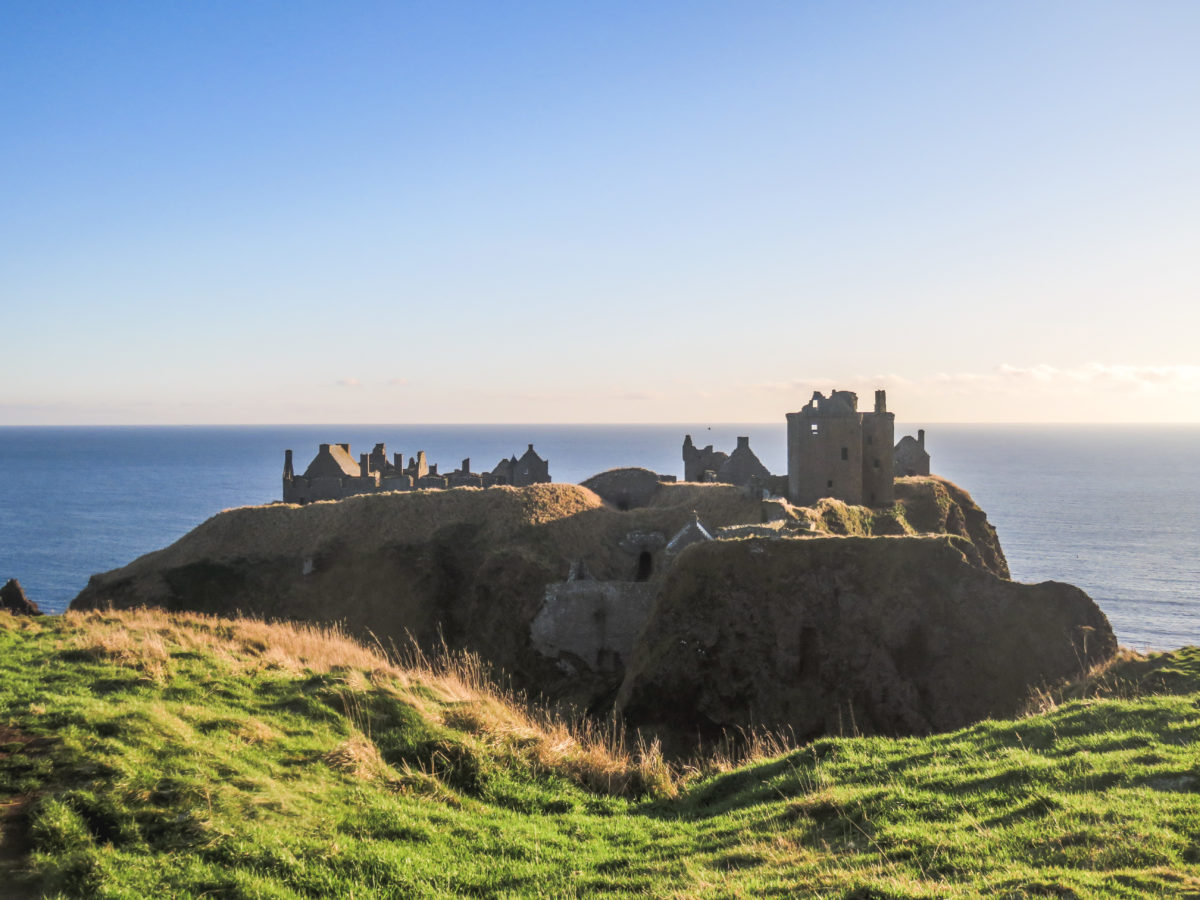
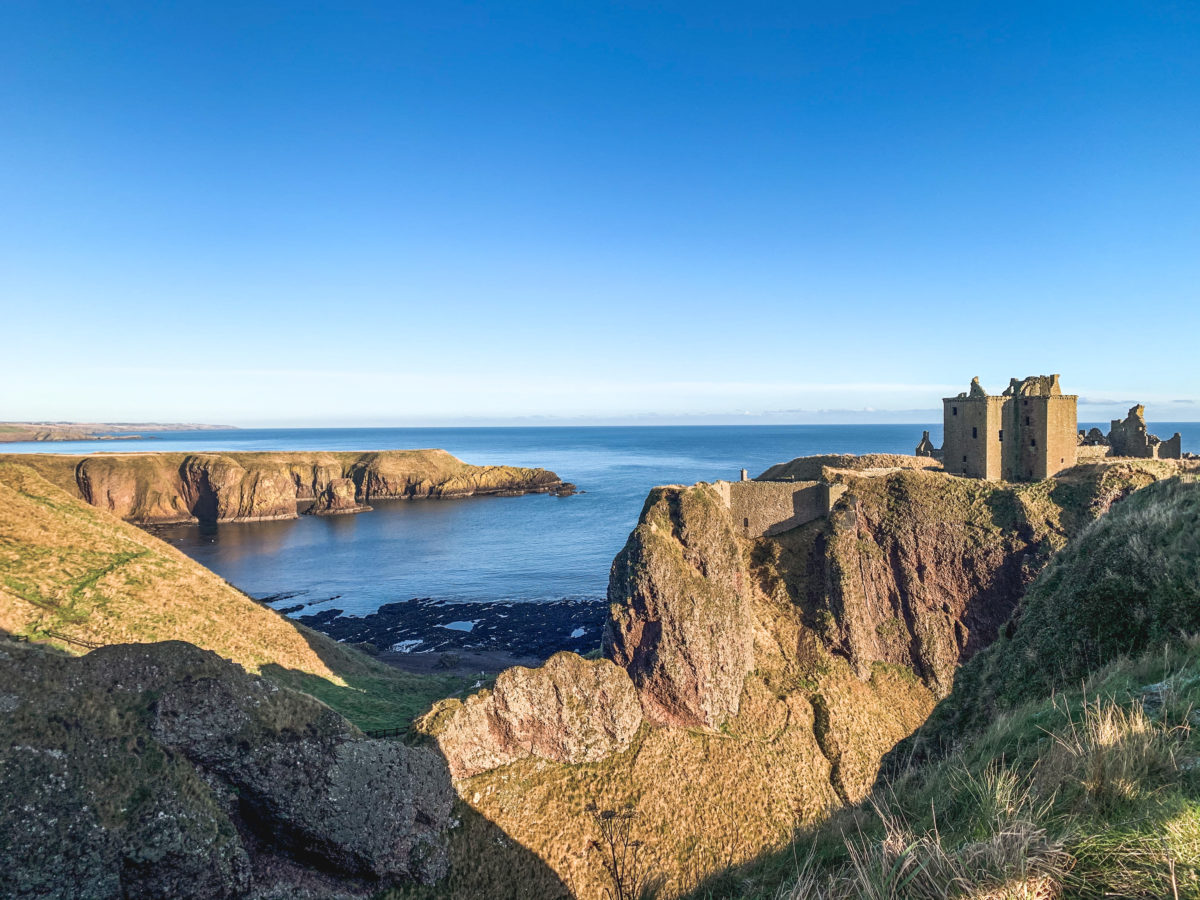
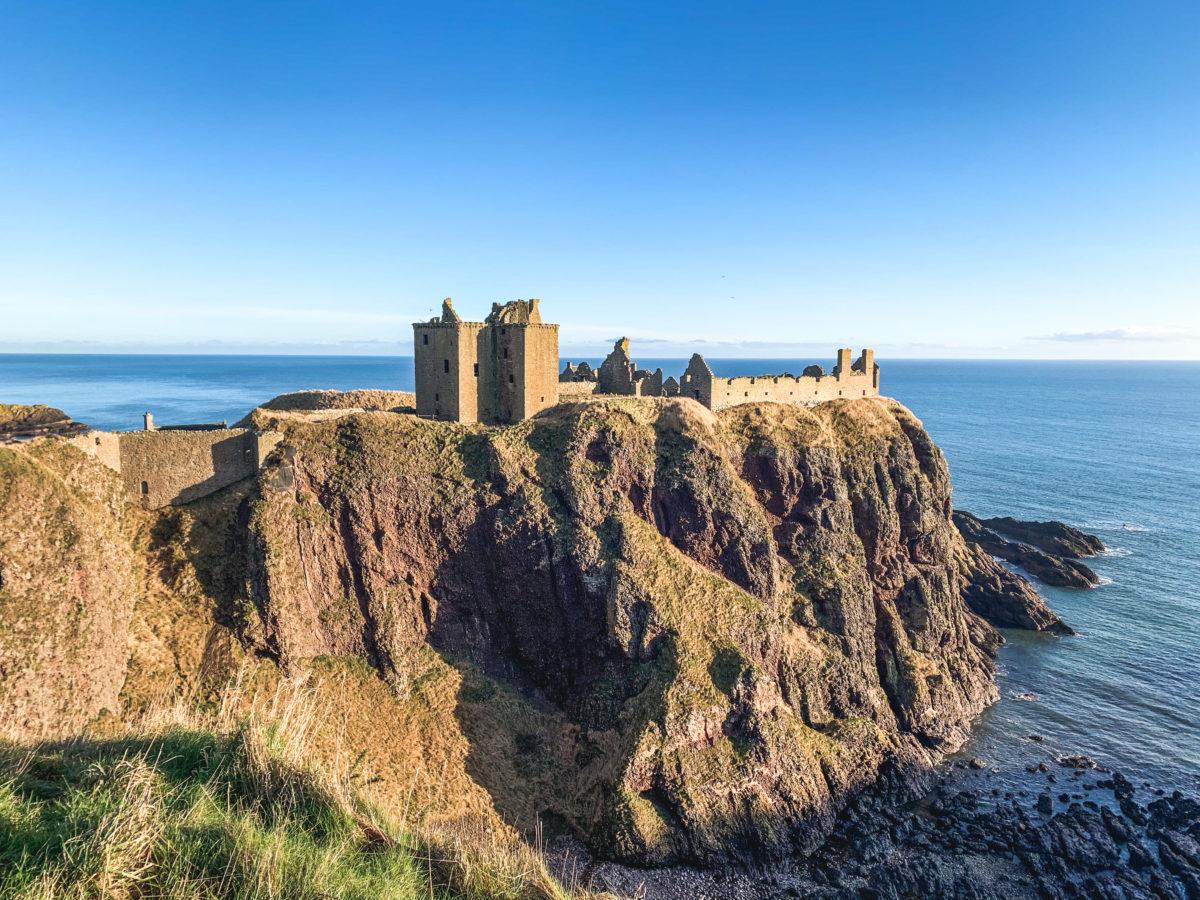
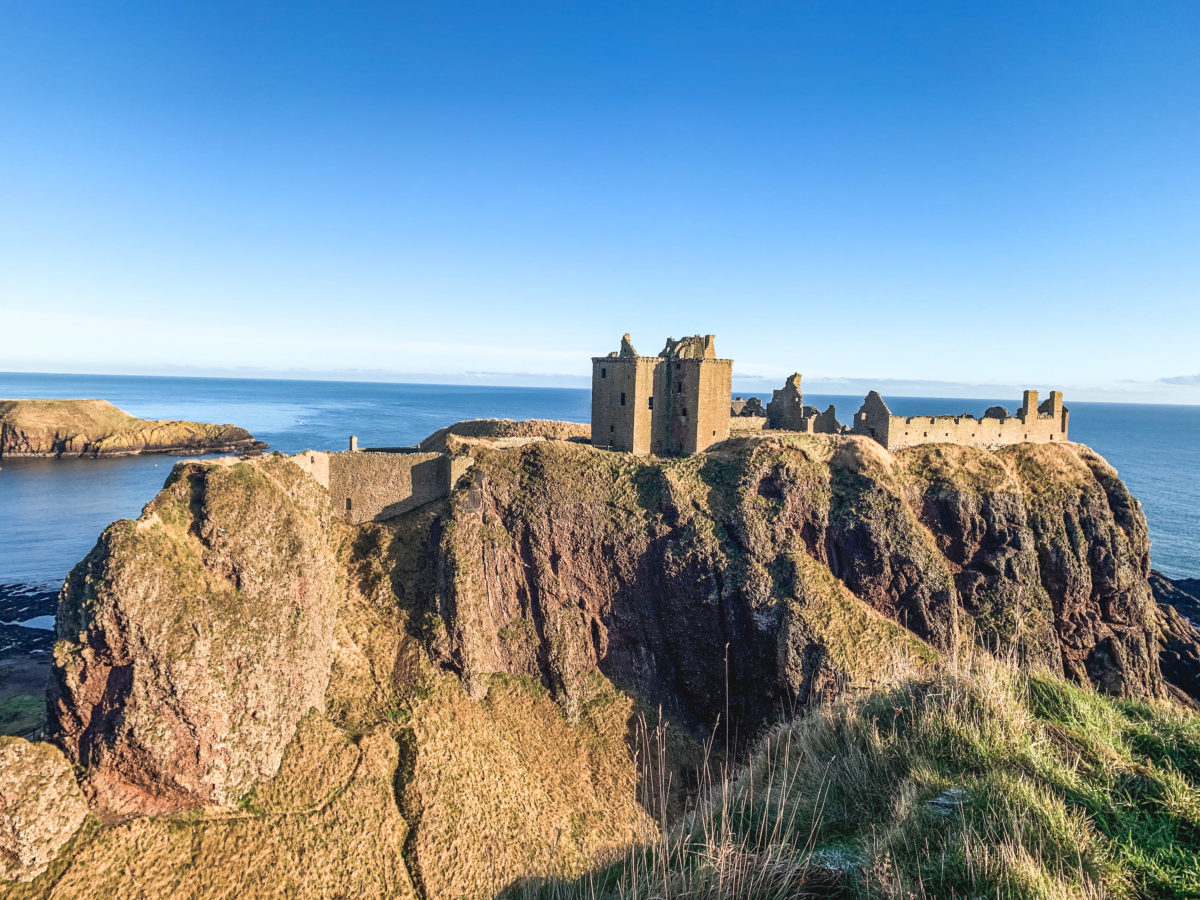
As we had to take the bus to Aberdeen, we did not have as much time as we would have liked to explore the interior of the castle. As it sits on a steep promontory, you have to climb some stairs to get to the ruins and then visit the castle and learn more about its history. I’ve already given you enough of the history of several monuments in this article, so it will be easier to go here to discover Dunnottar’s past!

The A92 national road passes by the monument, which allowed us to take a bus towards Aberdeen. The bus stop is called Dunnottar Junction and after 45 minutes you will disembark in the granite town.
Aberdeen
We arrived in Aberdeen in the early afternoon and were surprised to discover a city different from those we had previously visited in Scotland. Aberdeen is not as charming at first glance as Edinburgh and is more likely to be compared to Glasgow, for its industrial aspect. It is the third-largest city in the country, after the two mentioned above.
But it is unique in that a large majority of the buildings are made of granite, which makes it look white and shiny on a sunny day, which it was for a few hours before the city became dull and dark when it rained. Yes, granite gives the city an attractive glow, but when low grey clouds roll in from the North Sea, it’s sometimes hard to tell where the buildings stop and the sky begins. Irreversibly, a Scottish city: always two-faced.
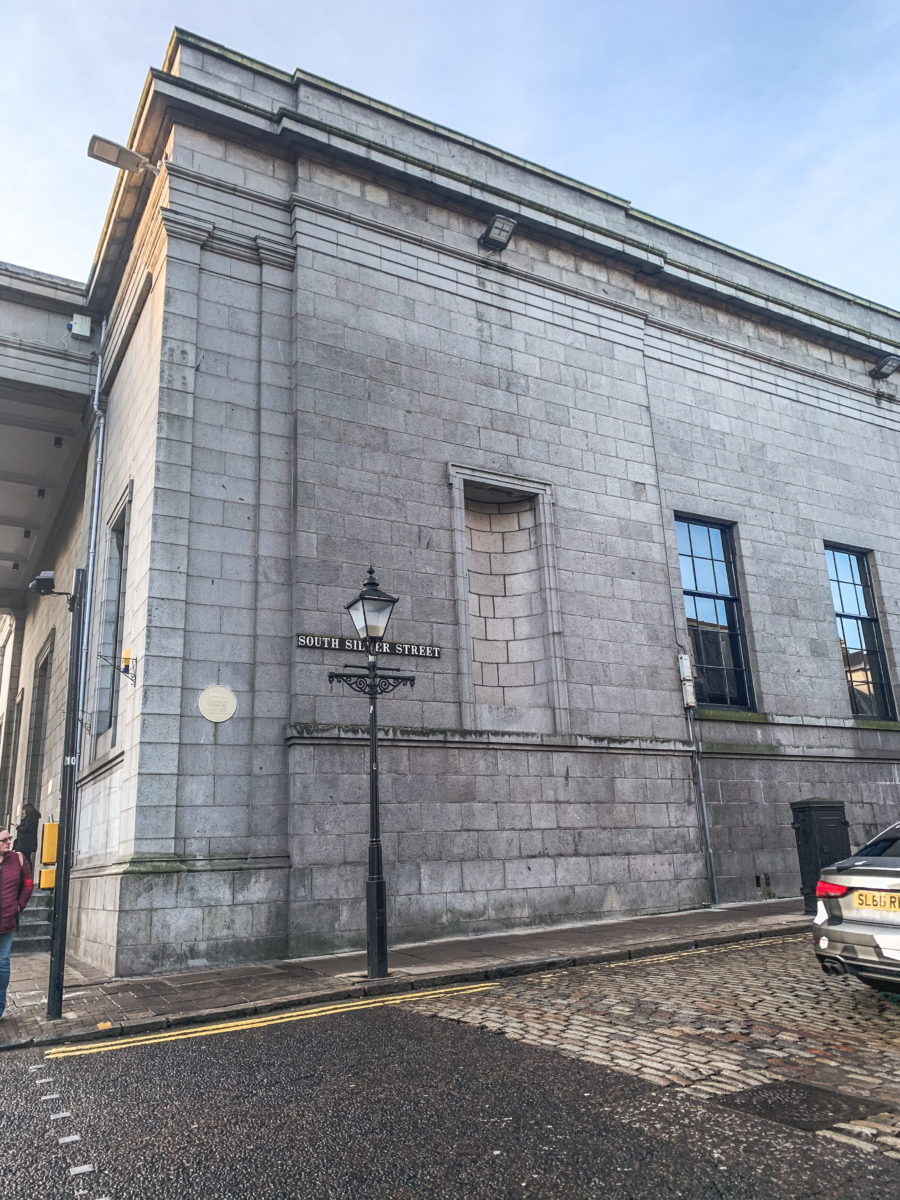
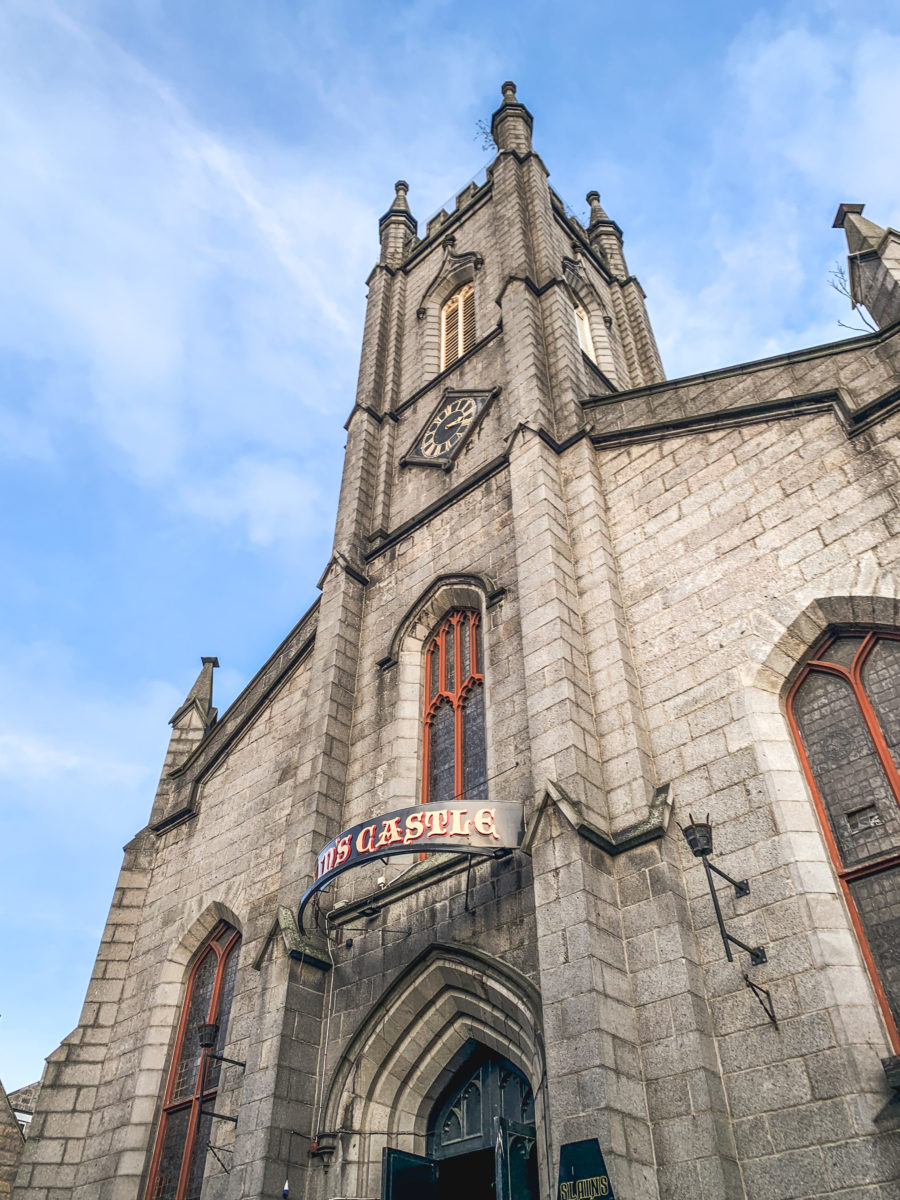
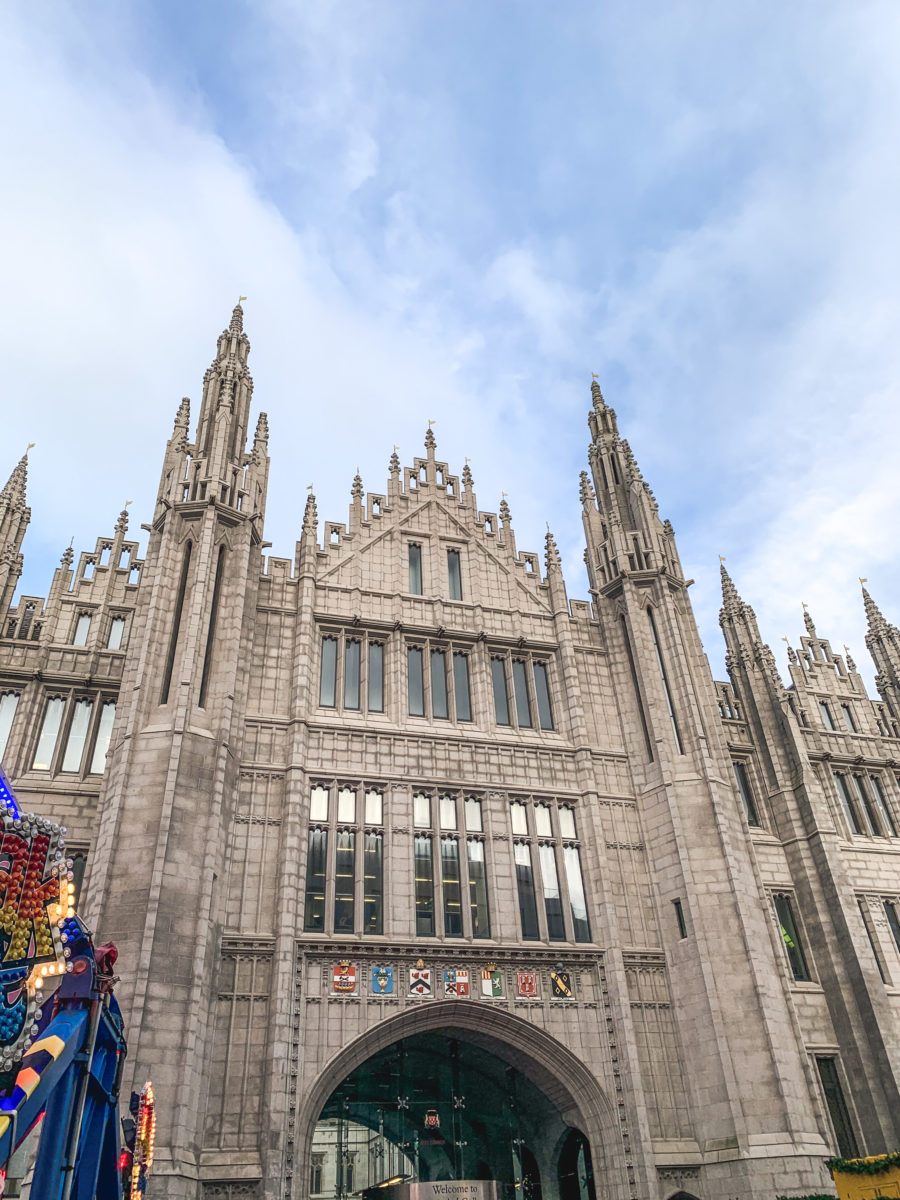
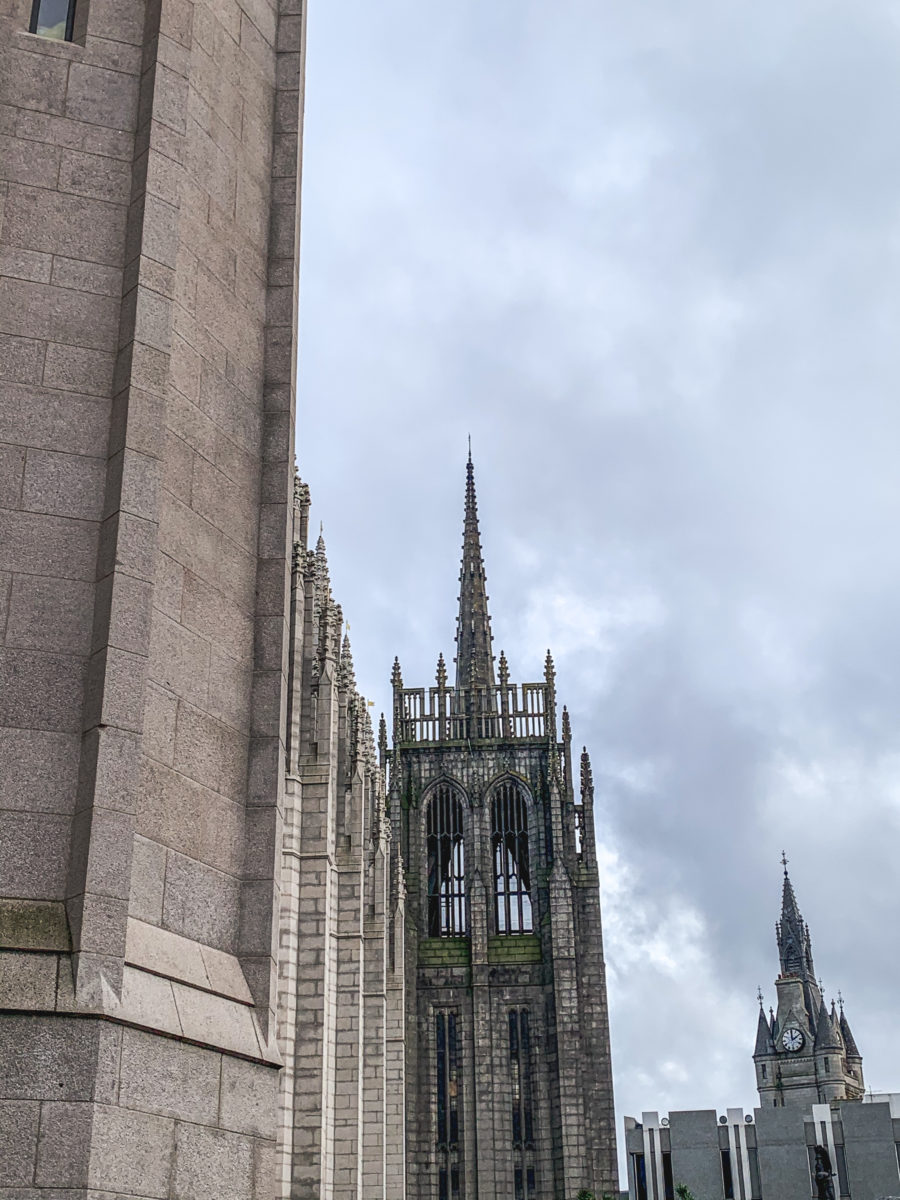
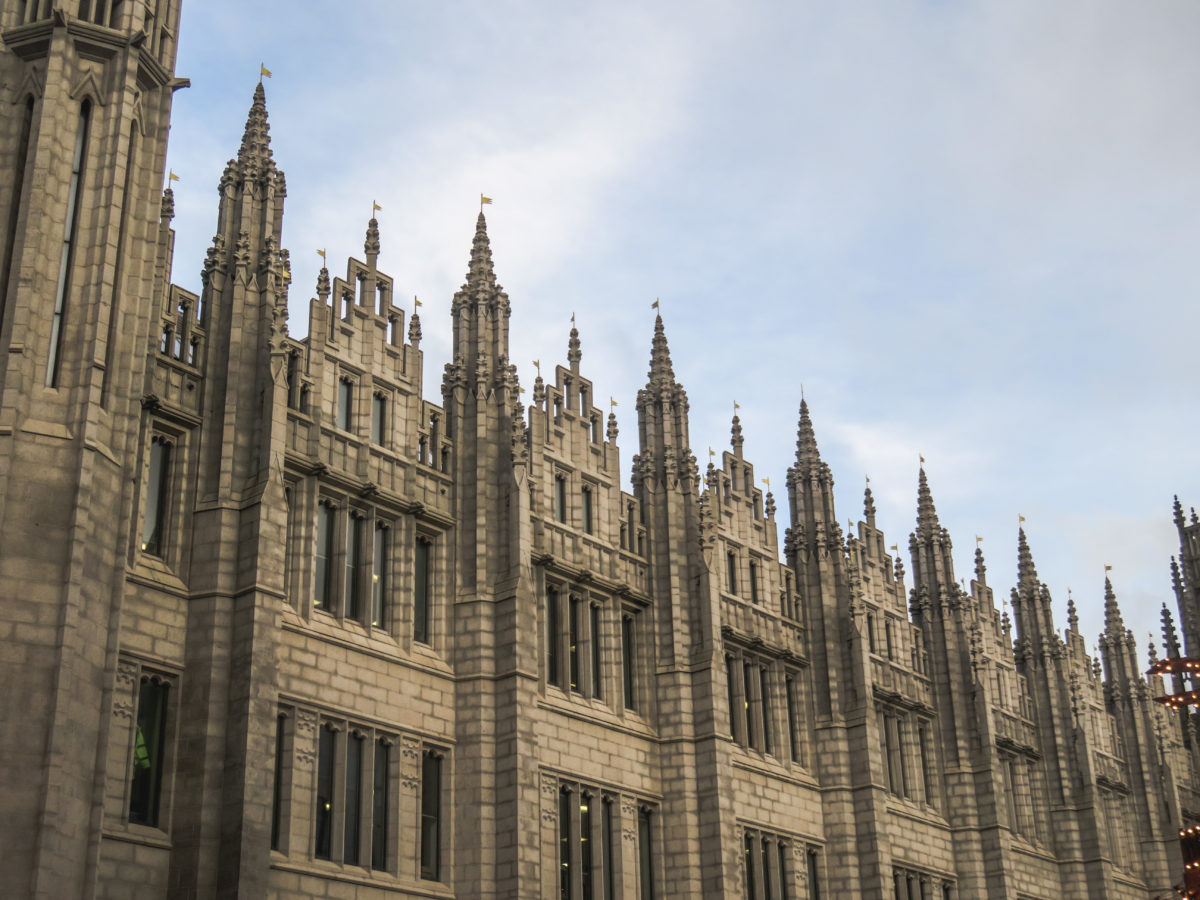
We got off the bus at Union Street, Aberdeen’s main street which is full of shops, boutiques and shopping centres. It really is a shopping destination, even offering shops that are not available in Glasgow or Edinburgh. With the weather becoming a bit unpredictable, we will end our Aberdeenshire trip doing some shopping, but this is not the tourist option we came to Aberdeen for. However, one fact is undeniable: this is one of the richest cities in the UK. I’ll come back to that later in this article, as Aberdeen is the offshore oil capital of Europe.
Although the city is industrial, it does have a few places of great beauty. The city centre itself is not really attractive, only the alleys of Belmont Street or Back Wynd are charming. Perpendicular to Union Street, Belmont Street is indeed the charming asset of Aberdeen. Several small shops and a slightly gloomy church make it a lively place, especially with the establishment of a cult place for students and visitors: Books and Beans, a café-library from another time!
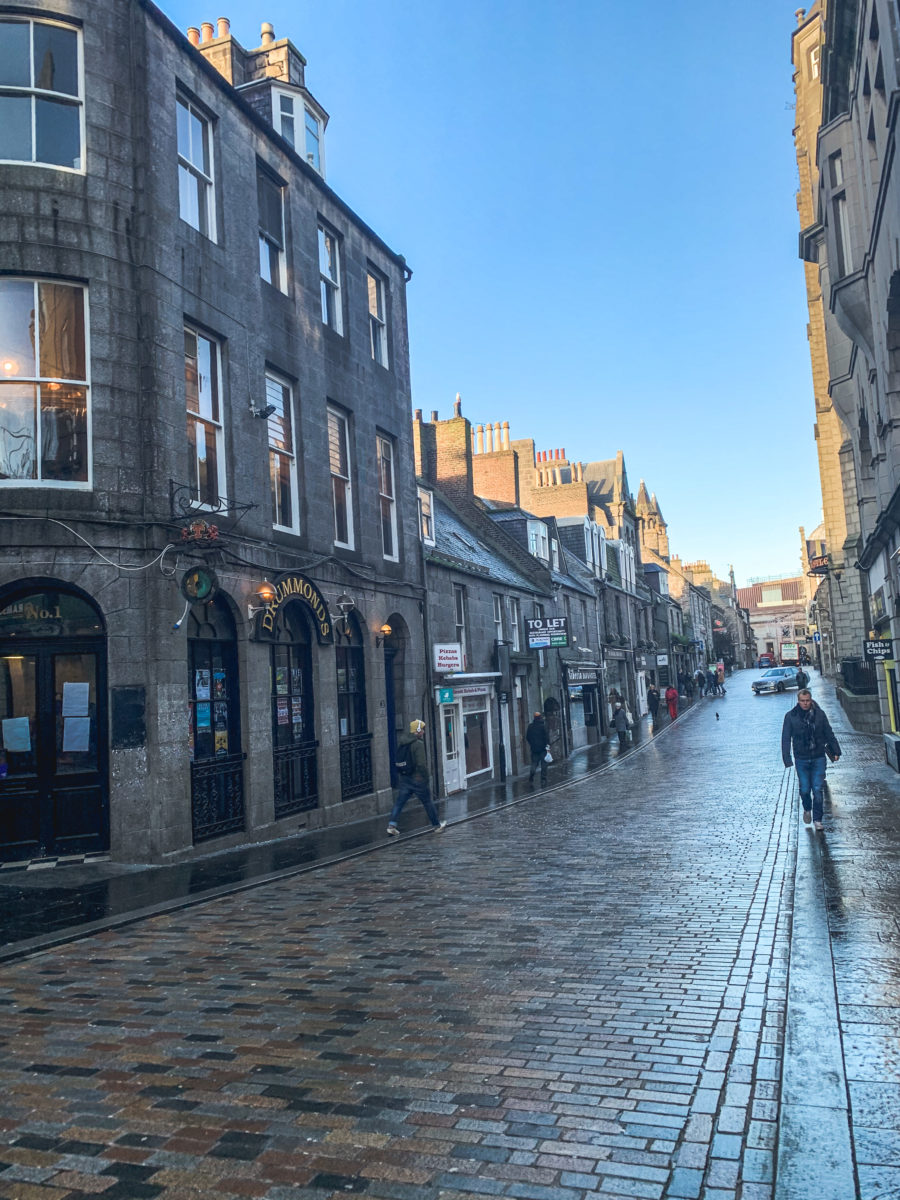


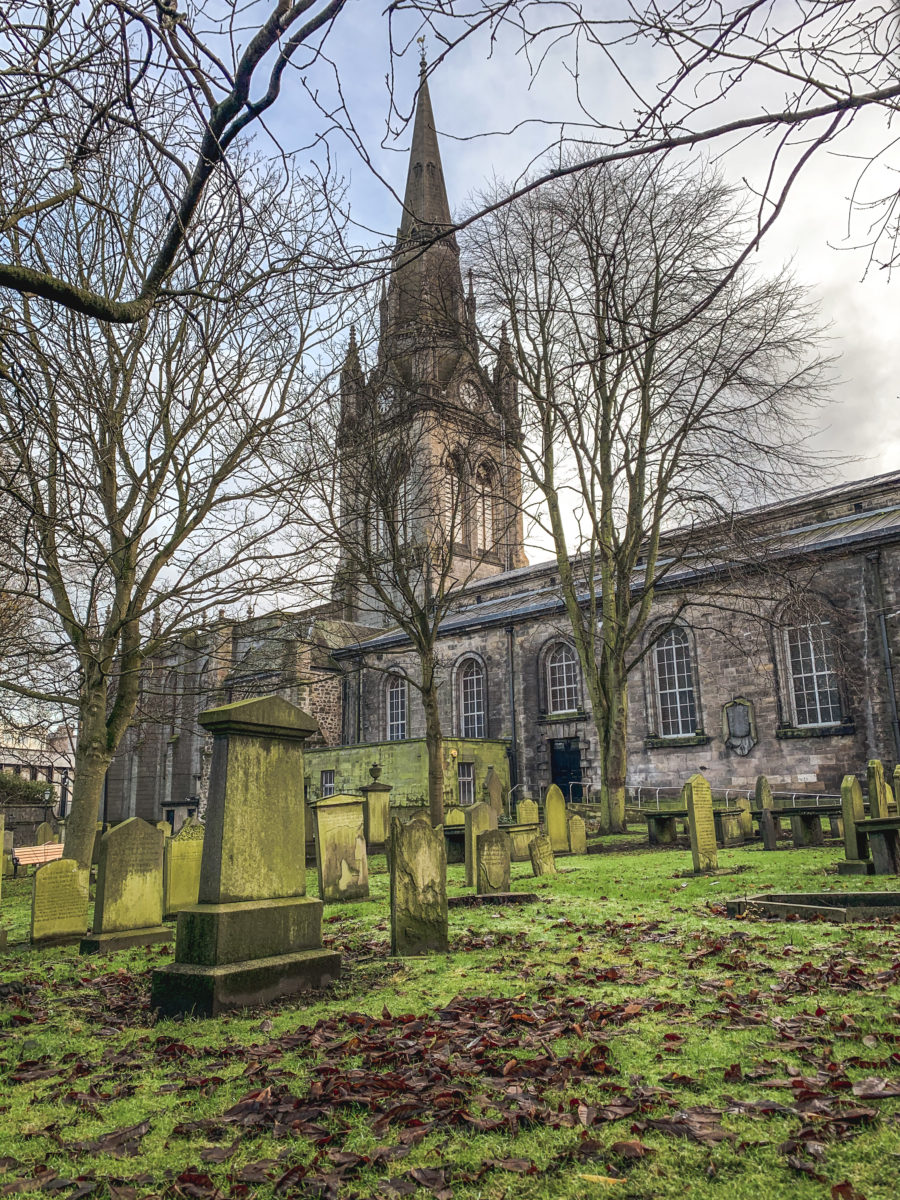
You can then head to Old Aberdeen in the north of the city, which feels like a quiet, cobbled bubble of medieval history against the frenzy of the city centre; it is here that you can explore the university, which is also one of the oldest in Europe, and St Machar’s cathedral. It’s a 30-minute walk, however, which made us hesitate about our next move. As a result, we preferred to stay in the centre and focus on the economic side that gives the city its splendour, its maritime appeal.
Indeed, the coastal town is the gateway to the North Sea for first Scotland and then the UK. This is because of the prolific oil activity that has developed off the coast of northeast Scotland, making it an important economic hub. Aberdeen is fuelled by the North Sea oil industry. Indeed, oil money has made the city as expensive as London, with prices matching the depth of the oil pockets, although regular downturns in the industry see prices fluctuate or fall.
So we set off towards the sea. We passed Castlegate and its famous Mercat Cross. This was built in 1686 by John Montgomery, a local architect. This open-arched structure is a large hexagonal base at the centre of which stands a tree with a Corinthian capital, on which stands the royal unicorn. The base is highly decorated with medallions depicting Scottish monarchs from James I to James VII. According to local legend, the ghost of a unicorn can be seen circling the Castlegate when the full moon is visible.
Interesting, waiting for this one, but we continued walking for about ten minutes and discovered a sort of abandoned amusement park, surely, this being due to the fact that it was December. This kind of park is typical of British seaside resorts, as evidenced by the one at Portobello near Edinburgh or in the southern cities of Brighton or Eastbourne.
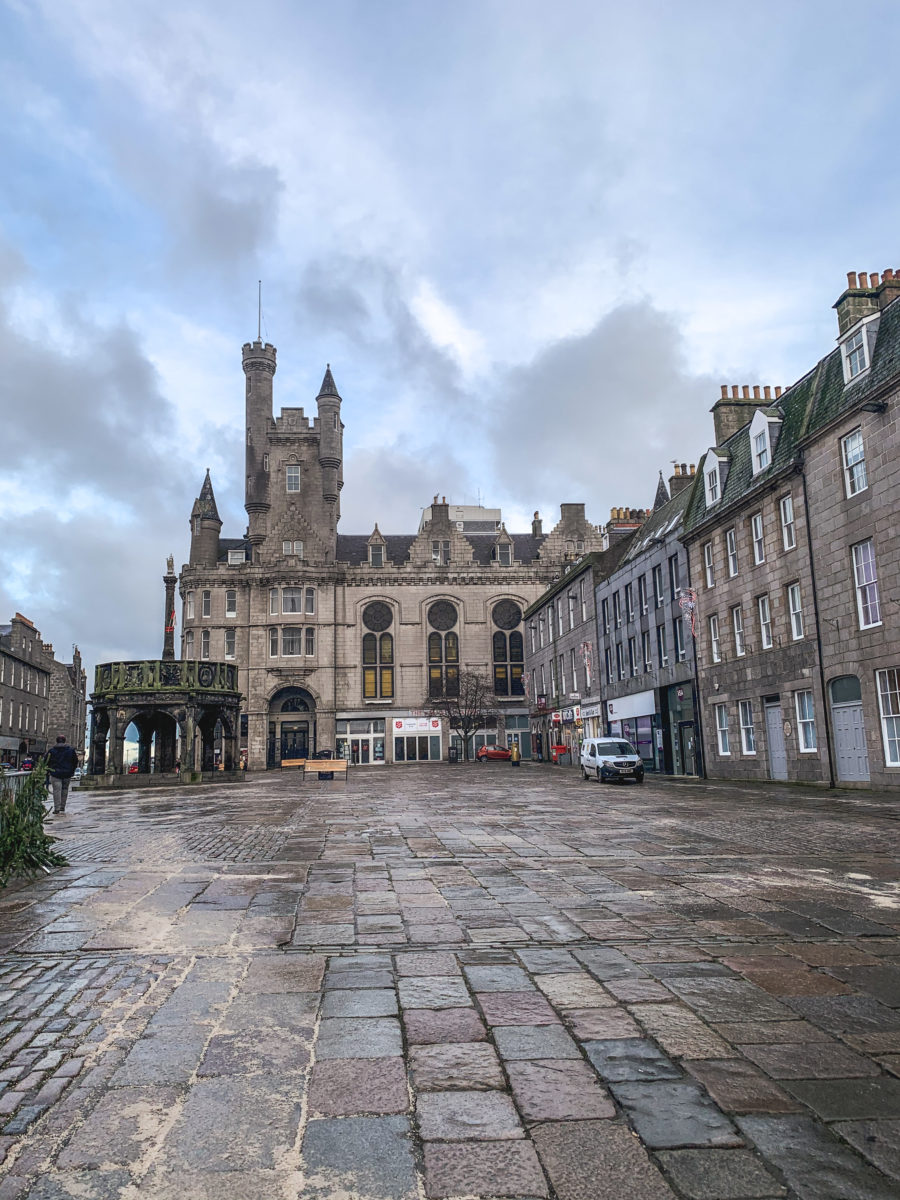
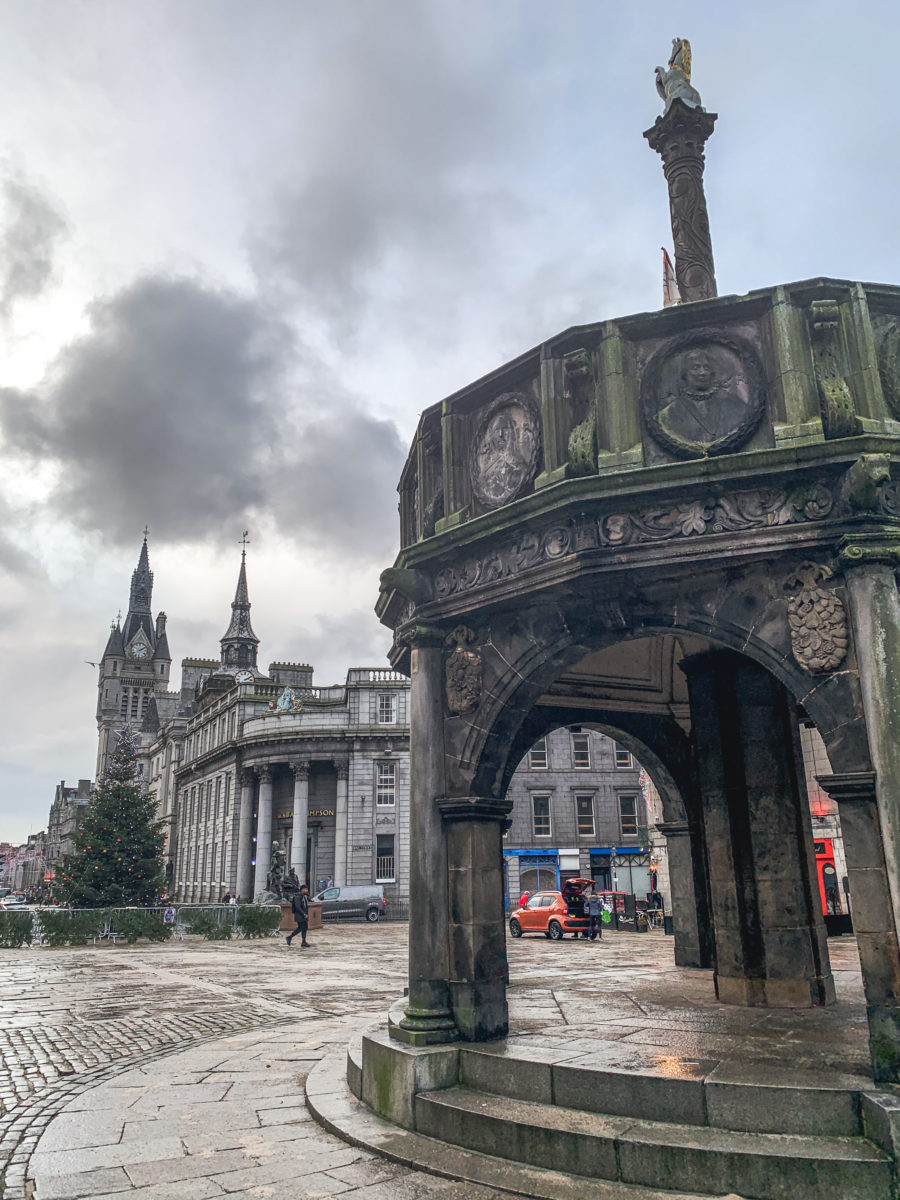
Although the weather was overcast, it was nice to walk along the water’s edge, to see these long stretches of sand, and this without deckchairs galore. It stretches for 3.5 kilometres from the mouth of the River Don to Aberdeen Harbour.
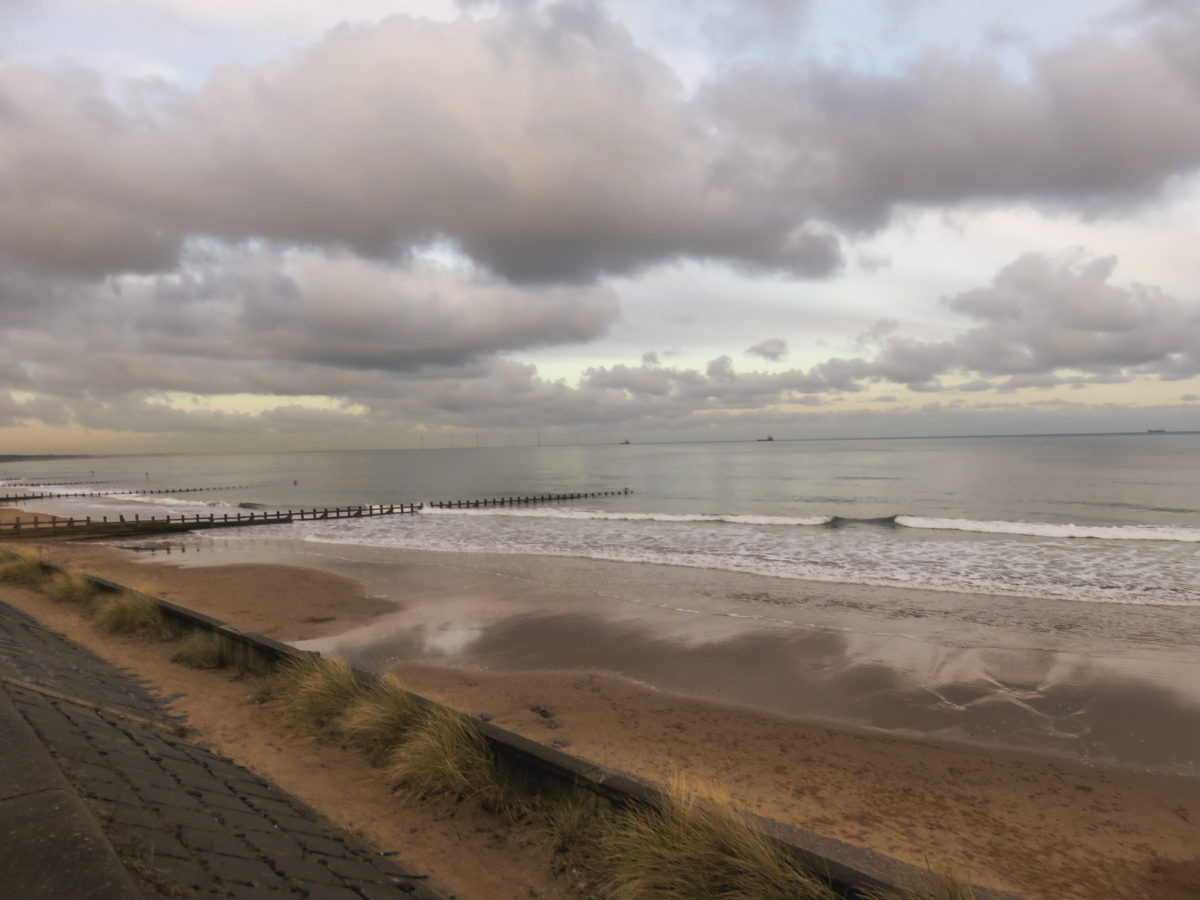
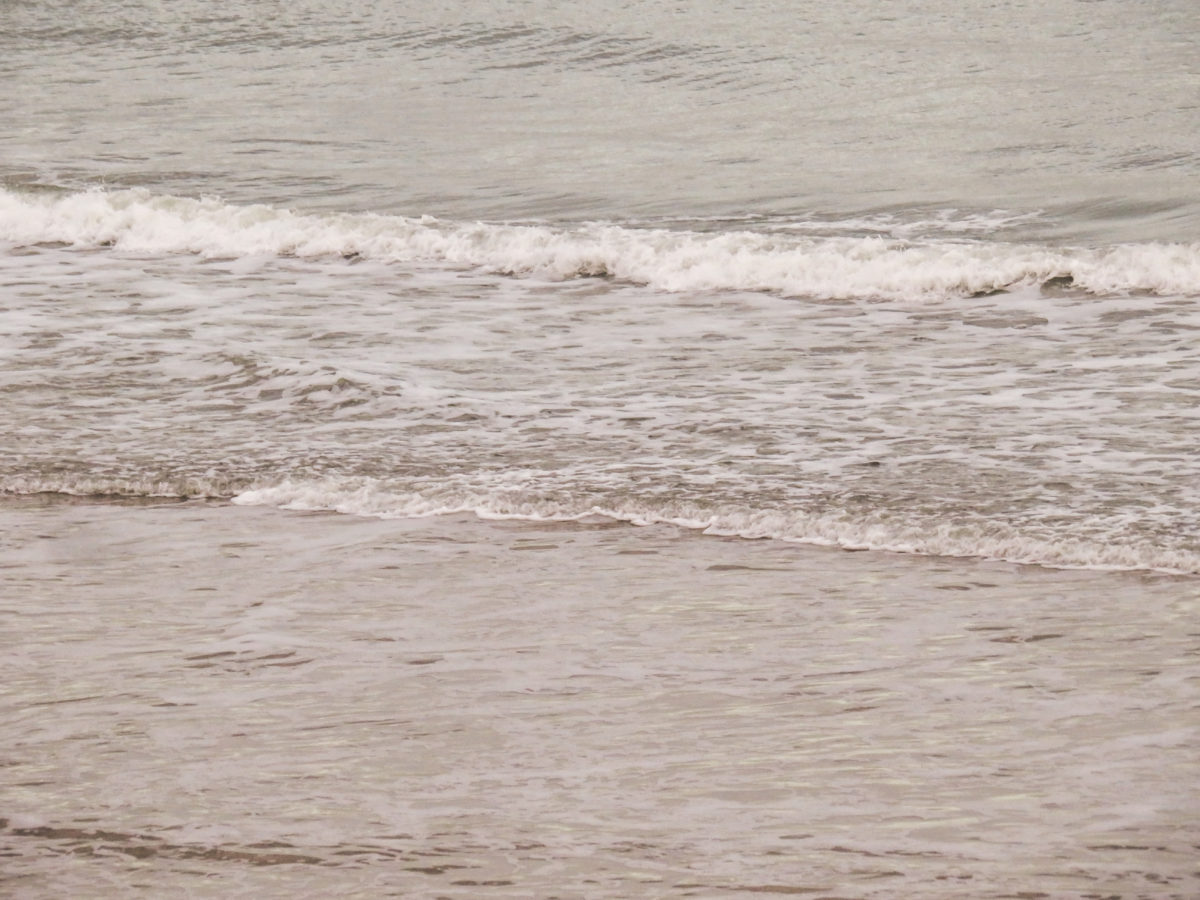
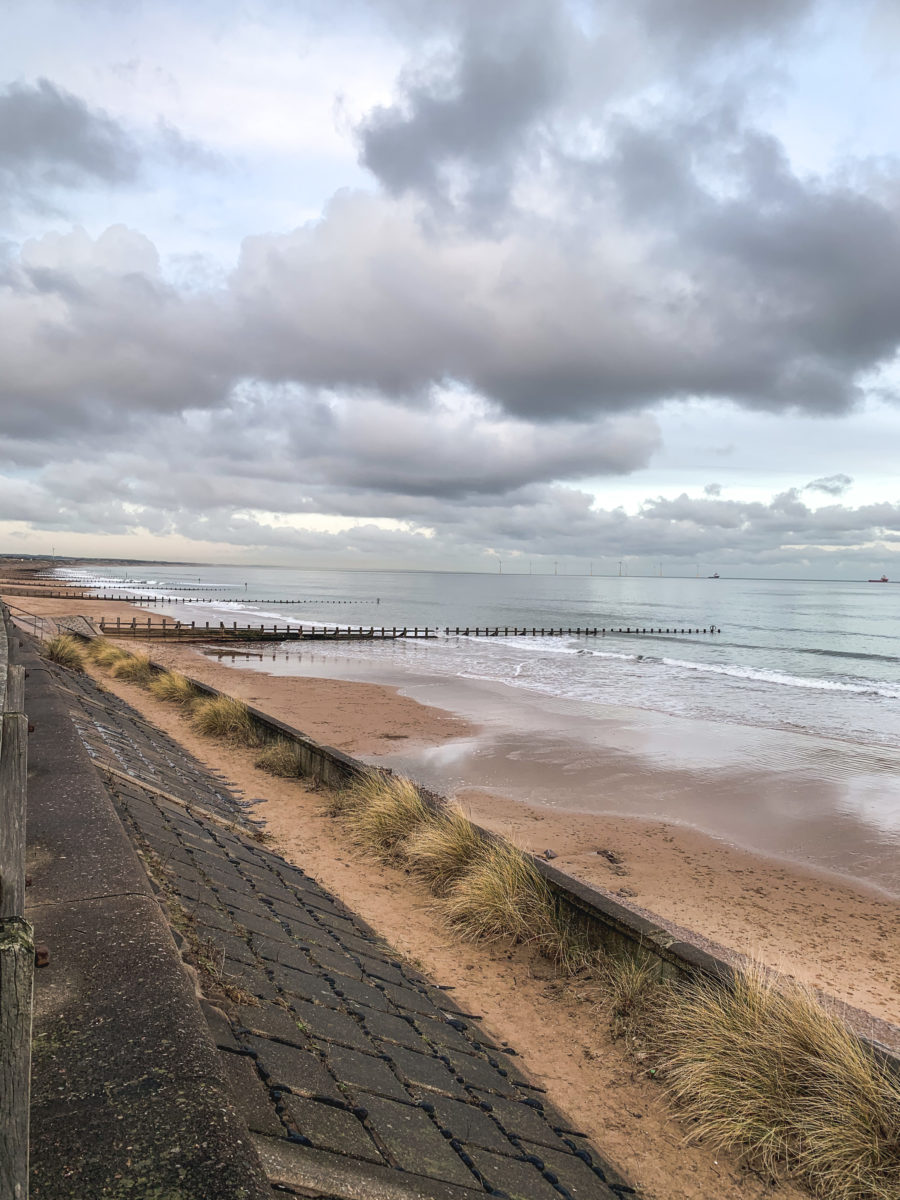
It is to the harbour that you should then head, walking along the pier. The harbour is huge and includes an industrial zone. Between big ships, ferries, and small boats, there is something for all maritime tastes. I was even going to check on the internet for potential northern island destinations from Aberdeen. The appointment was made for Orkney and Shetland.
There is even an area in the heart of the harbour that was specially designed for fishermen. It is called Footdee. A small town within a town where the fishermen had their own dialect and created a nice community in the middle of the industrial area.
The harbour really took off in the 19th century with the fishing of various animals, then shipbuilding and the steel industry.
If you are interested in all this in more detail, you can visit the Maritime Museum. You won’t be able to miss it with its modern glass entrance, even though it is housed in an old building. And it’s free!
As the weather cooled, we decided to go for a coffee, before our meal at the best burger restaurant in town (according to friends in Edinburgh). My paper guide advised us to go to the Bonobo Café in Skene Street. It’s a great place for a coffee break.
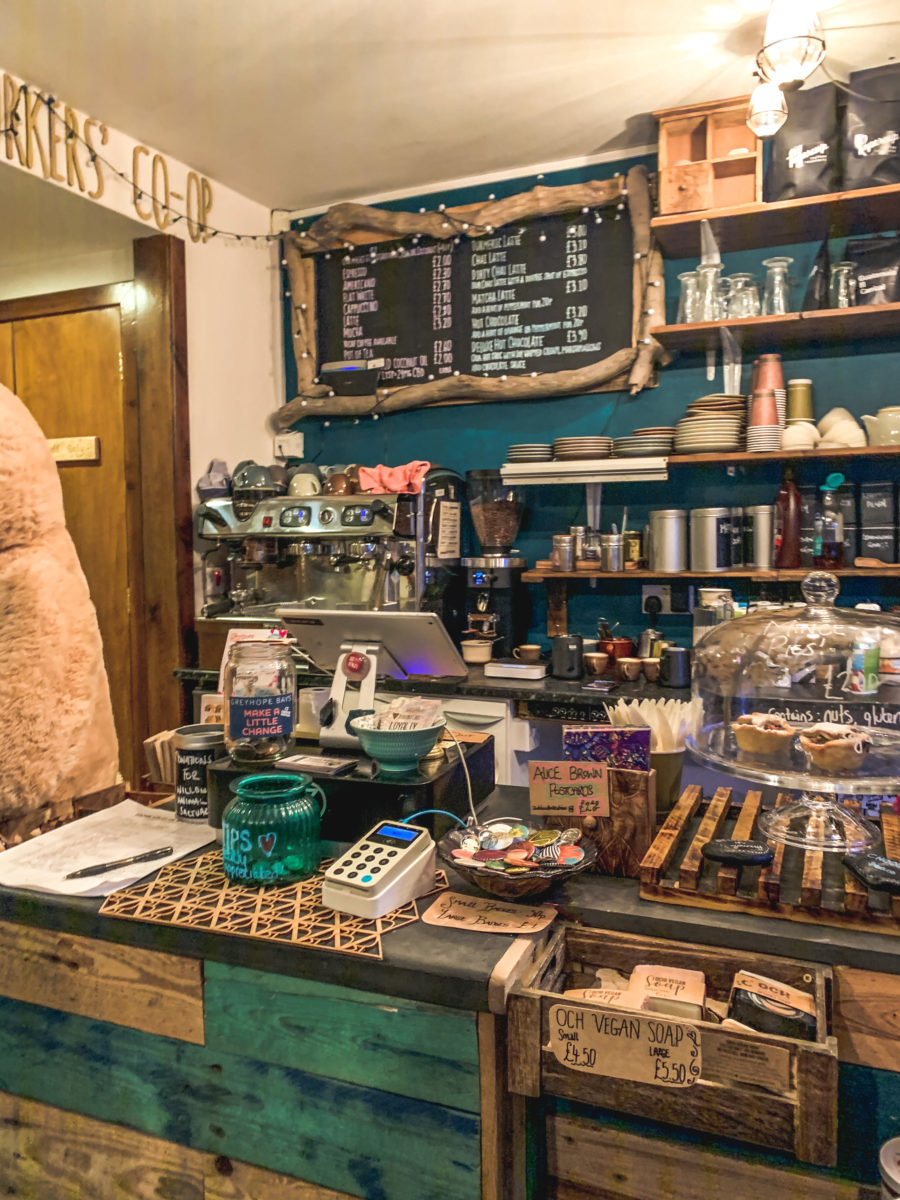
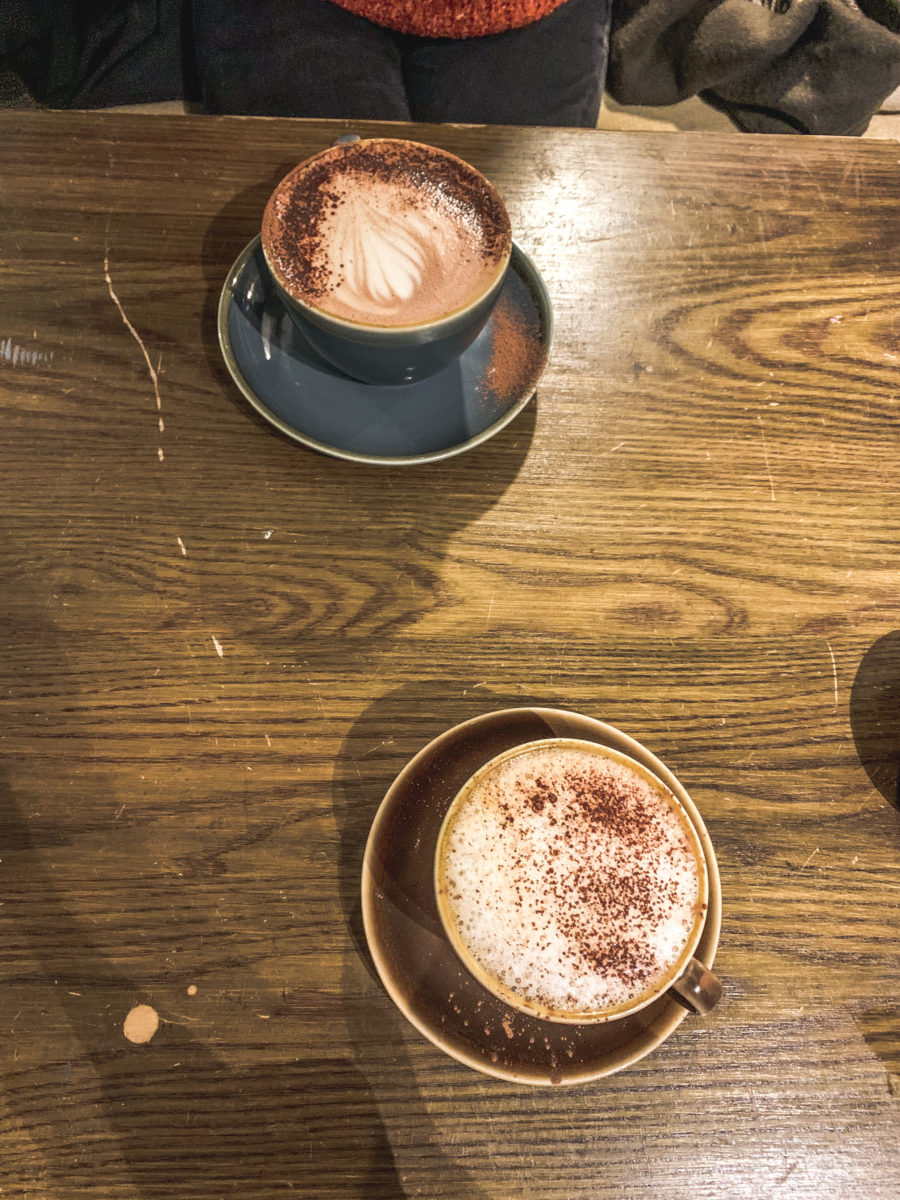
Then we finished this northern Scottish escapade, at Angus & Ale (don’t you think that would make a nice name for a folk music band? I just have to find a guy named Angus…). Well, Angus here is the name given to Aberdeenshire beef, reared with respect and with an art that gives its fame an international sphere. And Ale, I’m not kidding you that this is related not to me, but to beer. So Aberdeen Angus beef and craft beers are the specialities of this little gem located in an alley off Union Street. Probably one of the best burgers of my life!
